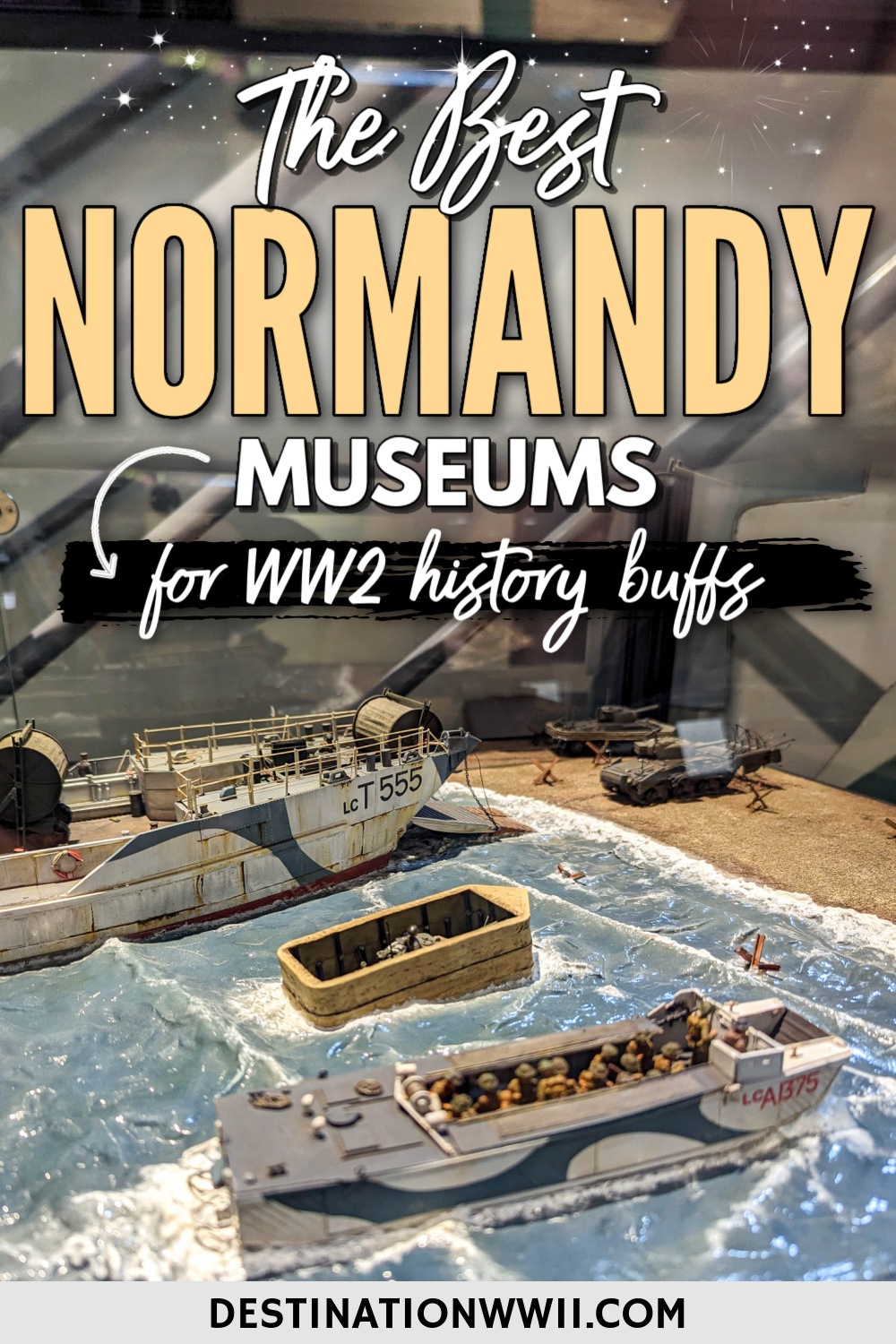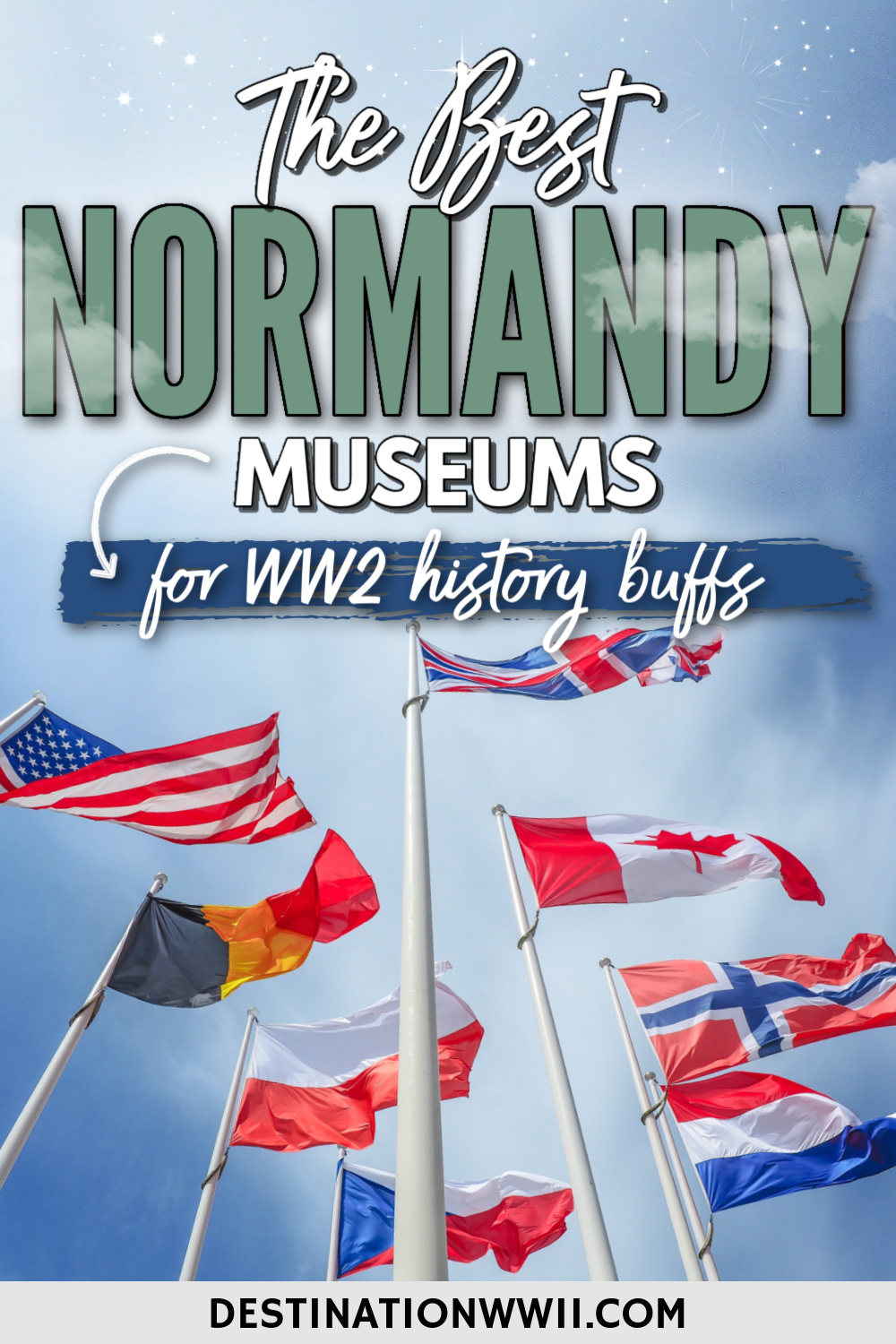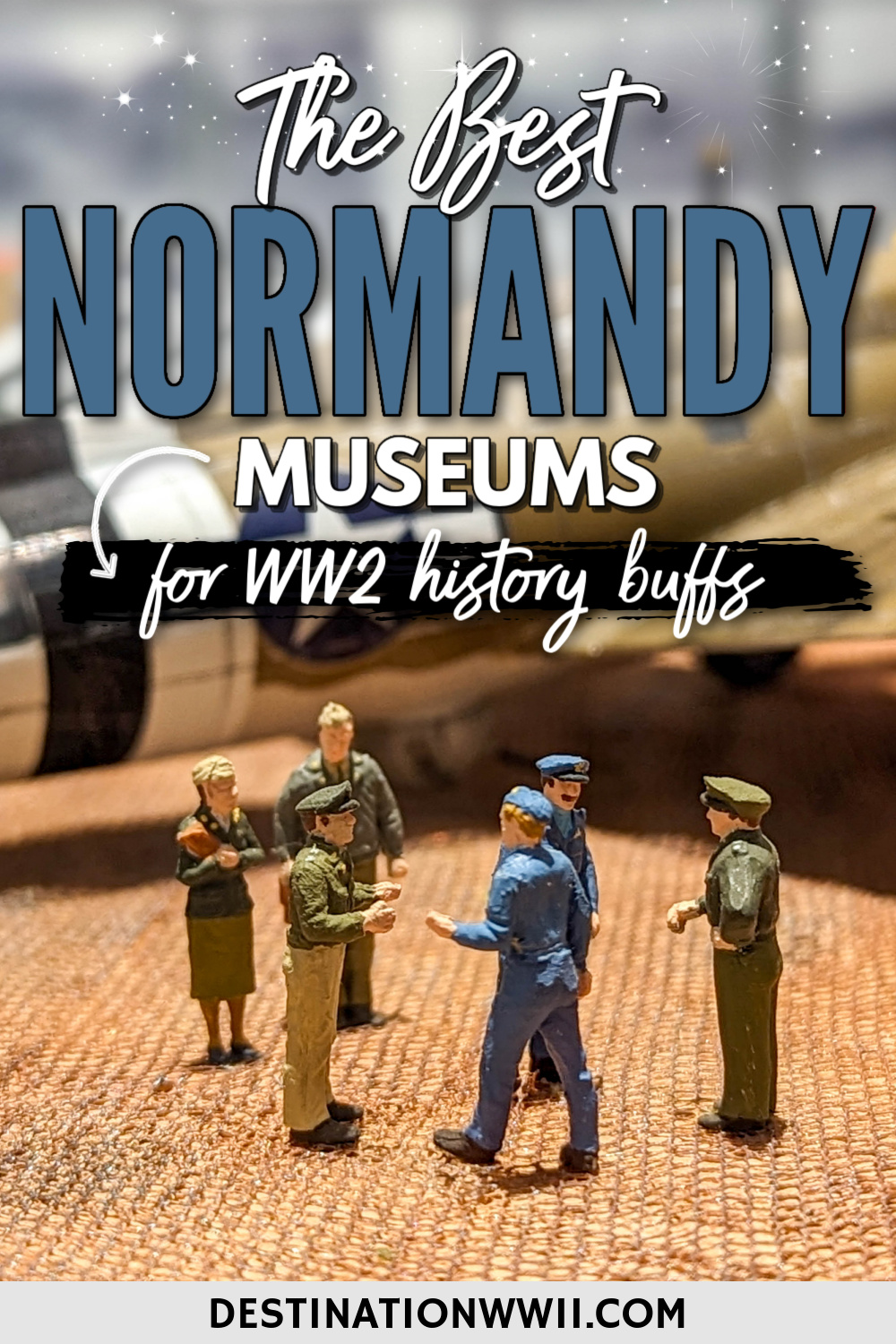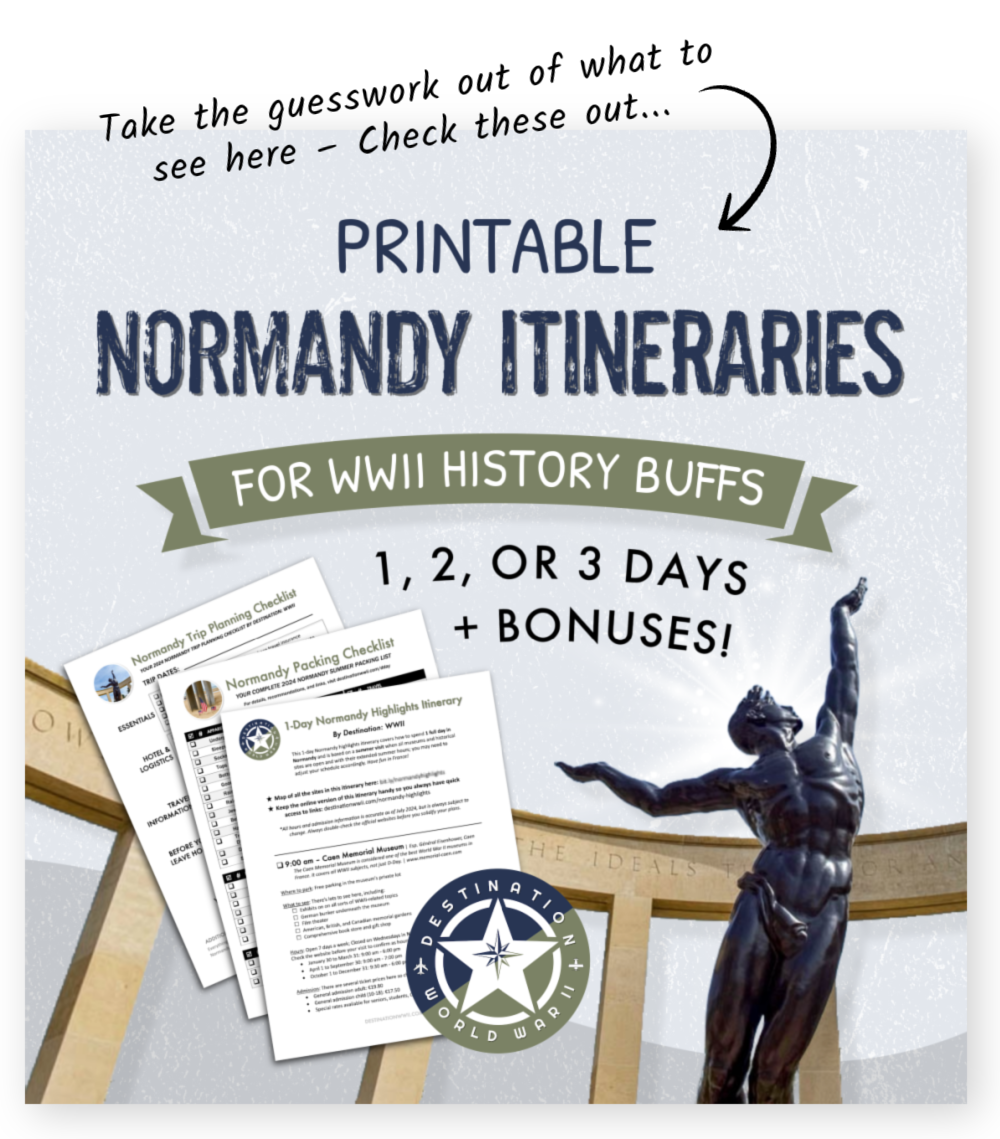Visiting the many Normandy museums (and other amazing D-Day sites) should be at the top of every World War II history buff’s bucket list. Very few other places evoke the kind of historical energy that the battlegrounds and memorials of Normandy do. It will truly be a trip you’ll never, ever forget.
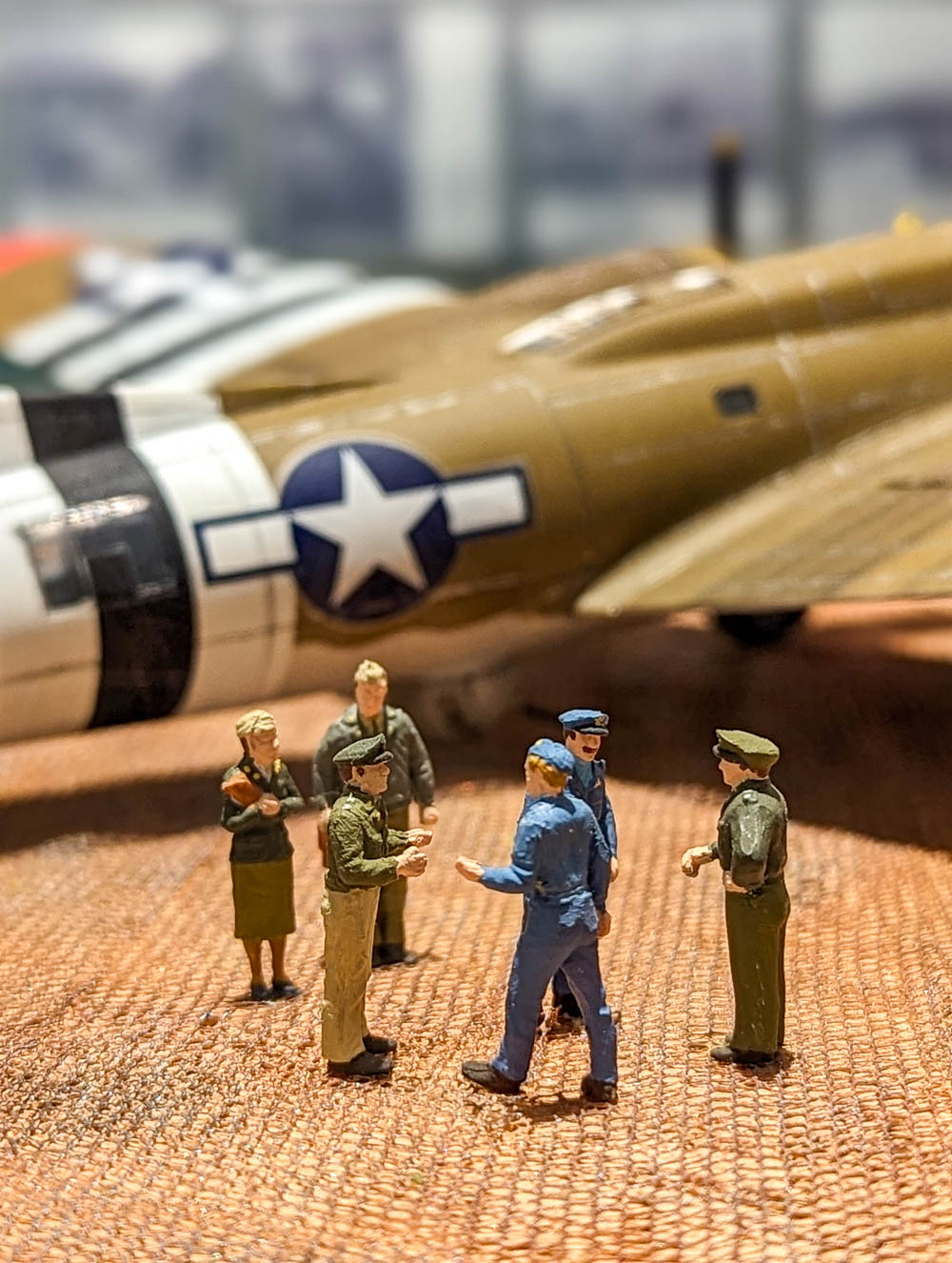
The best Normandy museums for WWII enthusiasts
As you can imagine, there’s an exhaustive amount for a World War II enthusiast to see in Normandy, France. There are landing beaches and battle sites, cemeteries, museums and memorials… so many memorials.
If you’ve got a few months to dedicate to seeing all these, fantastic. But for those of us who don’t, let me make it a little easier for you. As far as museums go, here are 19 of the best WWII museums in Normandy (in no particular order).
Pro tip: Now while I love museums, Normandy has so much more to offer a WWII enthusiast. I recommend choosing a couple museums from this list and spreading your time between those, some battle sites, some beaches, and a cemetery or two to get a well-rounded Normandy experience. Check out my post on the best D-Day sites to visit in Normandy for a great starting point.
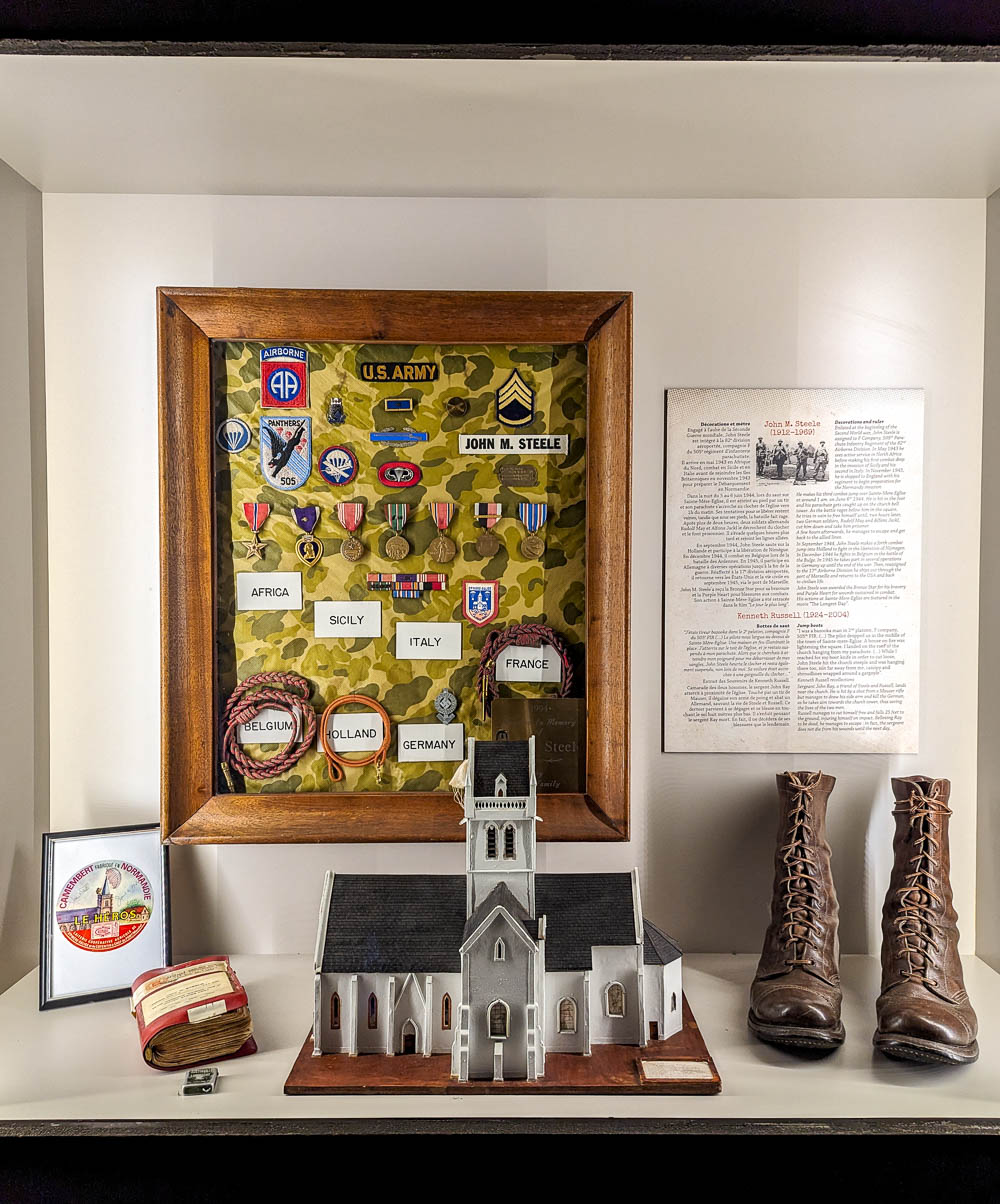
Best Normandy Museums: Map
This map contains all the top Normandy museums I mention in this post. To save this map: Click on the star ⭑ next to the map’s title to save in your Google Maps. To use this map: When you get to Normandy, open Google Maps on your phone, click “Saved” at the bottom, then click “Maps.”
Many of these museums are included in the awesome Normandy D-Day day tours you can take here. Check out that link for the 10 best ones for 2025. (Or click here for the best Normandy day tours from Paris.)
1. Mémorial de Caen (Caen Memorial Museum)
The Caen Memorial Museum is considered by many to be the best World War II museum in France. It opened on D-Day in 1988 and covers not just the subject of D-Day but all of World War II.
This enormous museum was built on a former German bunker (which you can also visit) and displays countless historical artifacts, video and sound recordings, artwork, props and replicas, vehicles and airplanes, and much more to tell the story of the Second World War.
The Caen Memorial Museum is located in the Sword Beach landing sector. Here’s everything else you can see and do at Sword Beach.
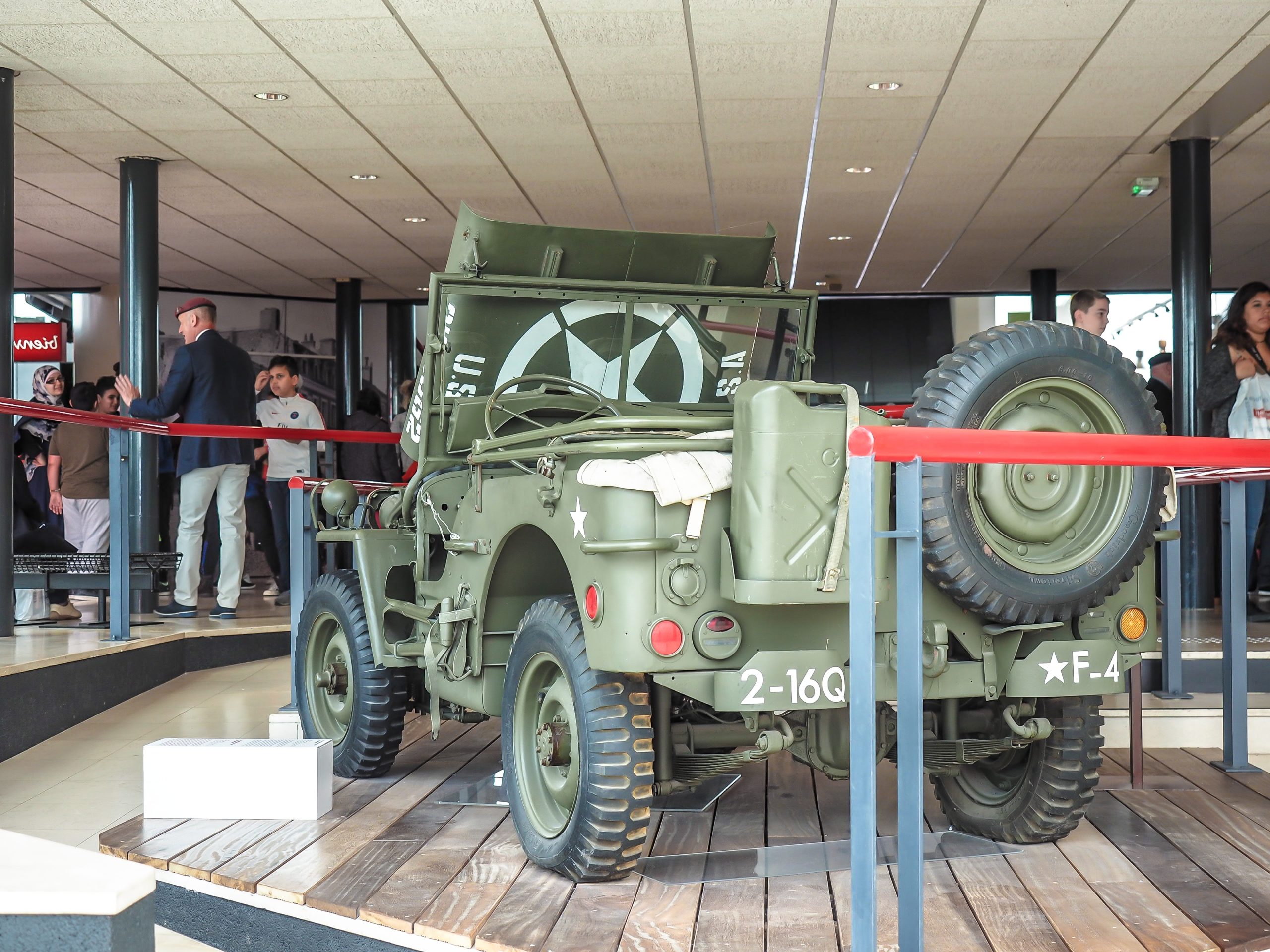
What to see at the Caen Memorial Museum
The Caen Memorial Museum has sections dedicated to:
- The start of the war and how it spread throughout the world
- The many global resistance movements
- Genocide and mass violence
- Liberation and the end of the war
- The D-Day landings and the Battle of Normandy (naturally)
- The Cold War
- And much more
This museum also has an extensive gift and bookshop (drinking out of my Army ration coffee mug as we speak), two cafés, three gardens dedicated to American, Canadian, and British soldiers who died in Normandy, and a movie theater. You could definitely spend the better part of a day here.
Pro tip: Don’t miss the General Richter Underground Bunker exhibit located under the museum. This former German command bunker contains some great artifacts and information on the German occupation.
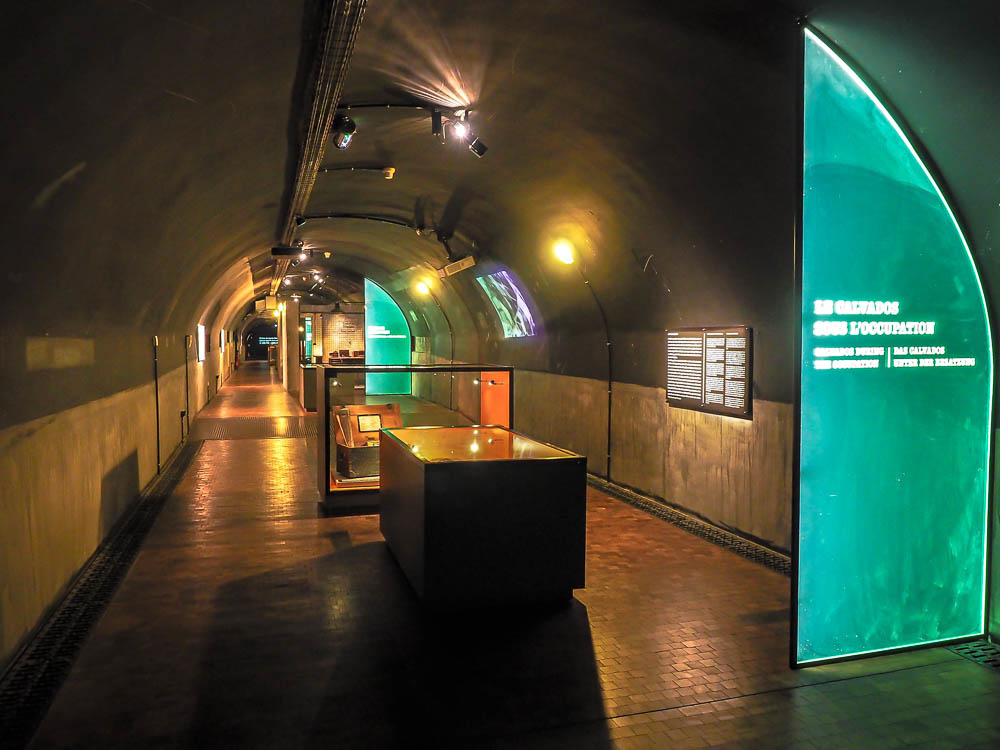
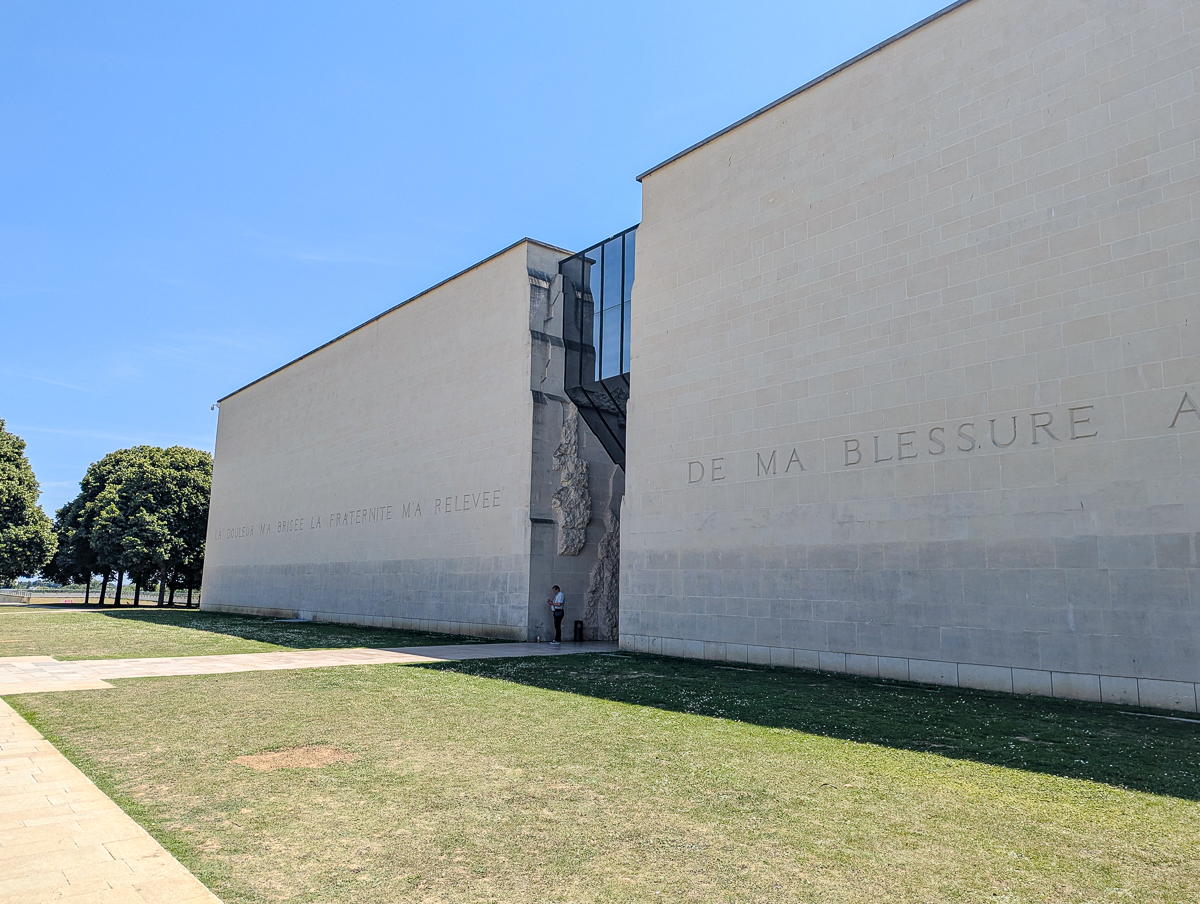
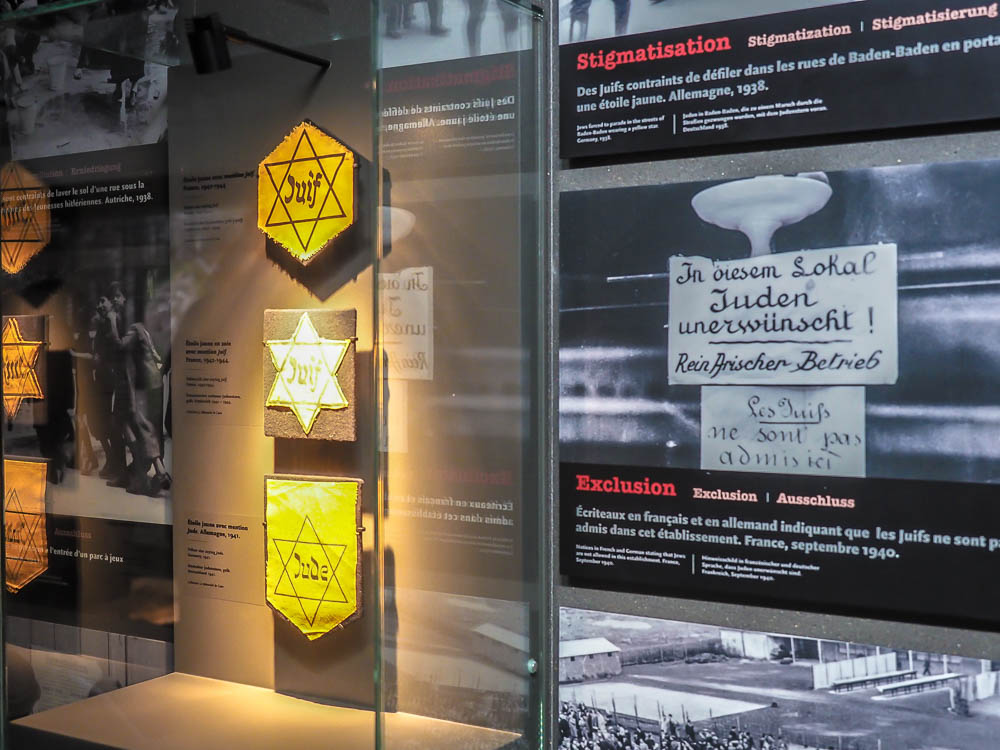
2. Airborne Museum
Normandy’s Airborne Museum opened in 1964 and centers around the US Army paratroopers of the 82nd and 101st Airborne Divisions who parachuted into Normandy in the wee hours leading up to D-Day.
You can find the Airborne Museum in the town of Sainte-Mère-Église, the first French town liberated by Allied forces. It faces the church belfry where paratrooper John Steele became famously suspended. (You can see this story in the movie The Longest Day.)
The Airborne Museum is located in the Utah Beach landing sector. See what else you can see and do at Utah Beach here.
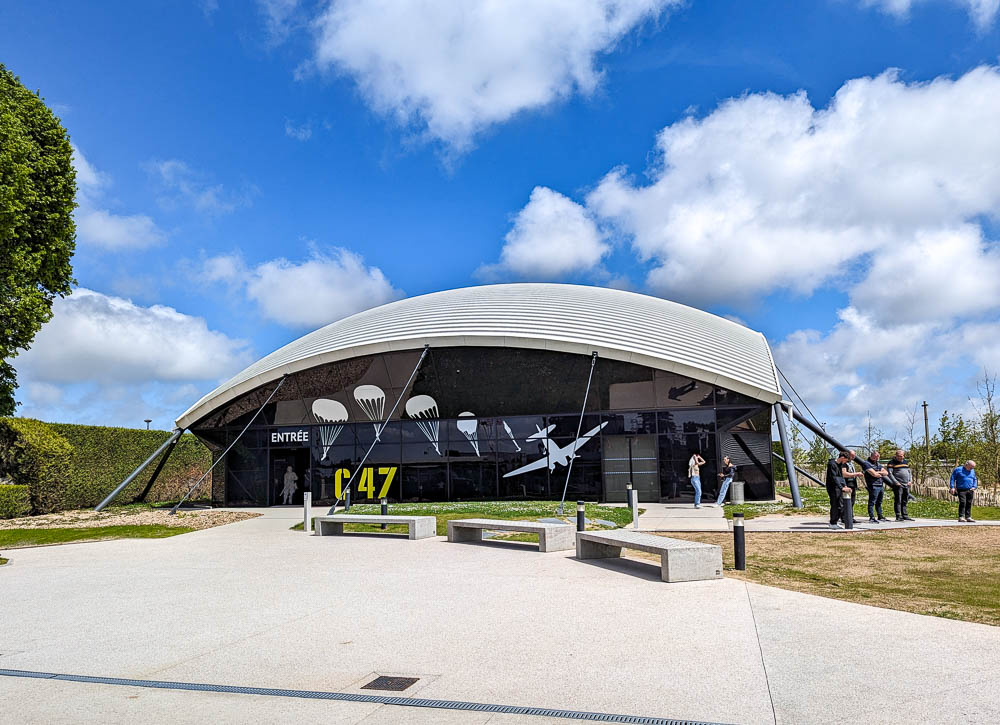
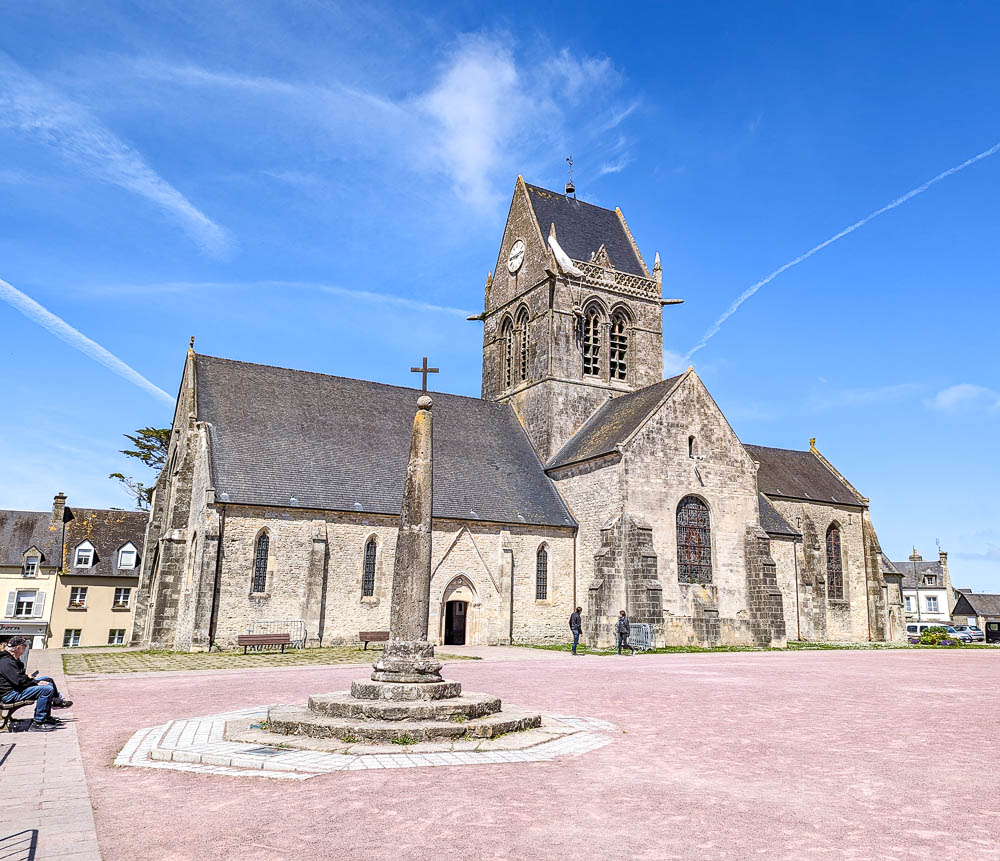

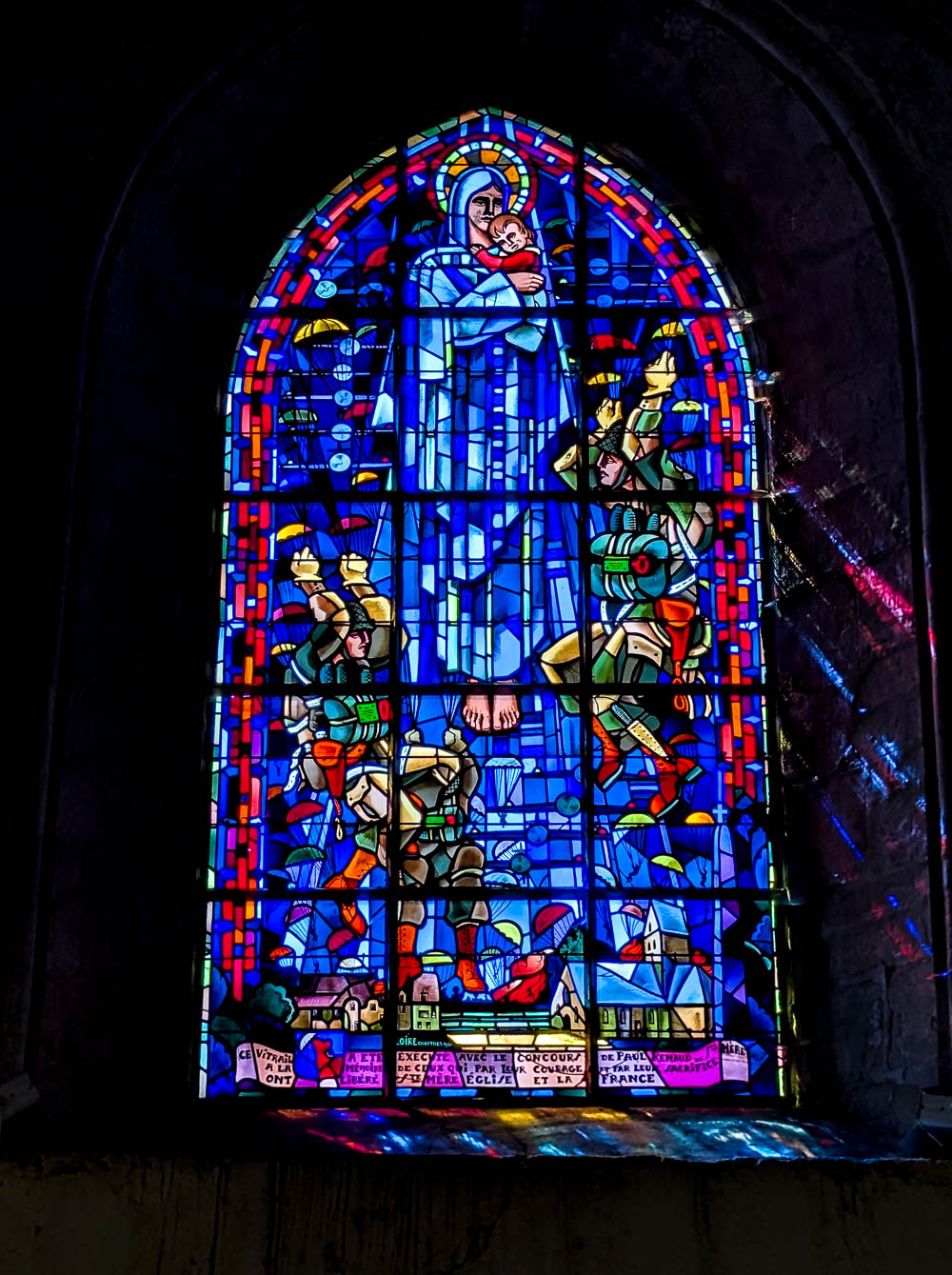
Heading to Paris before or after your Normandy trip? Don’t miss all the WWII sites in Paris too!
What to see at the Airborne Museum
In May 2024, the museum unveiled the extensive renovation and expansion it had been working on. The Airborne Museum now boasts three exhibition buildings and completely redesigned outdoor grounds. Be sure to check out:
The WACO Building
Previously the smallest building at the Airborne Museum, the WACO now has a brand new (much larger) exhibition space. This section focuses on gliders and their use in the Normandy invasions. (More than 500 gliders were used on D-Day and the days following to transport vehicles, ammunition, equipment, and troops into France.)
Inside the WACO Building you can see a Waco CG-4 glider, the only one of its kind on display in France.
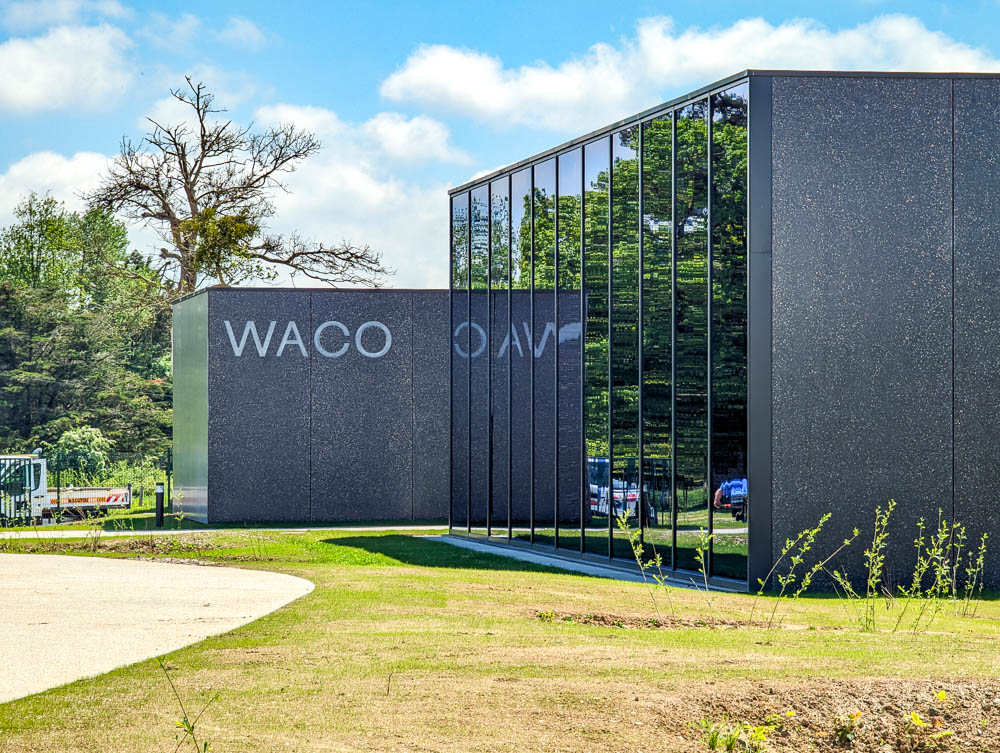
The C-47 Building
The C-47 Building, itself shaped like an open parachute, completely immerses you in what it was like to be a WWII paratrooper. You learn everything from D-Day preparations to what it was like to drop into a war zone. You get to attend a virtual military briefing, hear some of the event’s personal stories, and see a Douglas C-47 Skytrain up close.
This building was also recently (completely) redesigned and it’s truly an immersive experience. When picking up your ticket upon entering, you have the (free) option of taking a Histopad along with you. With this device you can learn more about each of the exhibits, watch video footage, and more. I really like the displays here; it’s so interesting to see all the gear the paratroopers dropped with up close.
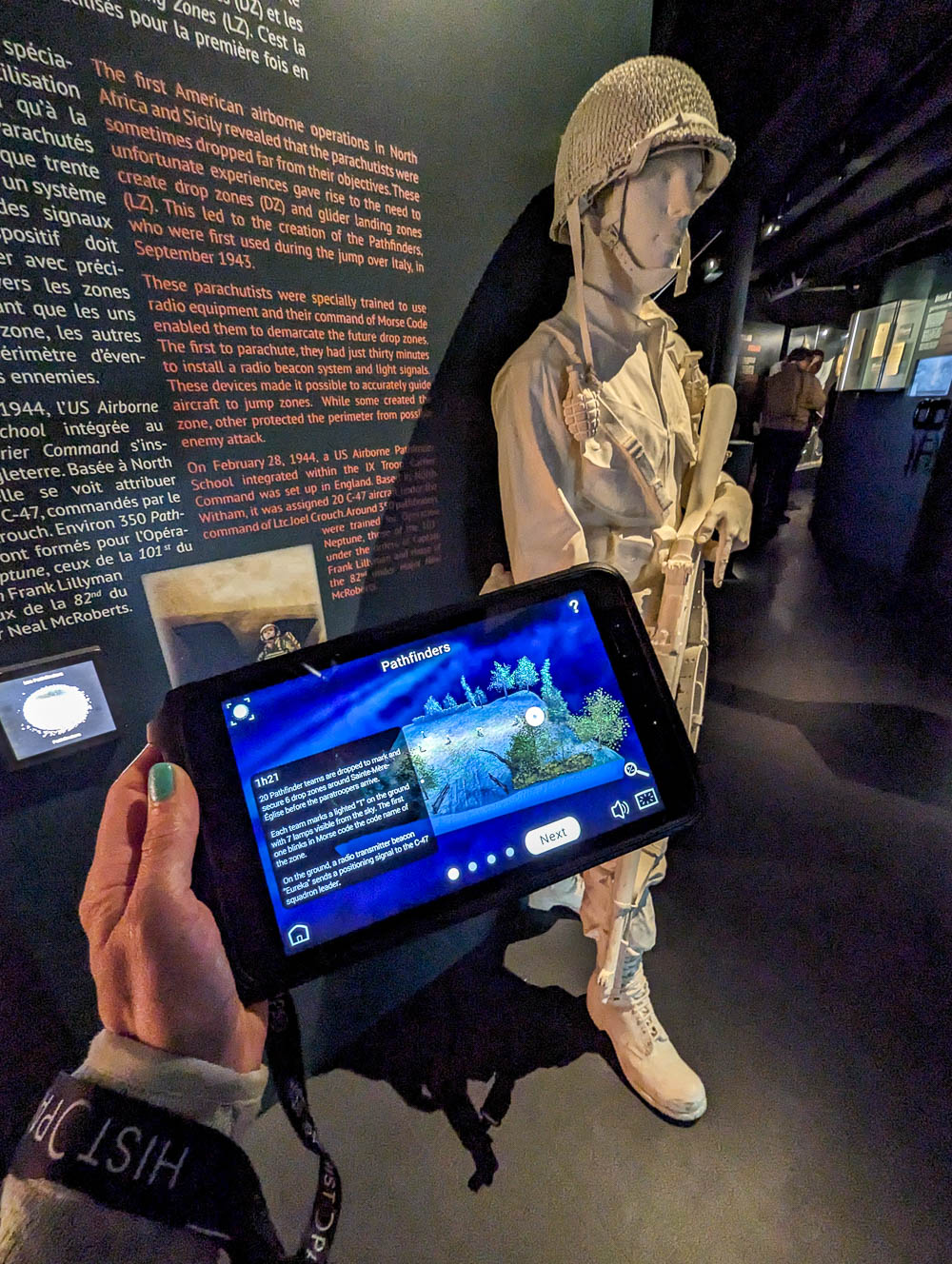
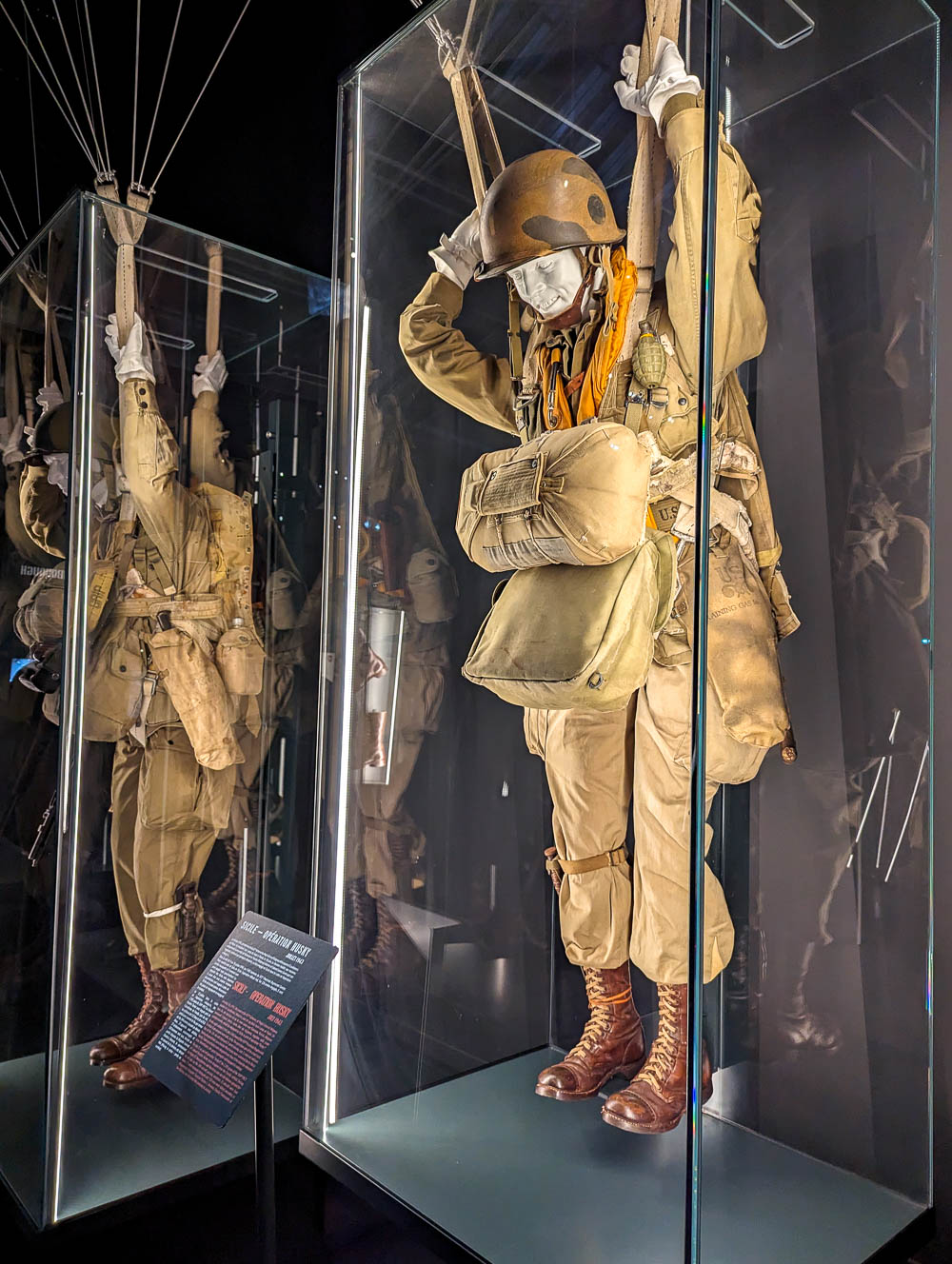
Operation Neptune
A third building named Operation Neptune (after the first assault phase of the grander Operation Overlord) opened in 2014 on the 70th anniversary of D-Day. This building covers 13,000 square feet and aims to “make you experience a night jump as if you were there!” which sounds fun and interesting yet truly terrifying at the same time, no?
Through what they call a “hyperrealist museography” you’ll first board a C-47 then drop into the town of Sainte-Mère-Église in the midst of battle. This building also provides background on some of D-Day’s more specific, localized events as well as stories from the individuals involved. (This is my favorite part of the museum.)
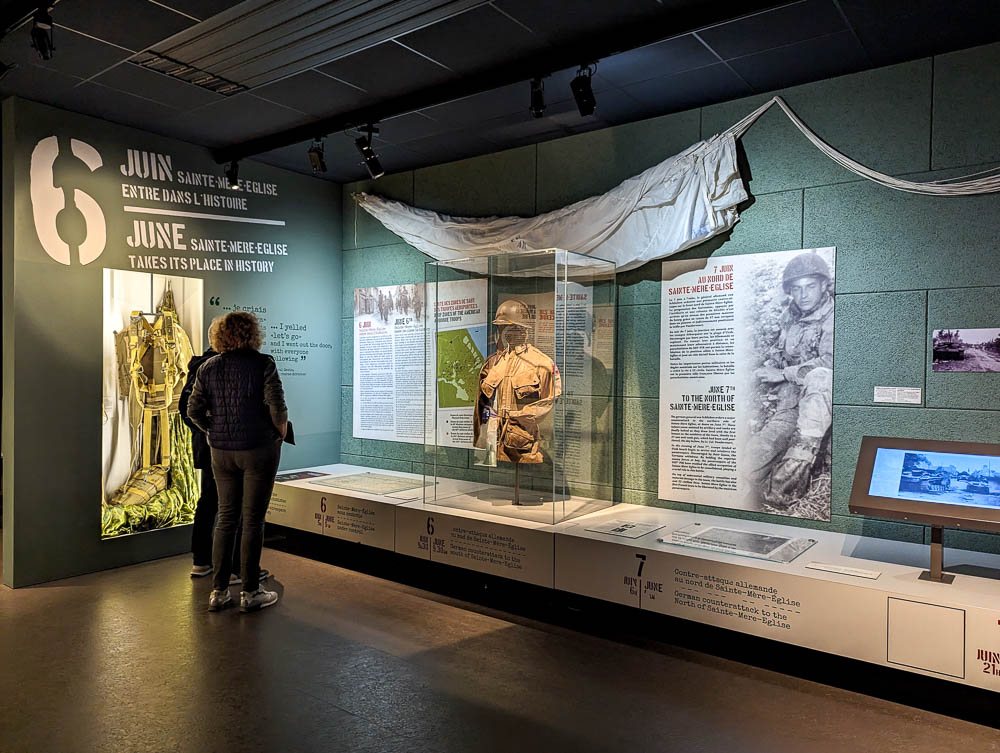
The open-air exhibition area
Between the (new) WACO and Neptune buildings you’ll find an outdoor exhibition space that displays several war-era vehicles.
Why the Airborne Museum is one of the best Normandy museums
The Airborne Museum is one of the best Normandy museums for WWII enthusiasts because of:
- How interactive and engaging the exhibits are
- How well the museum is organized
- Its impressive collection of artifacts (and the chance to see them up-close)
- The ability to learn more about certain subjects with the Histopad
- Its brand new renovation for the 80th anniversary of D-Day which means everything is super updated and modernized
- Its location in the center of Sainte-Mère-Église which is perfect for exploring the other interesting sites here
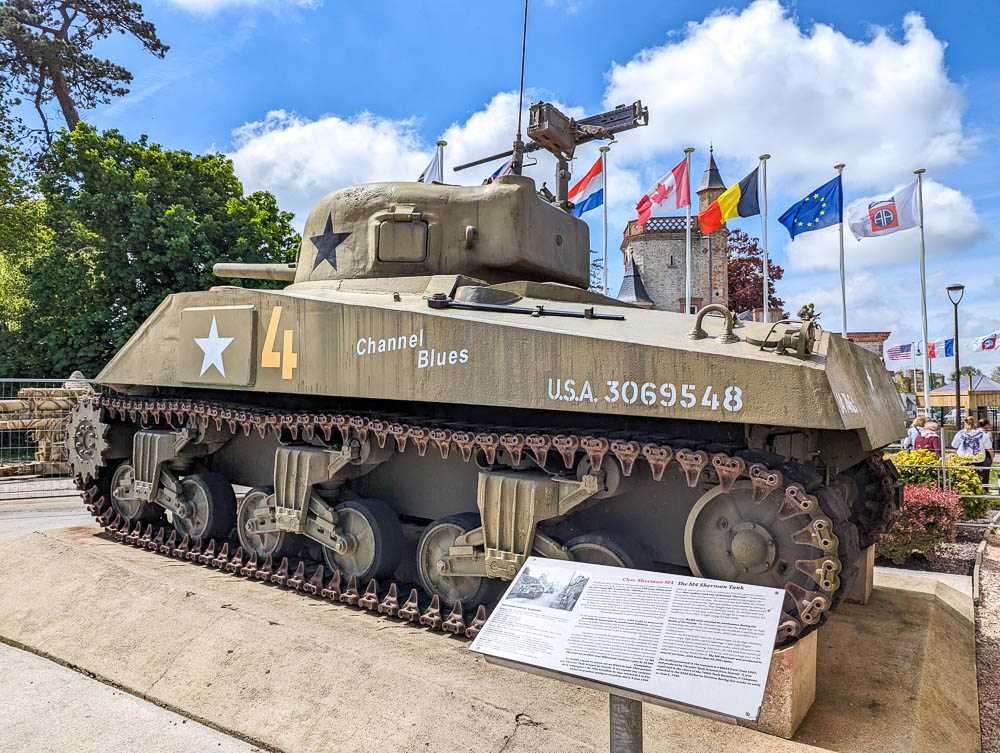
Airborne Museum: Need to know
Here are a few helpful tips and things to know for your visit to the Airborne Museum:
About tickets: First, this is a popular museum. Prepare to wait in at least a little bit of a line to buy your tickets. Yes, even if you bought your ticket online; you still have to wait in the line to enter. (It’s silly, I know.) But, as of May 2024, they’ve closed online ticket sales for the rest of the season while they regroup. (Hopefully they’re figuring out a more efficient system.)
About parking: Parking for the museum is in the (paid) public lot in the town square (which is great because you can visit all of Sainte-Mère-Église’s landmarks from here). But, there’s only ONE parking payment machine and nobody knows how to use it.
If it’s a busy day, prepare to wait in a line while everyone fusses with the machine. Plan accordingly by adding a little extra time to your visit, and be sure to have your license plate number ready when it’s your turn to pay.
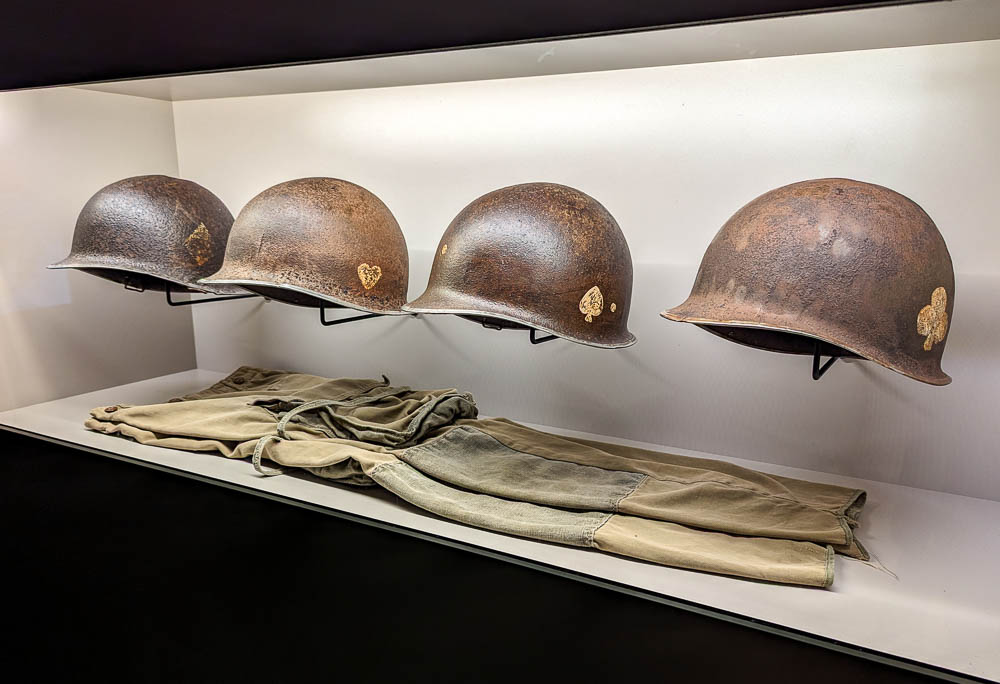
Read more about driving and parking in Normandy in my helpful guide in that link.
3. Utah Beach Landing Museum
Like the Caen Museum, the Utah Beach Landing Museum was also built atop a former German bunker. You can find it right here on Utah Beach, the first of the five D-Day landing beaches to be stormed by Allied troops.
This museum tells the story of D-Day from the extensive preparations to the final outcome through a chronological series of exhibits. Understandably, it focuses on the events and stories behind the landings at Utah Beach specifically.
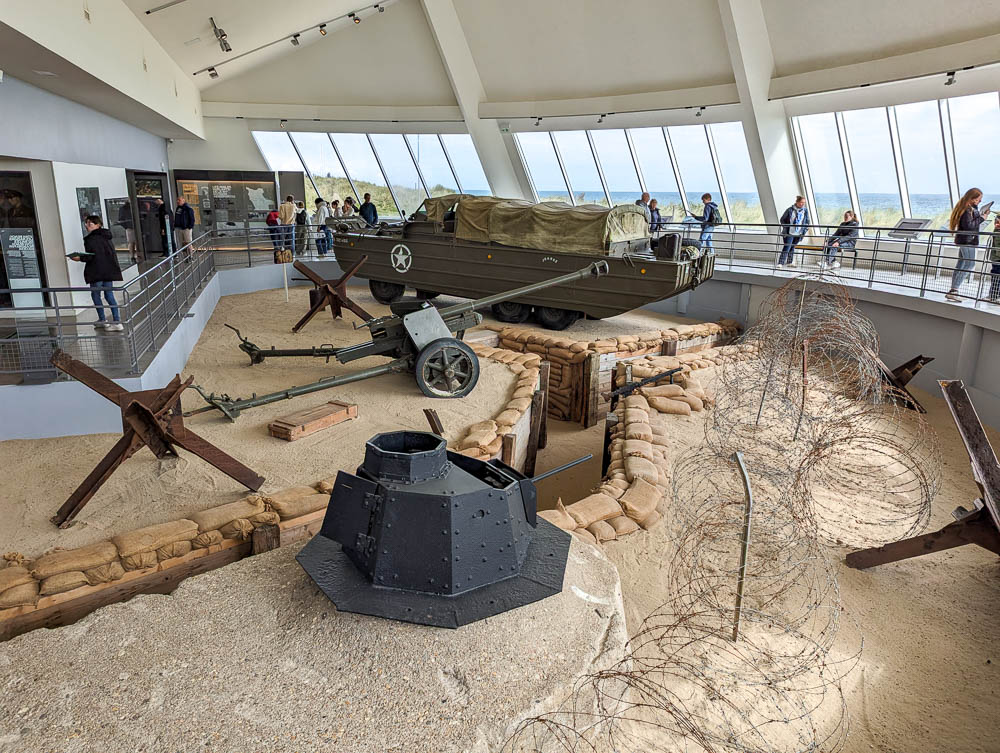
What to see at the Utah Beach Landing Museum
At the Utah Beach Landing Museum, you’ll find tons of historical artifacts, oral histories, and original vehicles as well as an award-winning film. Be sure to check out the exhibits on:
- The German defenses
- Daily life in the nearby towns under German occupation
- The Allied strategy behind Operation Overlord
- What happened on D-Day as far as naval, air, and land forces
- The journey from landing on Utah Beach to liberating the town of Cherbourg
- The artificial harbor built at Utah Beach
Among several original vehicles, you can also check out a well-preserved B-26 bomber (one of only six still in existence).
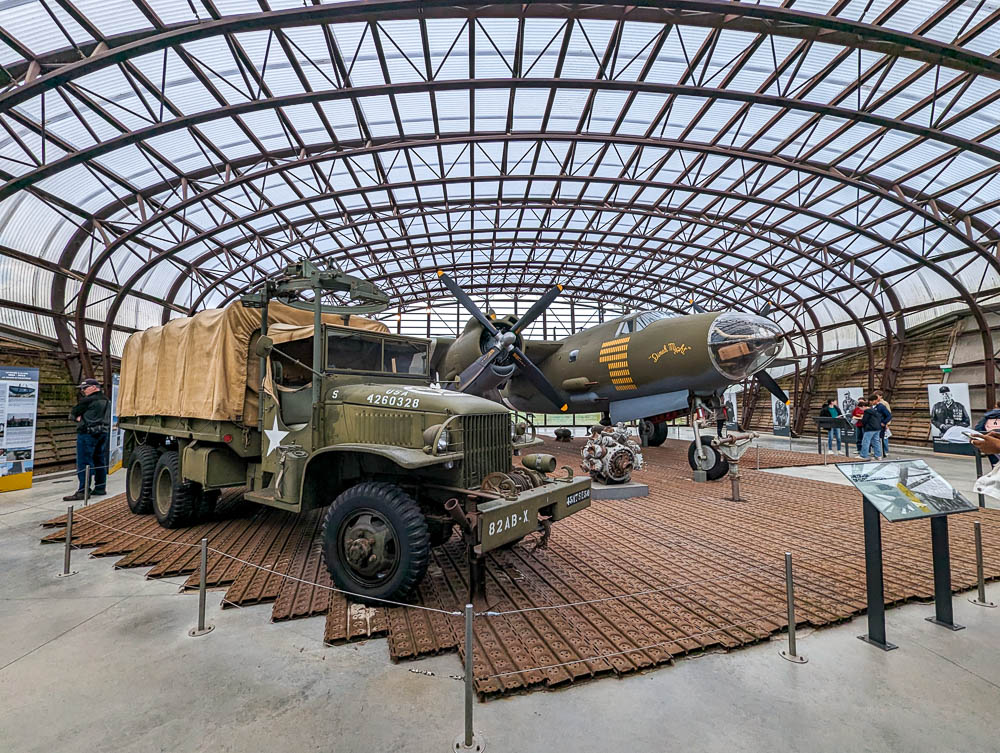
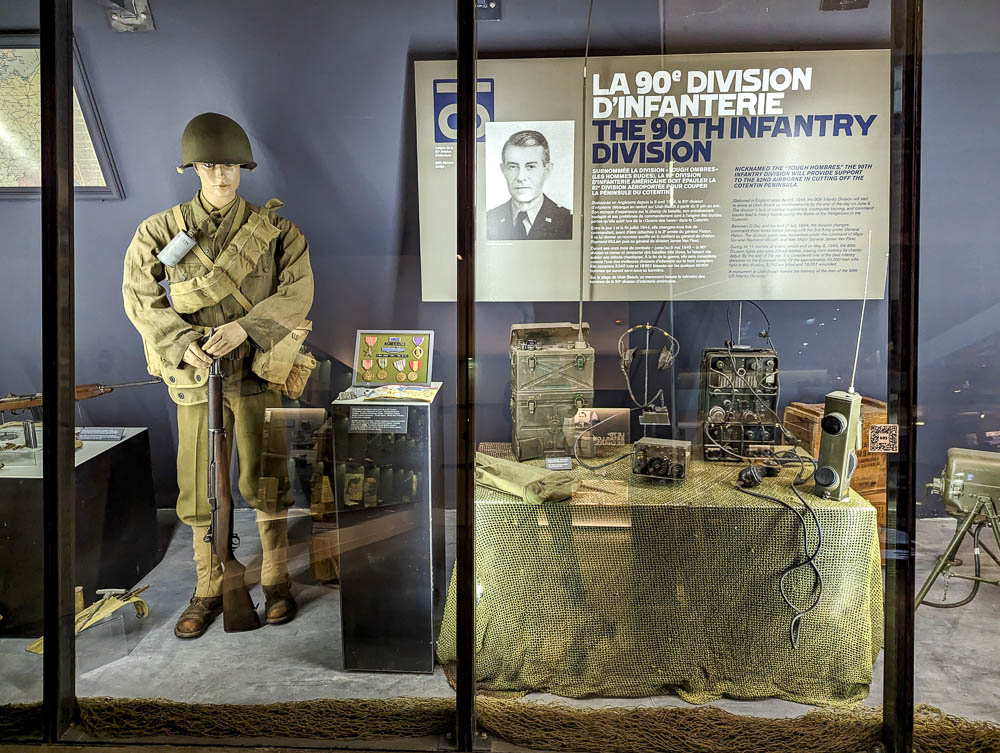
Why this is one of the best Normandy museums
There are several reasons I love the Utah Beach Landing Museum, such as:
- Its location right on the beach – You can view the beach itself from some of the exhibit spaces which I find incredibly thought-provoking.
- Its extensive collection of artifacts, especially vehicles, military uniforms, and weapons
- The personal narratives from those involved in the Utah Beach landings
- The way it presents the information in a thematic way
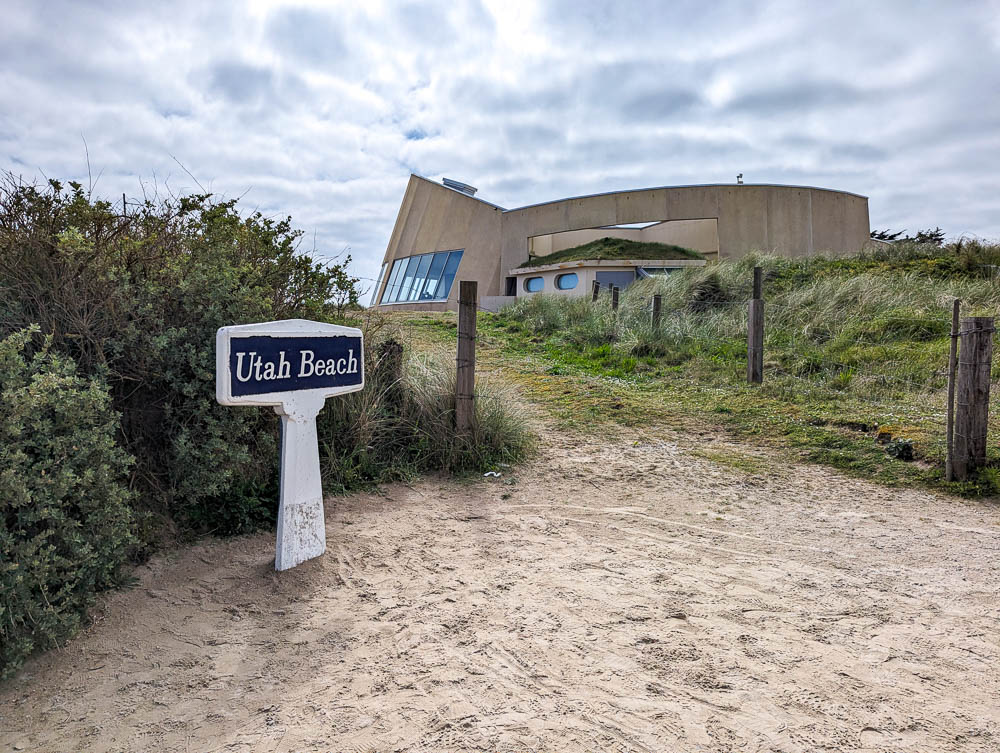
Utah Beach Landing Museum: Need to know
Here are a few helpful tips and things to know for visiting the Utah Beach Landing Museum:
About parking: Parking at the Utah Beach Landing Museum is both free and plentiful. When you arrive at the beach, you’ll find several small dirt parking lots in the area as well as parking in the grass along the fence line. Park wherever you find space and you’ll be able to check out many of the Utah Beach-area memorials and other sites.
About lunch: If you want an interesting spot to have lunch, stop by the Roosevelt (across the street from the museum). This historical building is now full of memorabilia, photographs, and handwritten messages from veterans. It’s a veritable museum itself. (For what it’s worth, the “French hot dog” was pretty good.)
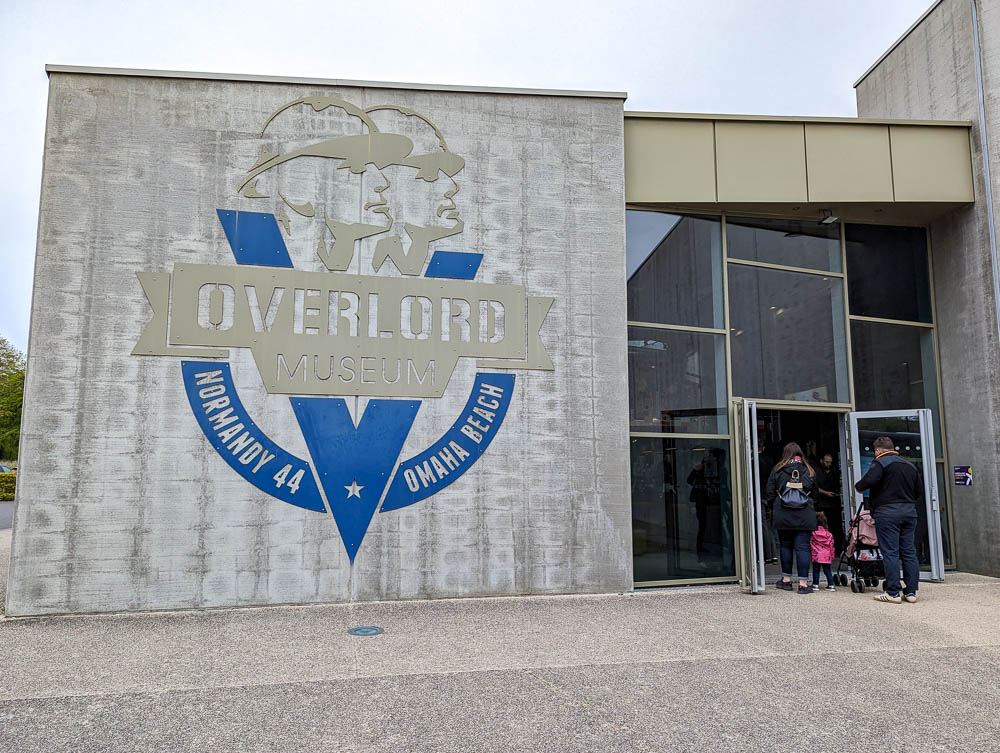
4. Overlord Museum
Located in the town of Colleville-sur-Mer, just a few minutes’ drive from Omaha Beach, is the Overlord Museum. (Named for Operation Overlord—the codename for the Allied invasion of the German-controlled beaches of Normandy.)
This museum tells the story of World War II from the very beginning to the liberation of Paris. And it all started from the personal artifacts collection of Michel Leloup, a local who witnessed the war as a teenager and helped rebuild the area afterwards.
At the Overlord Museum you’ll get the chance to see his (now grand) collection which includes more than 10 tanks and armored vehicles (plus 30 others), a reconnaissance plane, artillery pieces, documents and other memorabilia, plus many personal effects he picked up directly from the battlefields.
The Overlord Museum is located in the Omaha Beach landing sector. See all the best things to see and do at Omaha Beach here.
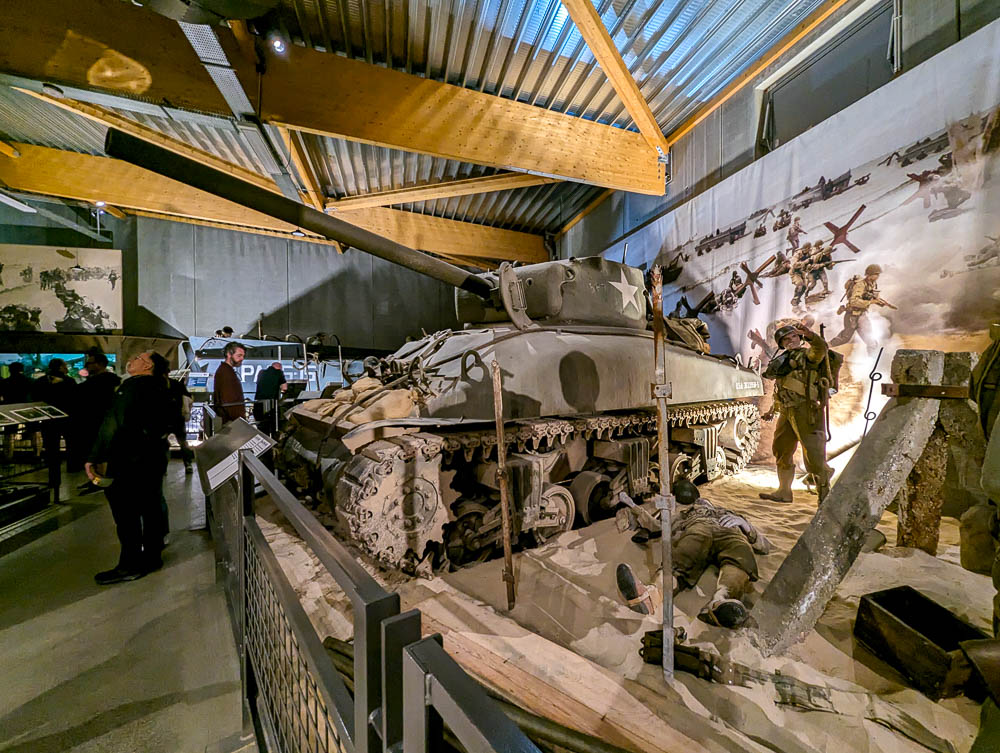
Why the Overlord Museum is one of the best Normandy museums
Some of the many reasons I like the Overlord Museum include:
- The authenticity of the very cool collection of artifacts
- There are equal parts Allied and Axis artifacts.
- The way they’re displayed in diorama form gives such great context to them all.
- The size of the museum—It’s not overwhelmingly large but still definitely thorough.
- Its location near Omaha Beach and the Normandy American Cemetery couldn’t be more convenient.
- You can also find D-Day beer and cider here in their gift shop—I don’t hate that.
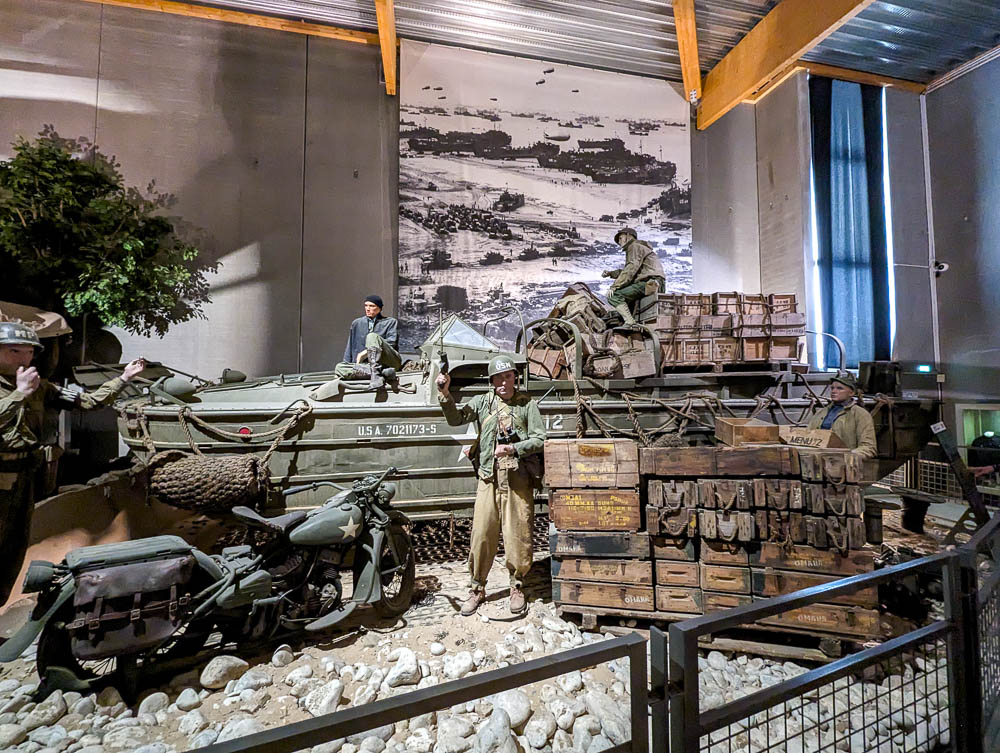

Overlord Museum: Need to know
About visiting: Given its (super convenient) location just a couple minutes away from two of the most popular D-Day sites in Normandy, this museum can get extremely crowded.
I absolutely love the flow of exhibits here, but because of this unique layout, when I visited in May 2024, there were full-on bottlenecks at several points inside the museum. Luckily there’s enough to keep you occupied in the meantime, but maybe plan to spend a little bit longer here just in case of “traffic.”
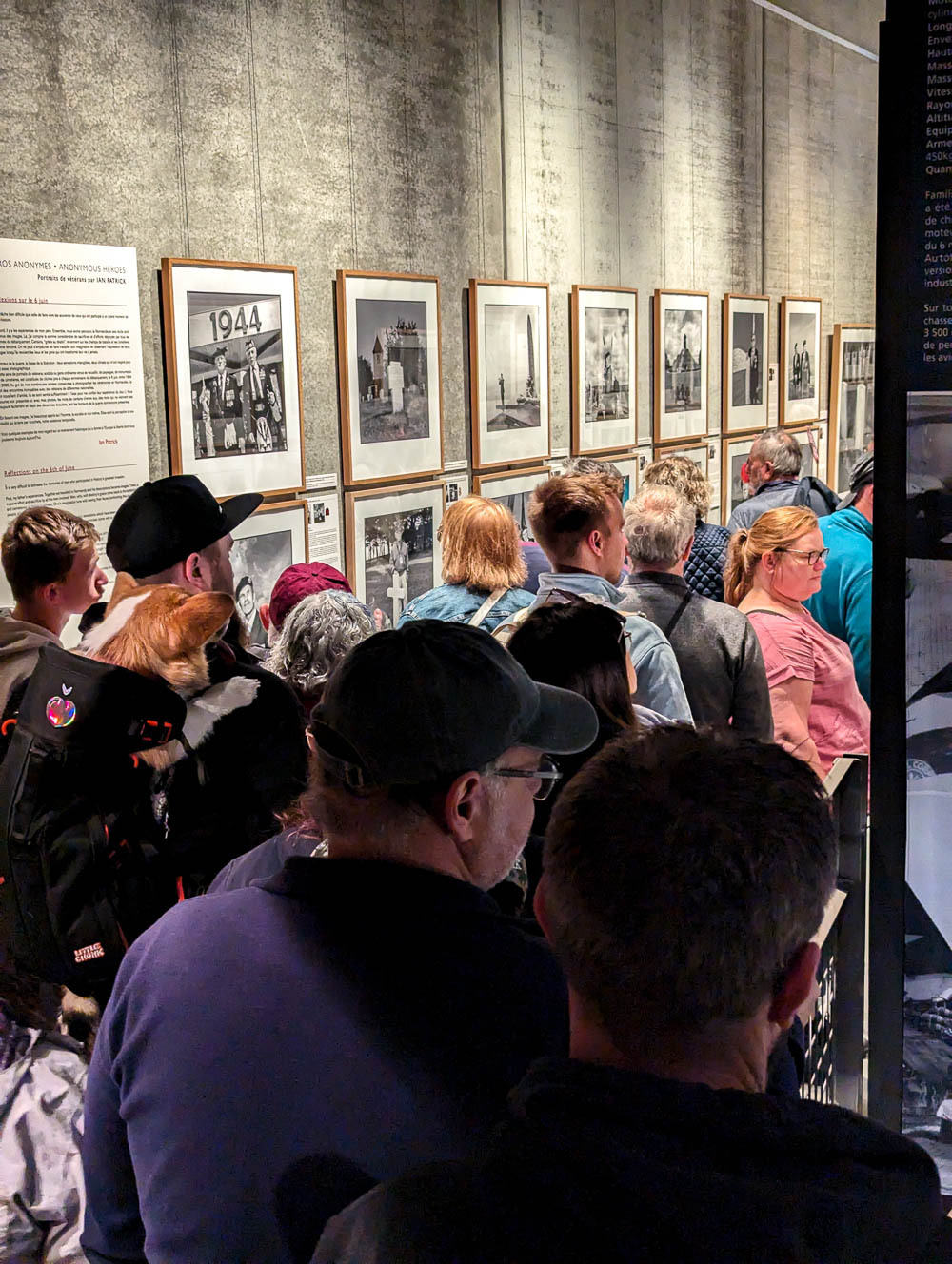
5. D-Day Omaha Museum
Much like the Overlord Museum, the D-Day Omaha Museum was born from a military history buff’s massive personal collection—this time, Michel Brissard. It’s also conveniently located between the notable Omaha Beach sites of Normandy American Cemetery and Pointe du Hoc.
This museum’s unique collection of thousands of original artifacts was compiled over 50 years and includes a particular focus on the D-Day landings. Among it are paratrooper motorcycles, an Enigma machine, sabotage materials, plane motors, an LCVP landing barge, and tons more. Outside the museum you can see five restored Mulberry footbridges. The museum itself is an artifact too—it’s located inside an original Quonset hut.
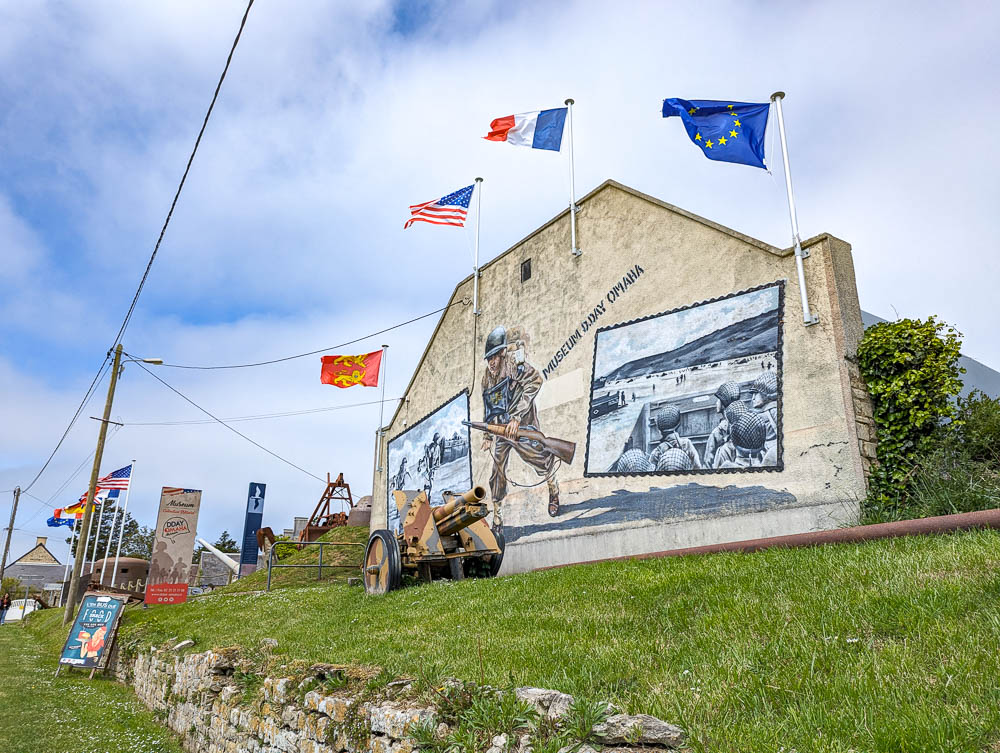
Why the D-Day Omaha Museum is one of the best Normandy museums
I feel this museum is one of the best because:
- It’s in a great location near many other D-Day sites you’re surely going to visit.
- It has a wonderfully varied collection of authentic items. (Museums based on private collections tend to be my favorites.)
- The collection of bikes is great for a motorcycle enthusiast.
- It’s a small museum but packed with tons of great stuff (and stories—like how the founder discovered an original “Sonderkraftfahrzeu 2” tracked motorcycle with his metal detector when he was 9 years old).
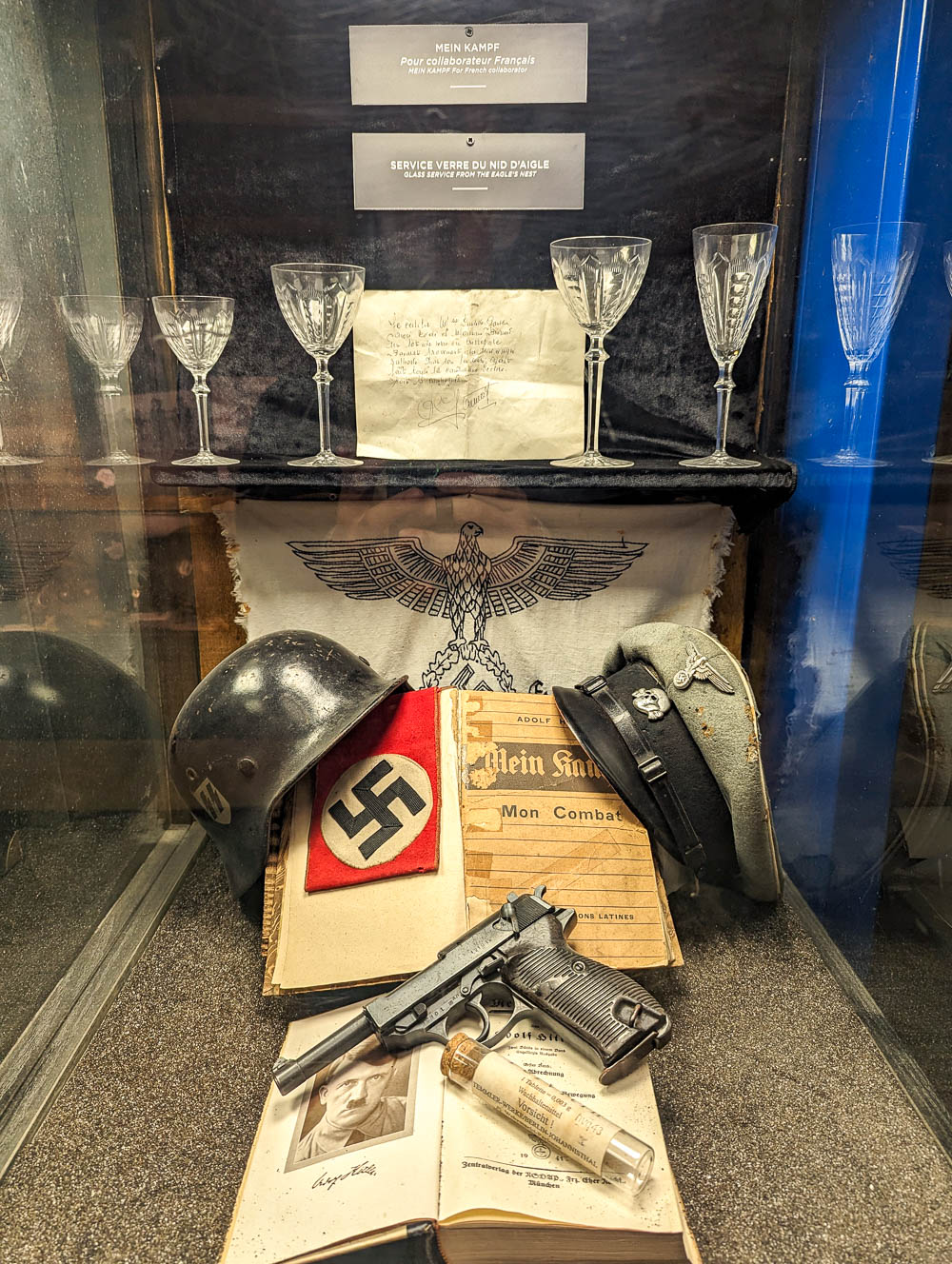
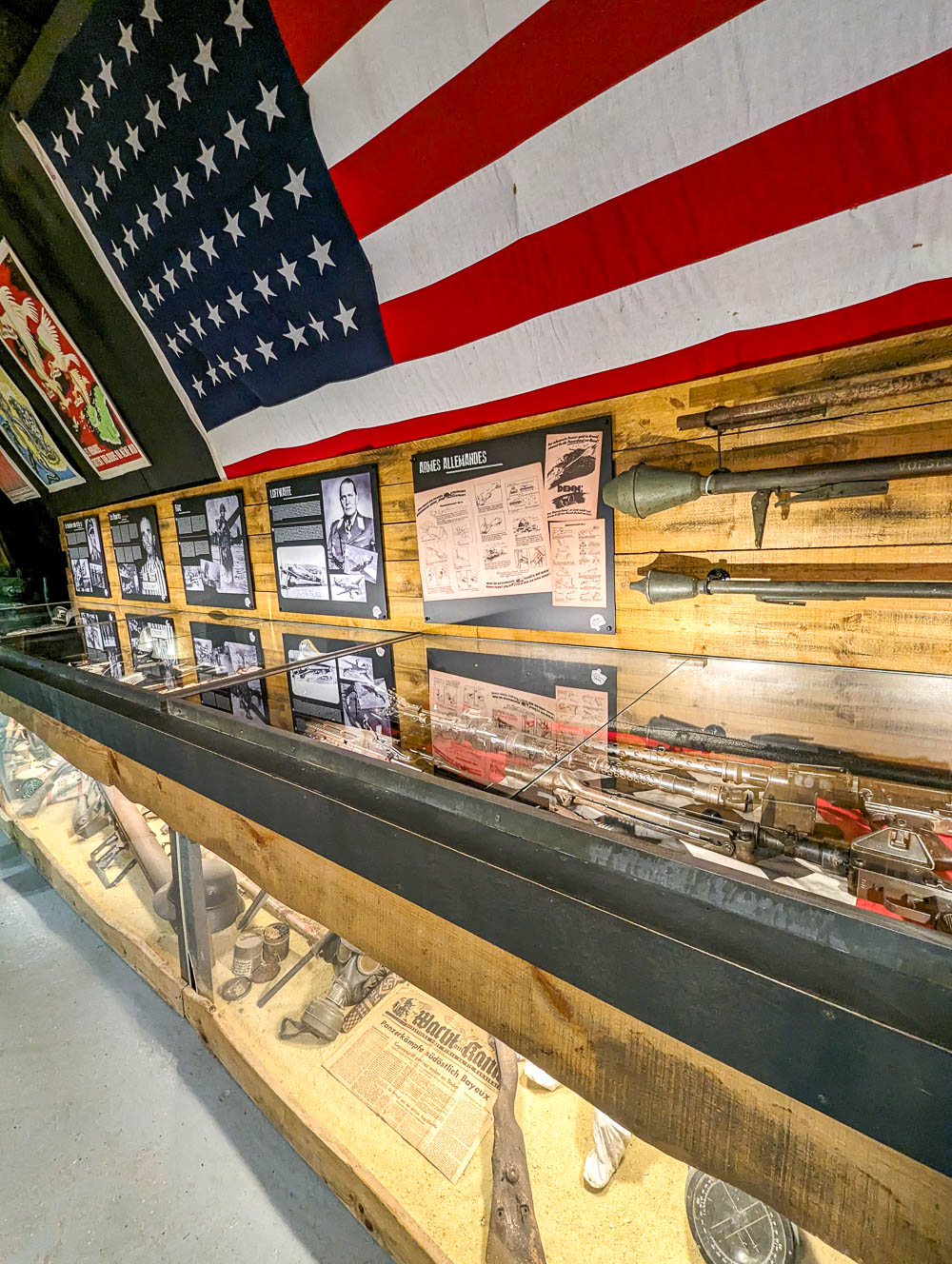
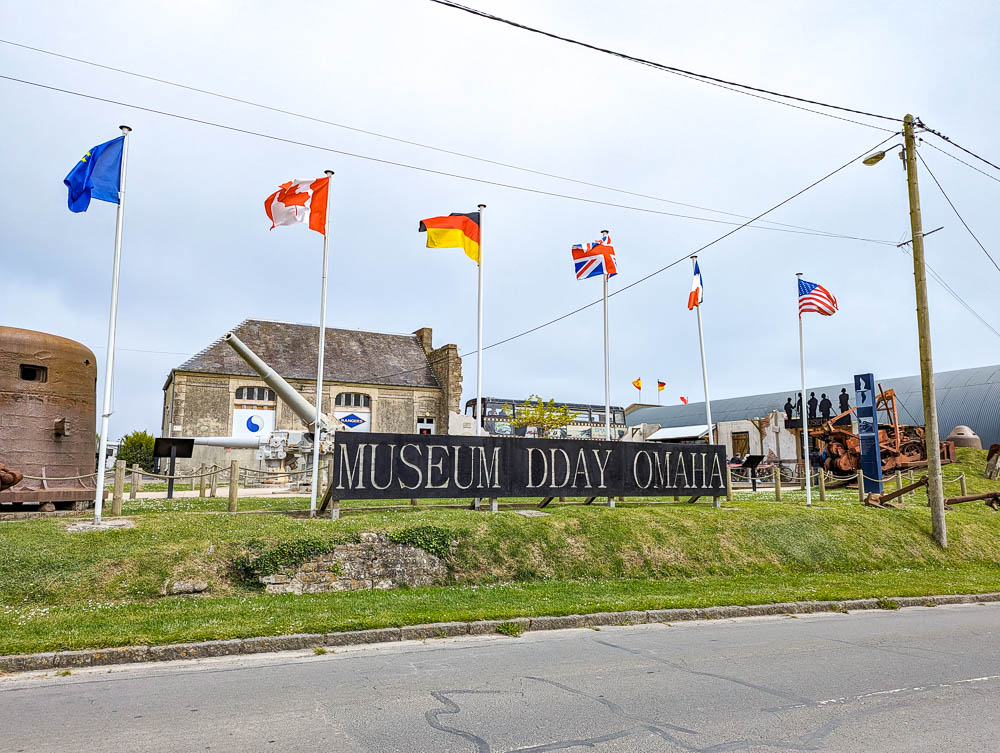
D-Day Omaha Museum: Need to know
Here are a few helpful tips and things to know for visiting the D-Day Omaha Museum:
About visiting: This museum is very small in terms of physical space, especially if you’ve visited some of the others already. But, it’s packed with artifacts and information. I’d say budget somewhere between 30 minutes to an hour here.
About lunch: If you’re looking for lunch either before or after your visit here, skip the museum’s snack bar and walk three minutes down the road to the food truck called Aux DÉLICES d’Alice.
This little trailer is run by two lovely women and they sell just a handful of items. I can’t emphasize this enough–order the sausage and onion crepe. All ingredients come from the local farm and this is hands down my favorite meal in Normandy.
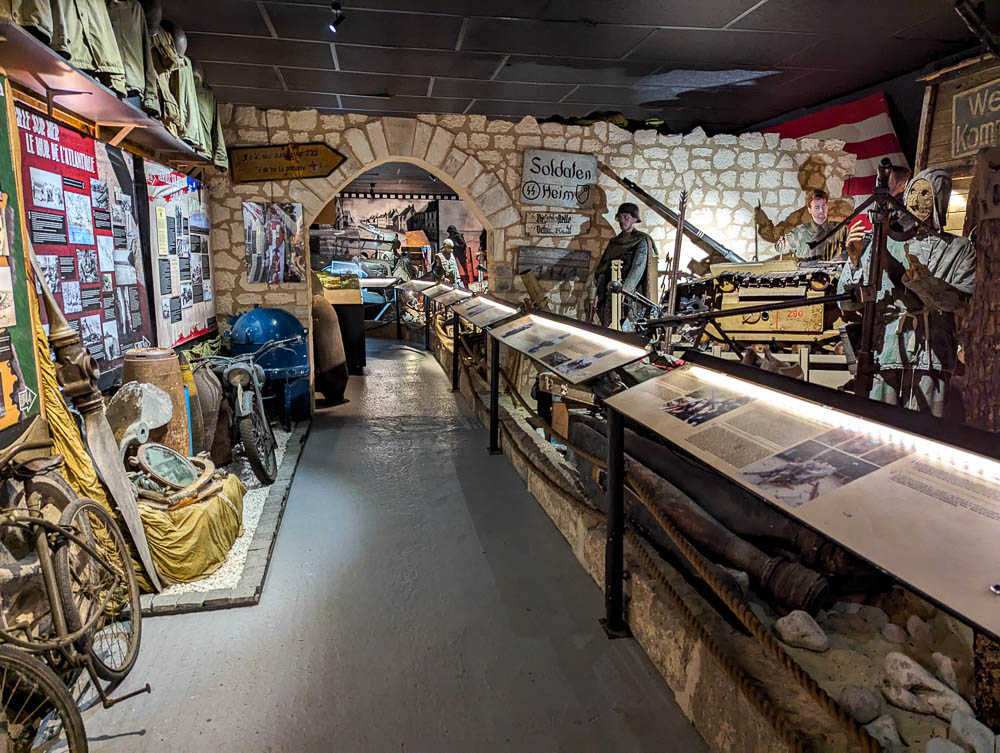
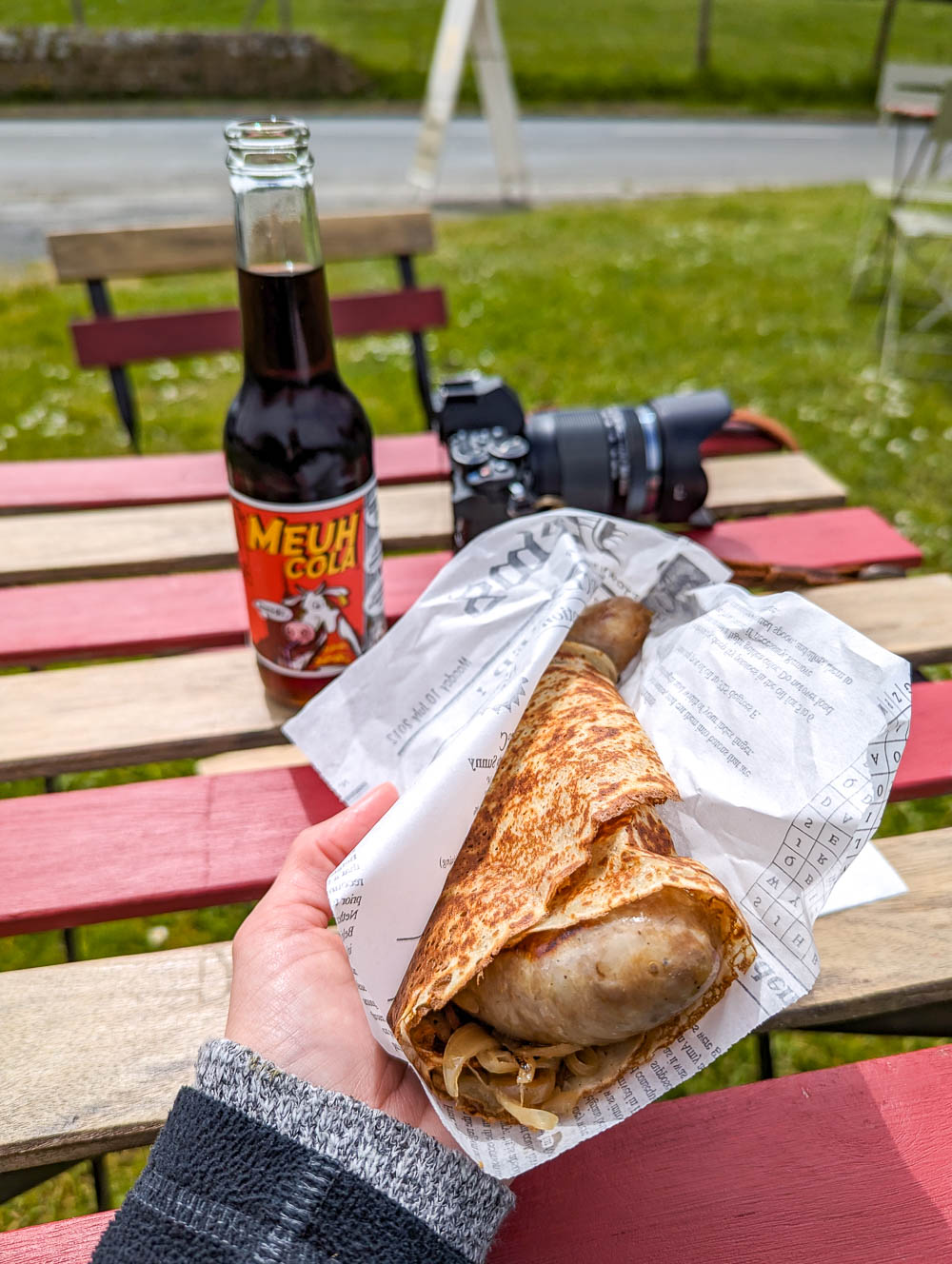
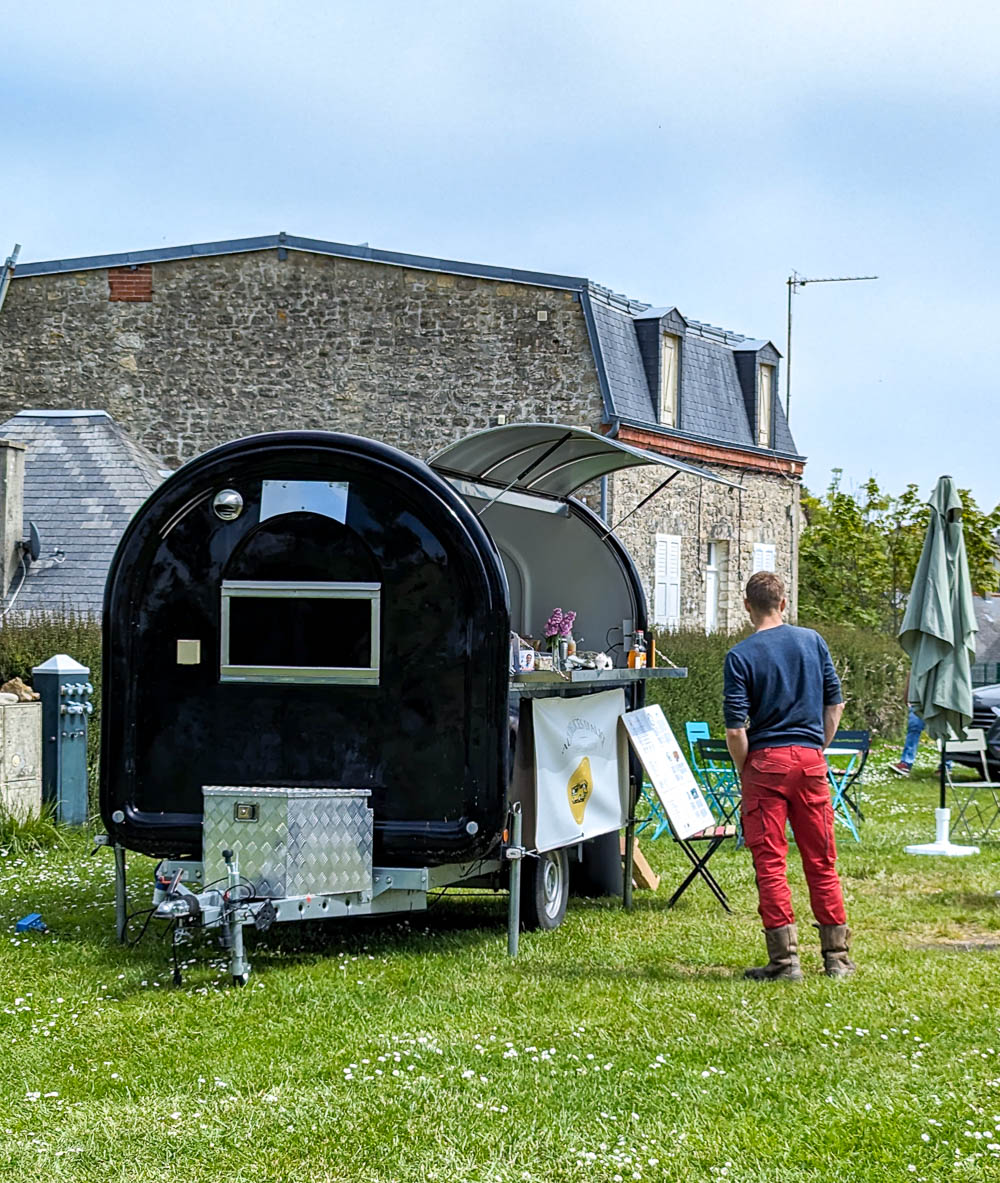
6. Normandy Victory Museum
One of the newer Normandy museums on this list, the Normandy Victory Museum opened in 2017 on the site of the former Normandy Tank Museum. It houses 10,000 original artifacts, 20 military vehicles, archival film, and more than 20 historical exhibits.
The Normandy Victory Museum is also sometimes referred to as the Hedge Battle Museum as it focuses largely on the Battle of the Hedgerows, one of the lesser known episodes of World War II. In this museum you’ll specifically learn about what happened in the days and months following D-Day.
This museum aims for an immersive experience and utilizes sound and visual aids on 20 sound stages to fulfill this mission. They showcase German occupation of the region, the resistance movements, the actions of the paratroopers, the region in ruins, and many more.
And If you’re interested in World War II tanks and other military vehicles, definitely check out my post on the American Heritage Museum where it’s all WWII transportation, all the time.
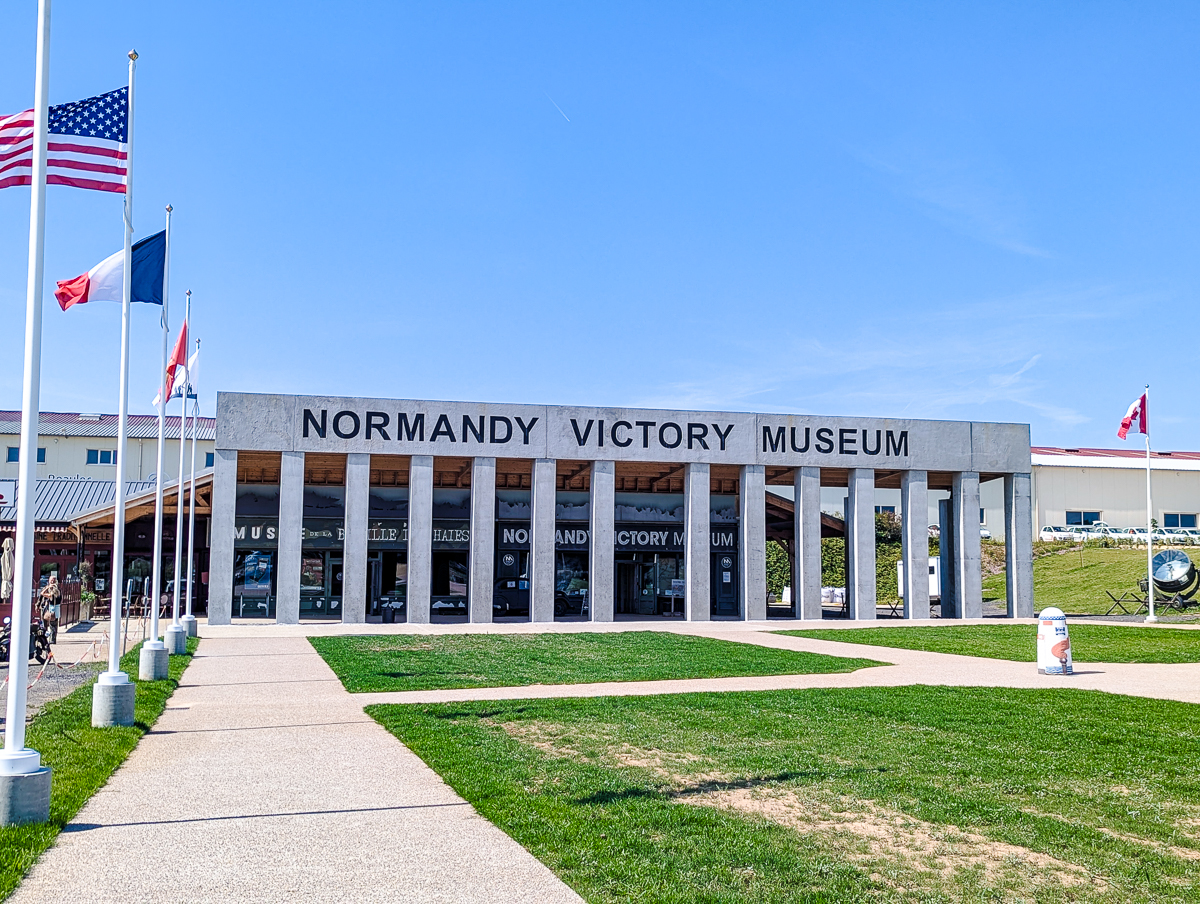
Why the Normandy Victory Museum is one of the best Normandy museums
Visitors feel the Normandy Victory Museum is one of the best Normandy museums for WWII enthusiasts because:
- Tours of this museum are self-guided so you can focus more on the parts that interest you.
- The artifacts are incredible—especially the Sherman tank, Higgins boat, military uniforms, trucks, dioramas, and more.
- It covers more than just the D-Day landings and tells the story of what happened afterward to ensure an Allied victory.
- There’s a café, a bar, and a pizzeria on site.
- Plus the fact that you have opportunities to handle actual WWII weaponry, sit inside a WWII Jeep, and ride in a working tank (!!!)
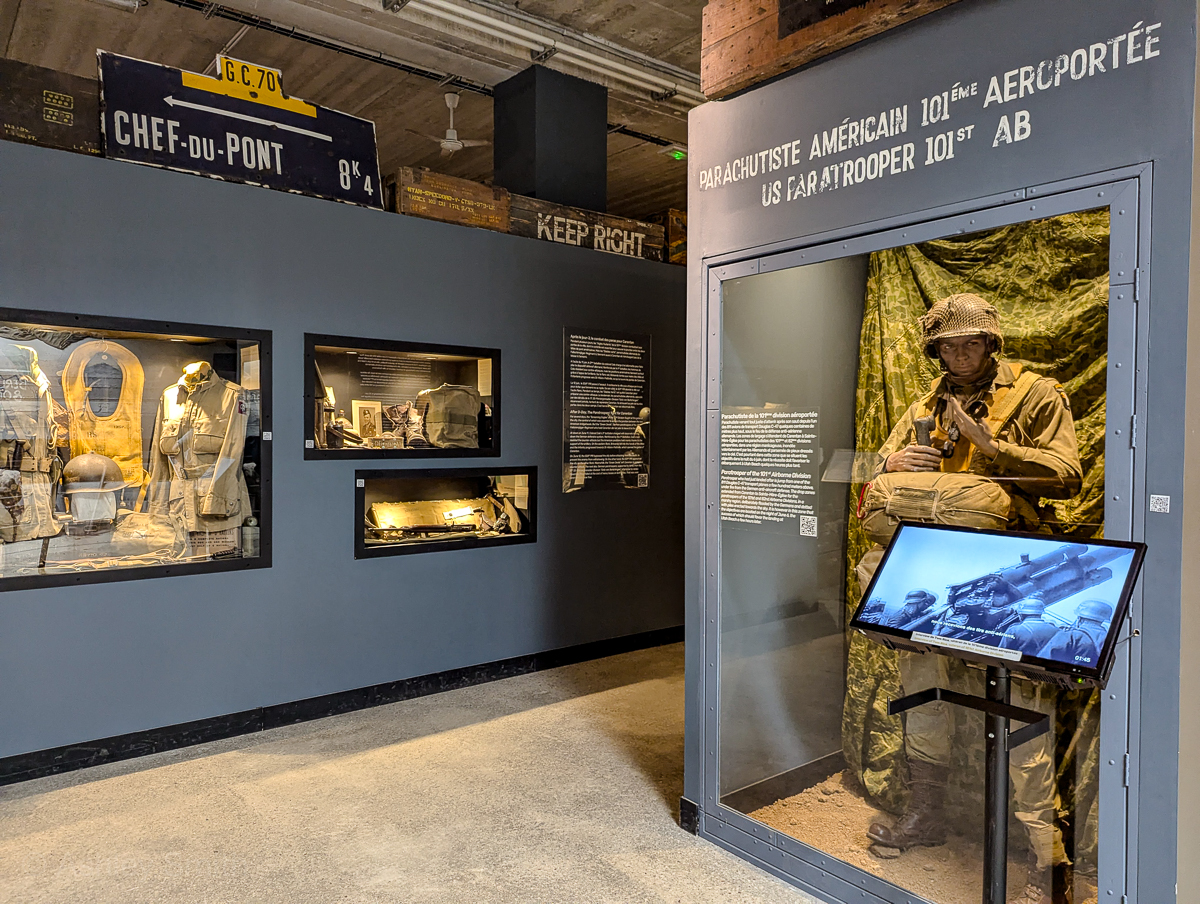
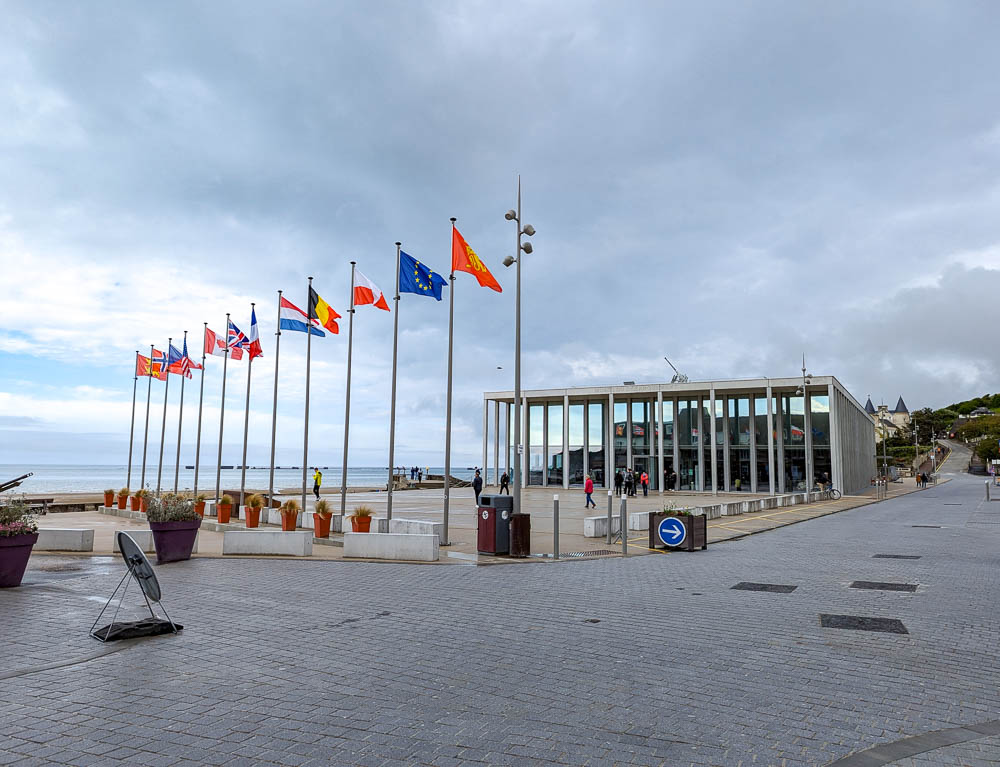
7. Musée du Débarquement
Musée du Débarquement (the Landing Museum) is located in one of my favorite parts of Normandy—the commune of Arromanches-les-Bains. Unlike the five Normandy beaches where the majority of fighting took place, the beaches of Arromanches were used to accommodate Mulberry harbors (artificial ports).
Because there wasn’t adequate space for unloading military vehicles (et al), Allied forces built temporary harbors here. Using these, they were able to unload and transport 9,000 tons of materials, equipment, vehicles, troops, etc. per day. You can still see the remnants of these artificial harbors today.
Here at the Musée du Débarquement, you can explore seven new galleries of museum space dedicated to topics like the German occupation of Arromanches and the D-Day landings, as well as working models and video projections to explain how the harbors worked. You’ll learn about the design and construction of these “Mulberry” harbors as well as the very important role they played in winning the war.
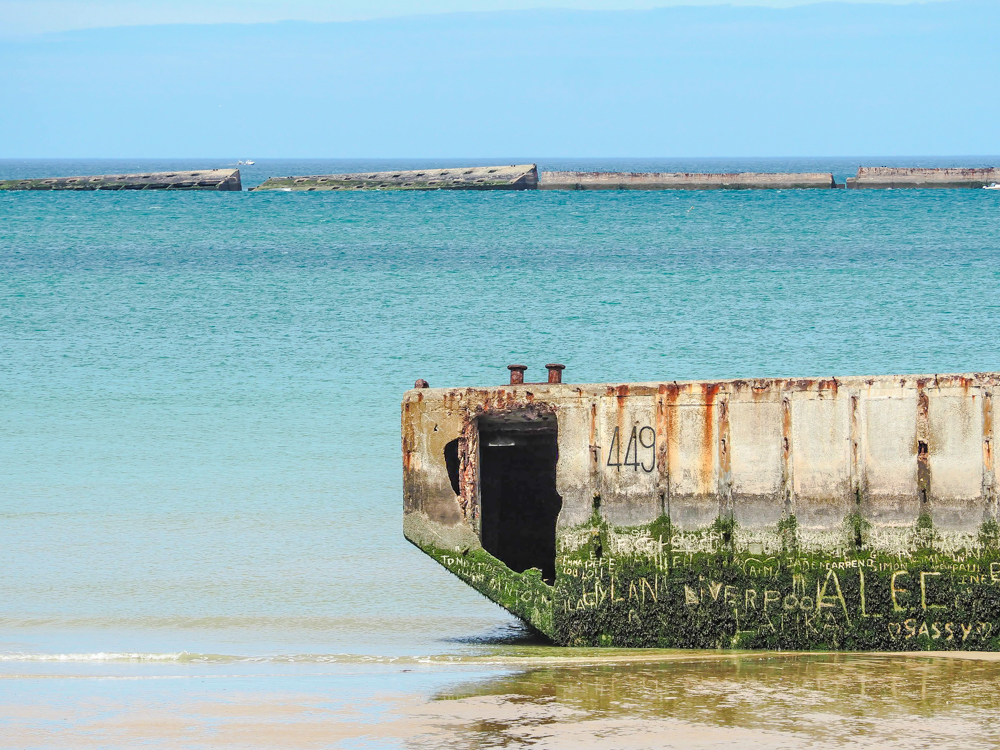
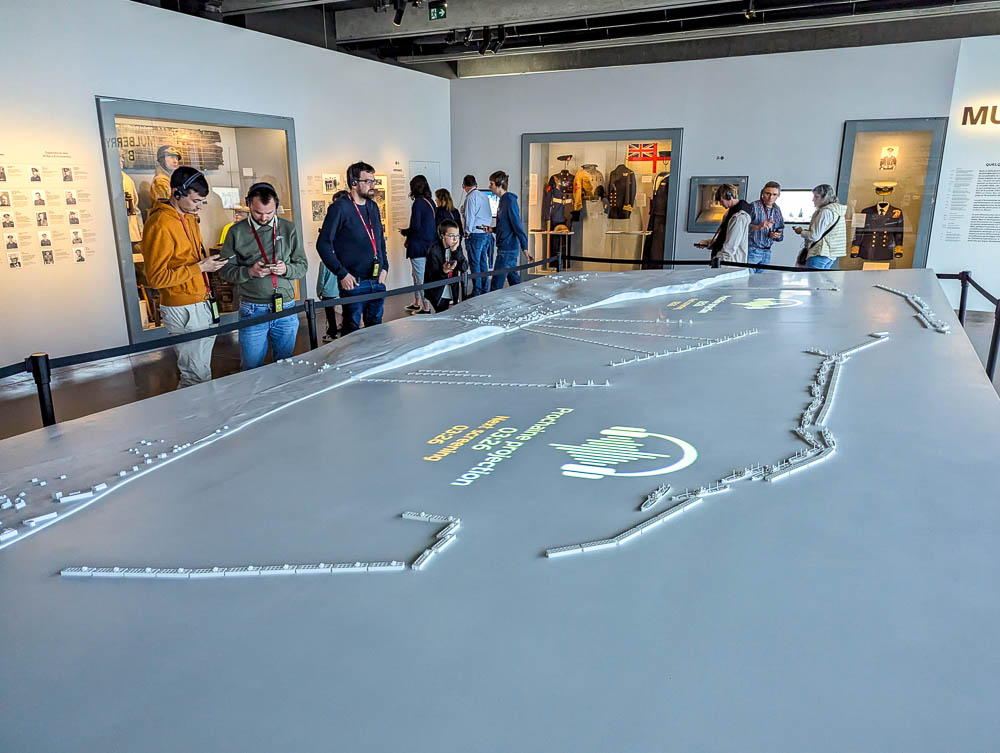
Why Musée du Débarquement is one of the best Normandy museums
I voted this one of the best museums in the area because:
- The artificial harbors you learn about in the museum are right outside the window. Being able to see both the actual site and historical footage simultaneously is a unique experience.
- The subject matter is especially interesting and one not typically covered in other museums. Some visitors are learning about these harbors for the very first time.
- Arromanches is purely delightful.
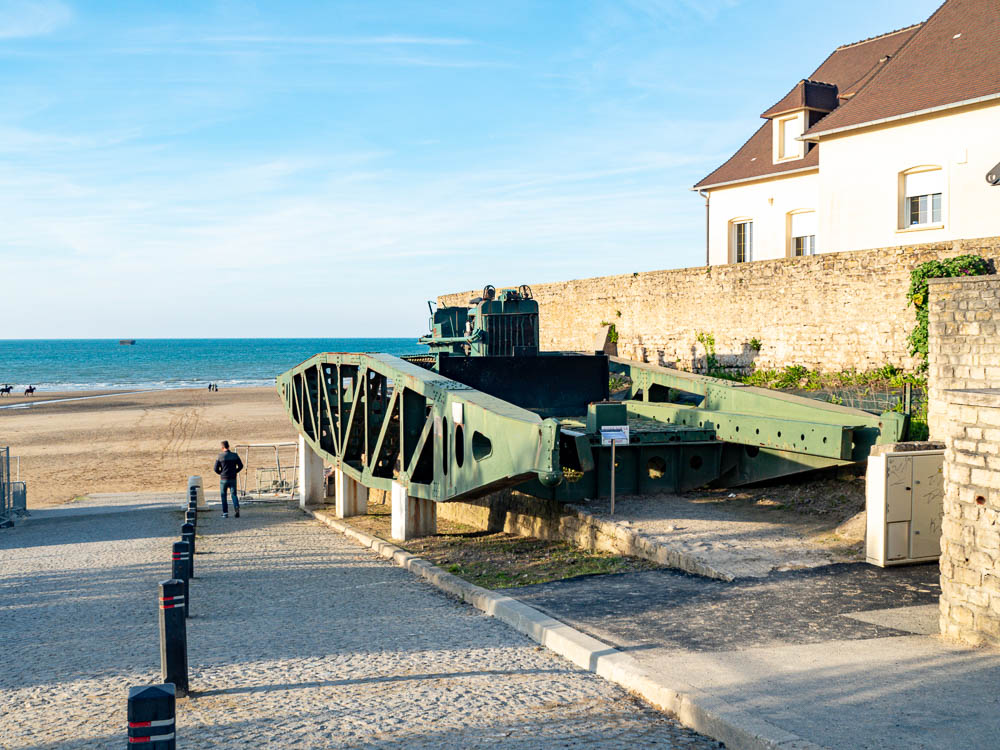
Musée du Débarquement: Need to know
Here are some helpful tips and things you should know for visiting the Arromanches Museum:
About the museum: The Landing Museum opened on June 5th, 1954 and was the first museum built to commemorate the D-Day landings. But as of April 2023, it has been completely redesigned and rebuilt. If you’ve been here before, it may be worth another visit.
About parking: This museum is located smack in the center of a very small town and doesn’t have a parking lot of its own. There are several small (paid) lots around the area or you can park at the large lot next to the Arromanches 360° museum (next on this list) and walk down the hill to this museum.
About visiting: An audio guide is included with your admission price and is available in 10 languages.
About Arromanches: This is a great place if you’re looking for some Normandy/D-Day souvenirs or looking to take a relaxing lunch break. My favorite place to eat in town is Fish & Co. for great fish & chips, local beer, and the friendliest staff in Normandy. (Seriously!)

8. World War II Museum (Quinéville)
At the far northern end of Utah Beach in the town of Quinéville you’ll find the World War II Museum. This museum traces the “complete chronological journey of the Second World War in Normandy.” I especially love this museum for its serene location at the tip of Utah Beach.
Inside you can see a reconstructed street of homes and shops under Nazi occupation (complete with sound), hundreds of historical artifacts, a bunker you can go inside, battle remnants and tanks outside, and a short film. This museum does a fantastic job of illustrating what life was like for the French during the initial German invasion, the entire Nazi occupation, D-Day, and more.
- Visitor information here: wwii-museum.com
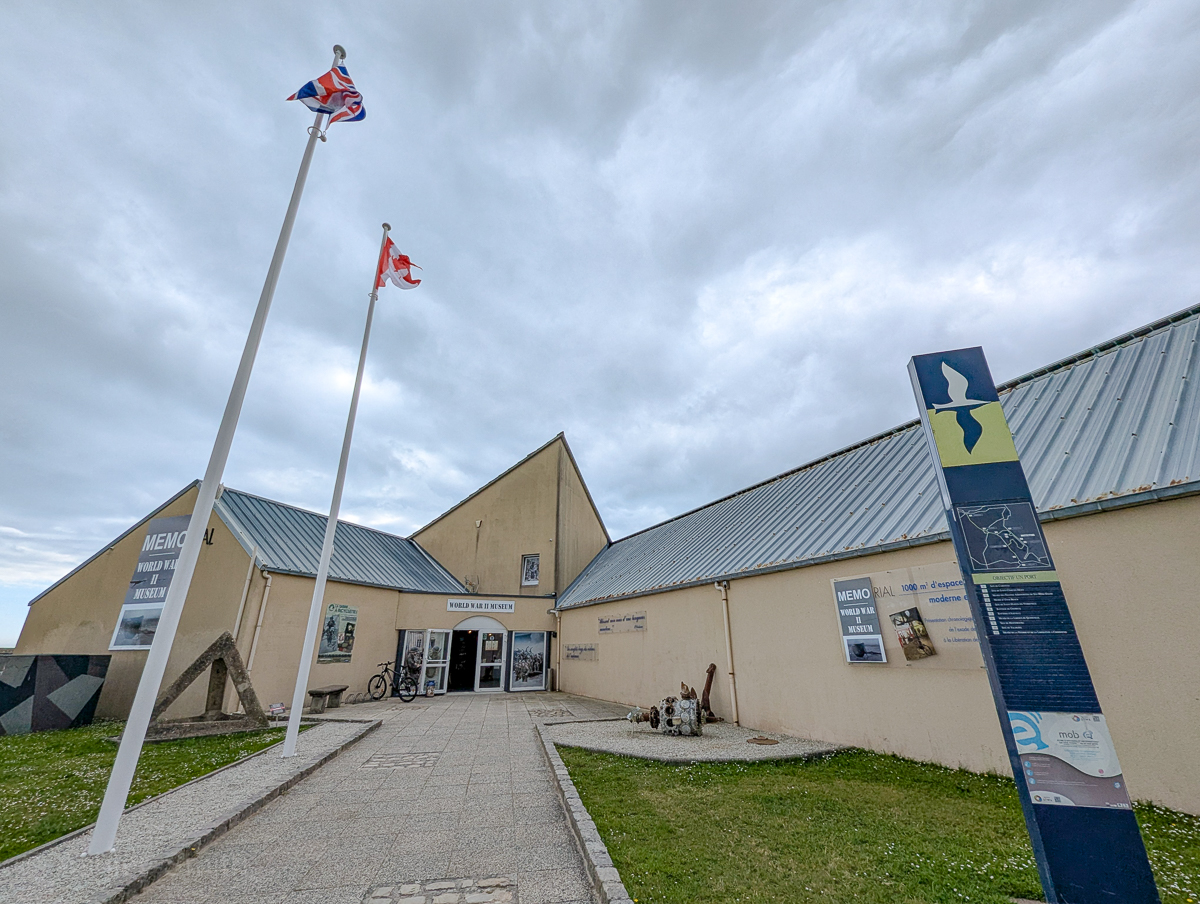
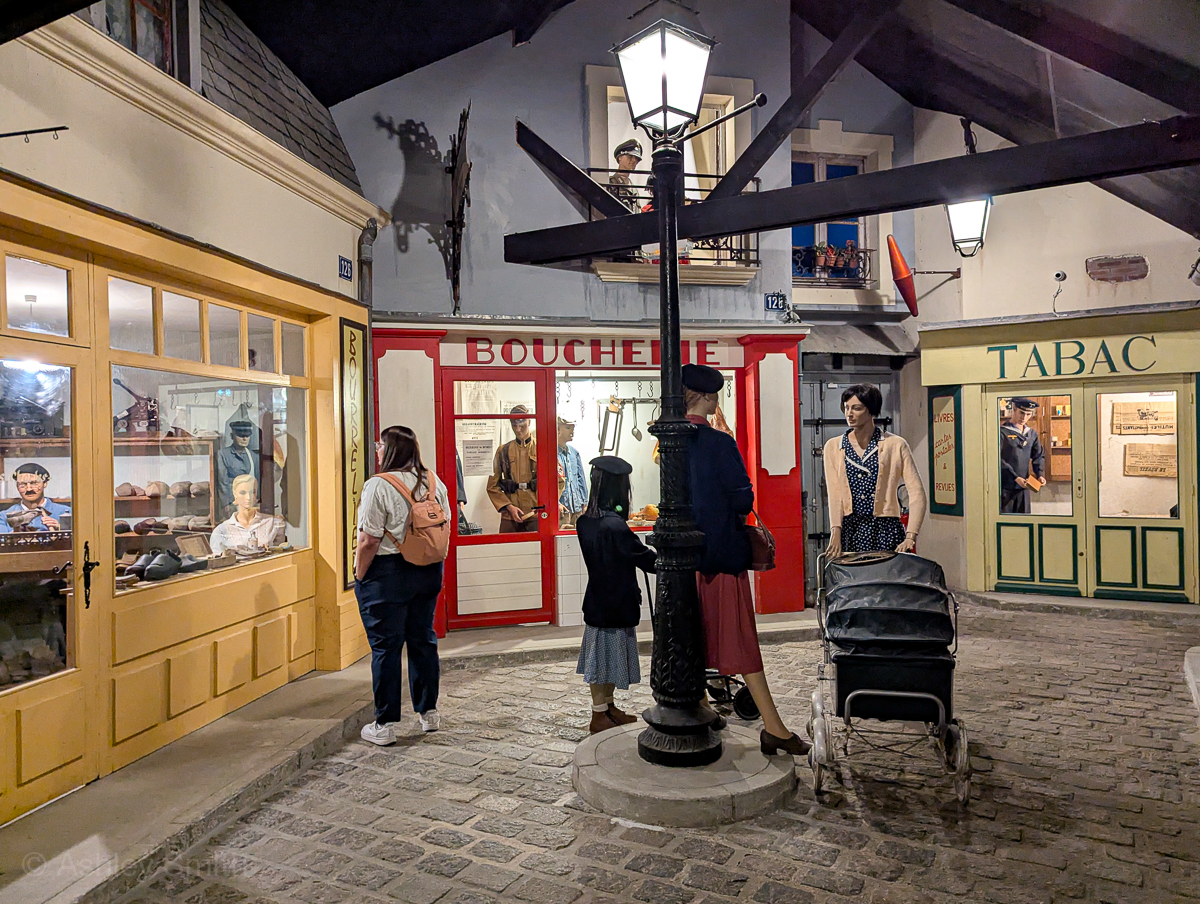
9. D-Day Wings Museum
For something a bit out of the ordinary, head down to Caen to the Carpiquet airfield where you’ll find the D-Day Wings Museum. This museum is located inside an airplane hangar that was used by the Germans as a base for their Stuka bombers during the Battle of Britain.
Inside, the museum focuses on historic D-Day aircraft, much of which is under restoration right before your eyes. They have a huge collection of aircraft and all kinds of other items, and even a Barrage Balloon from the 320th Barrage Balloon Battalion! (That was a first for me.)
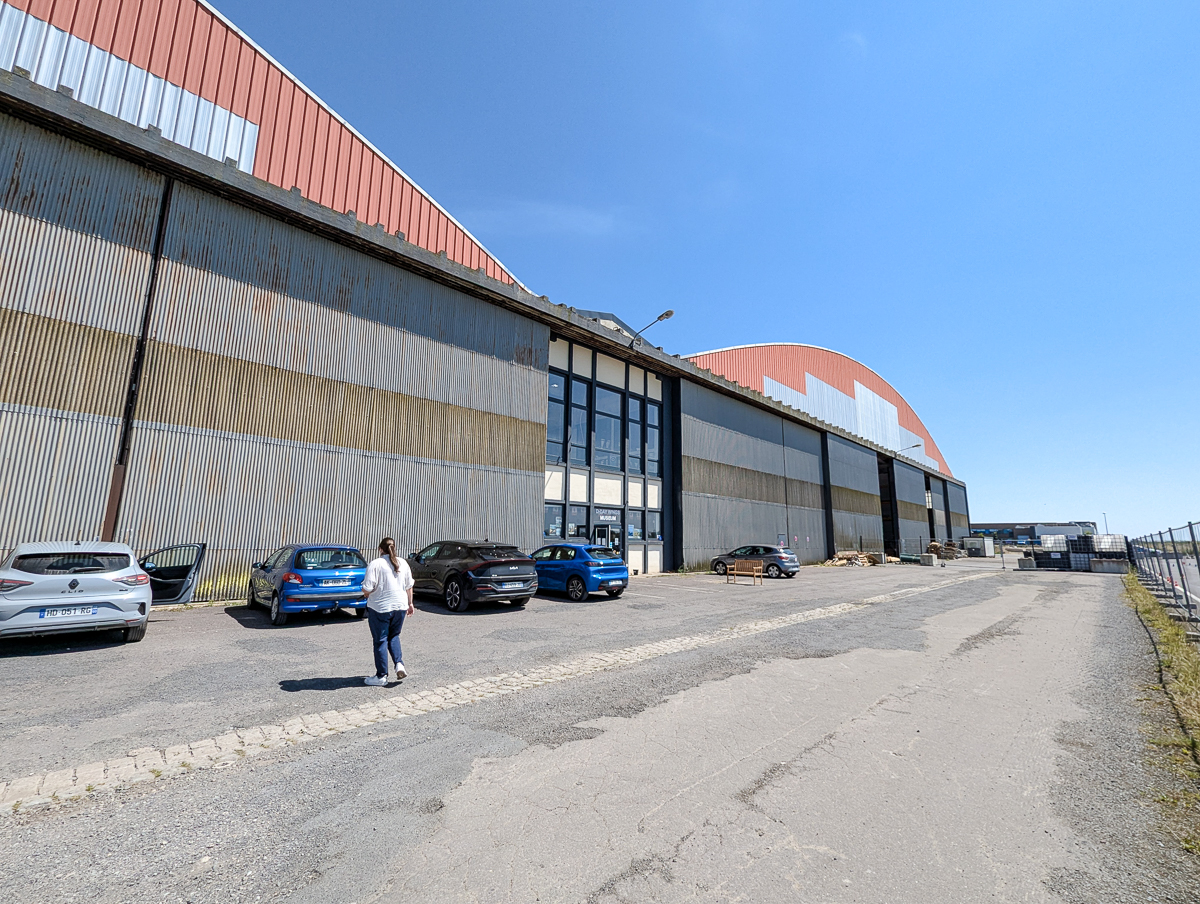
One of the neatest things about this museum though is that they offer you the opportunity to sit in some of the historic aircraft. My friend Amanda spent some time in the cockpit of a Spitfire (that was also used in the movie Pearl Harbor). I opted for the experience of a B-17 ball turret gunner–a position I’ve always been fascinated with. (Sometimes being small has its advantages!)
Not only did I get to sit in the ball turret, but the staff member then spun me in circles and moved me all around so I could get a more “well-rounded” experience. This was such a cool experience!
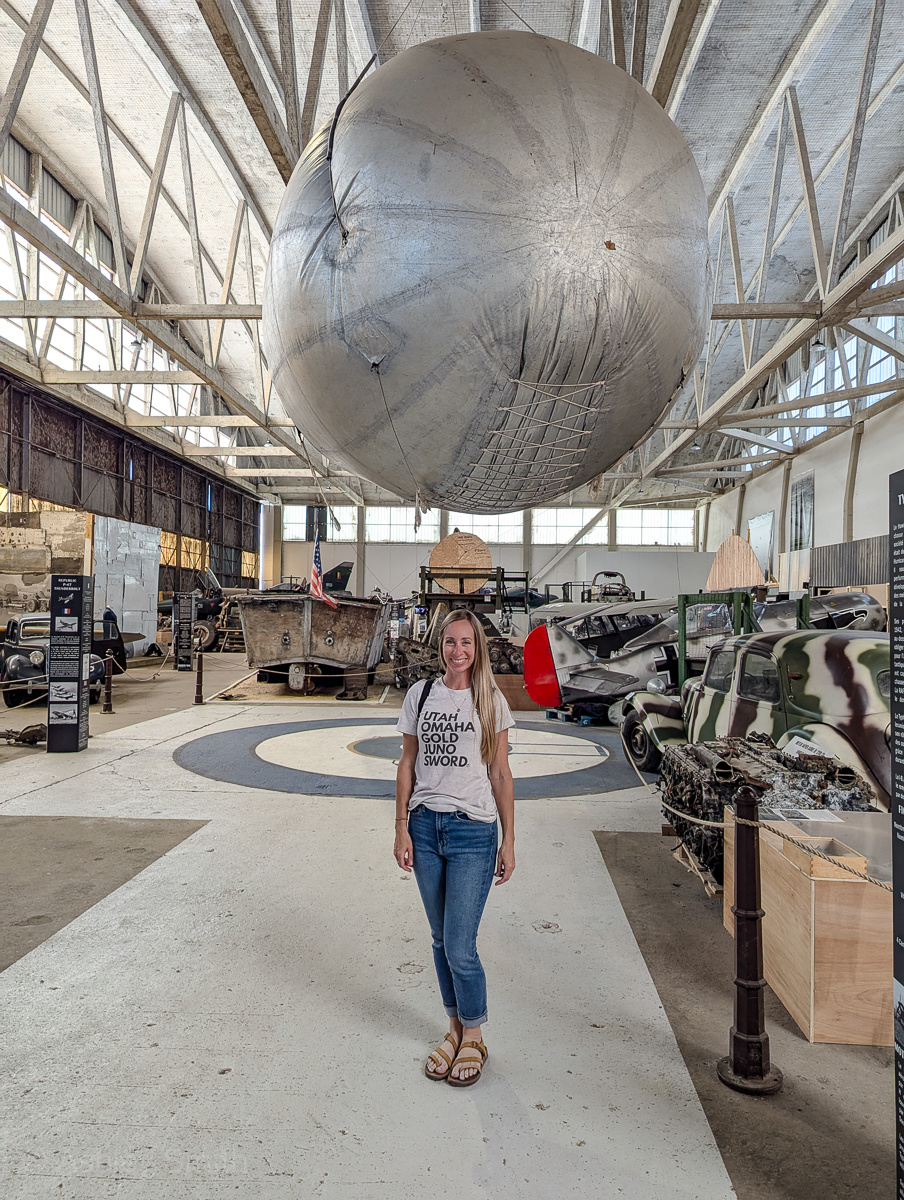
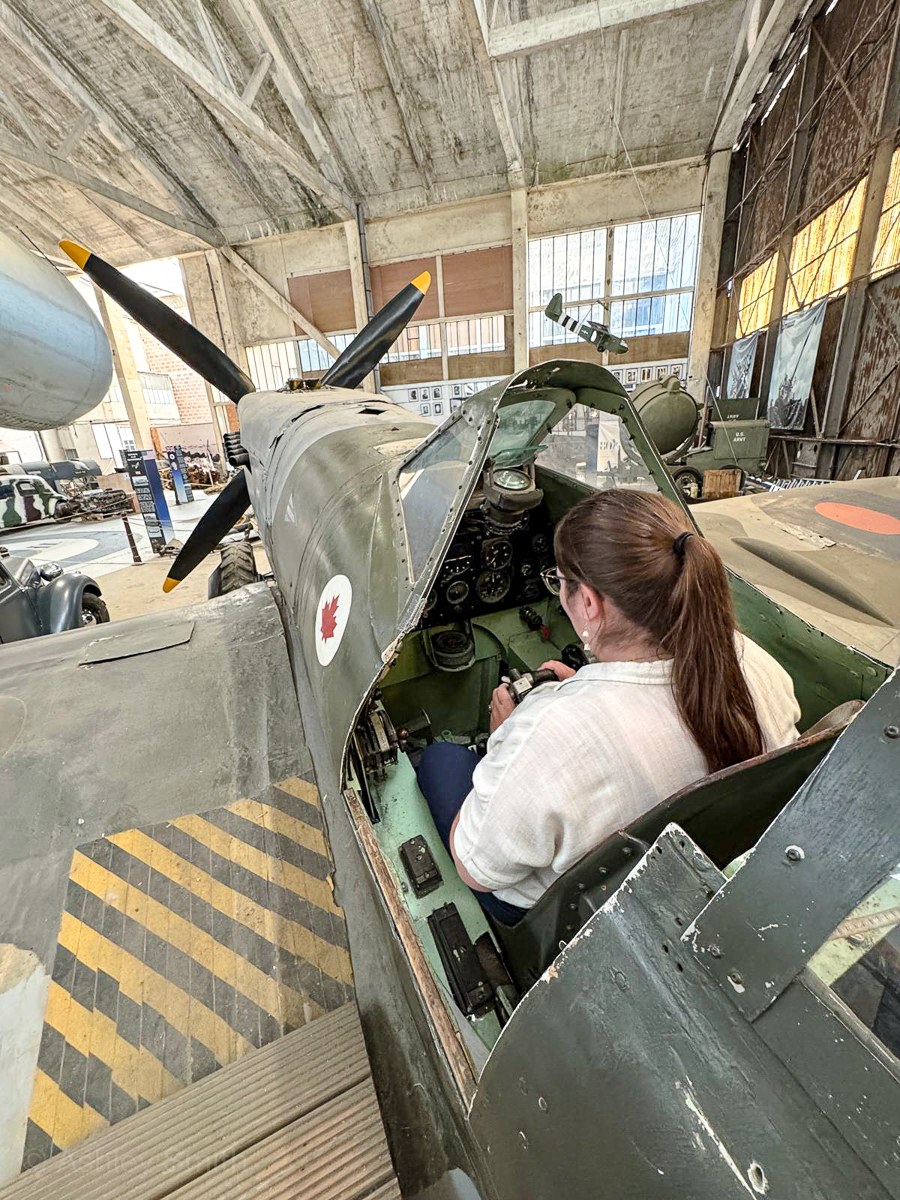
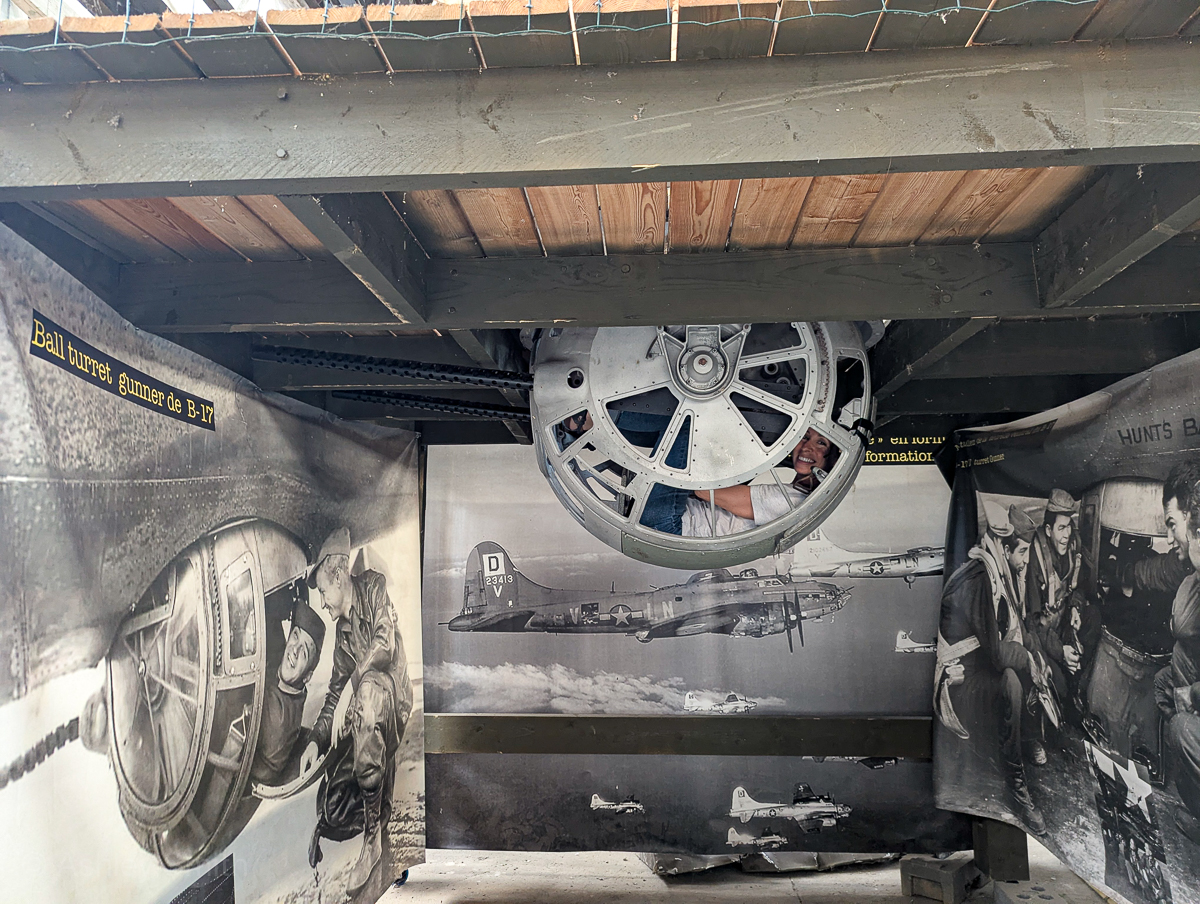
10. Memorial Museum of the Battle of Normandy
Unlike many of the other Normandy museums on this list that center on just a particular portion of the war, the Memorial Museum of the Battle of Normandy in Bayeux focuses on the entire Battle of Normandy.
This museum describes, in detail, all military operations from June 7 to August 29, 1944 – day-by-day and some hour-by-hour. They have a wide collection of historical equipment, vehicles, uniforms, and other personal artifacts of both German and Allied soldiers.
In addition to these artifacts, the Memorial Museum of the Battle of Normandy uses dioramas and the film “Normandy ’44, Decisive Victory in the West” to illustrate the battles.
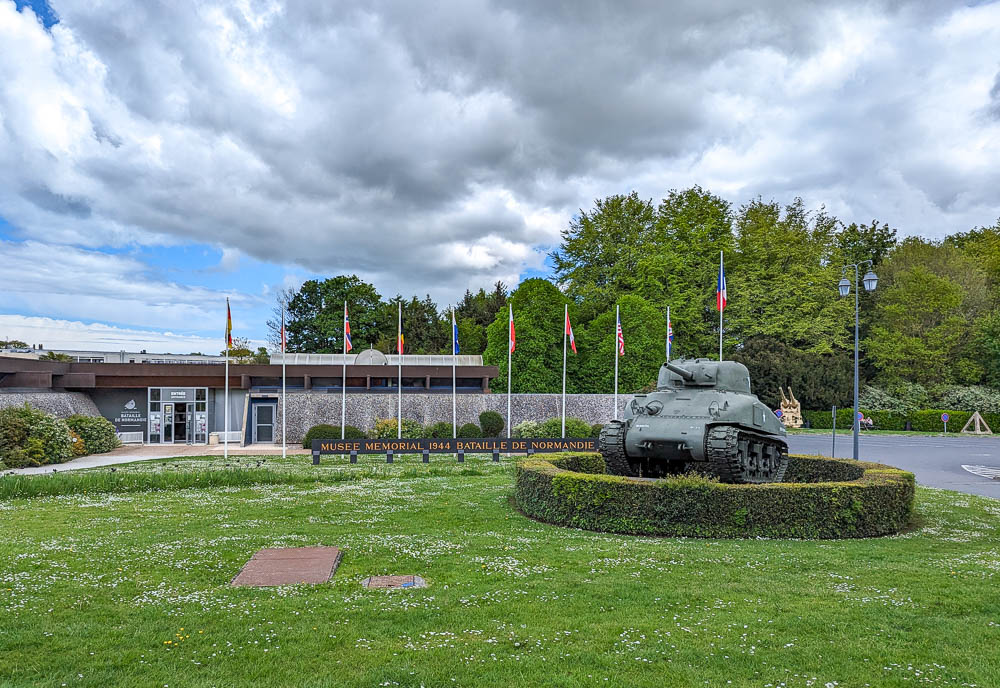
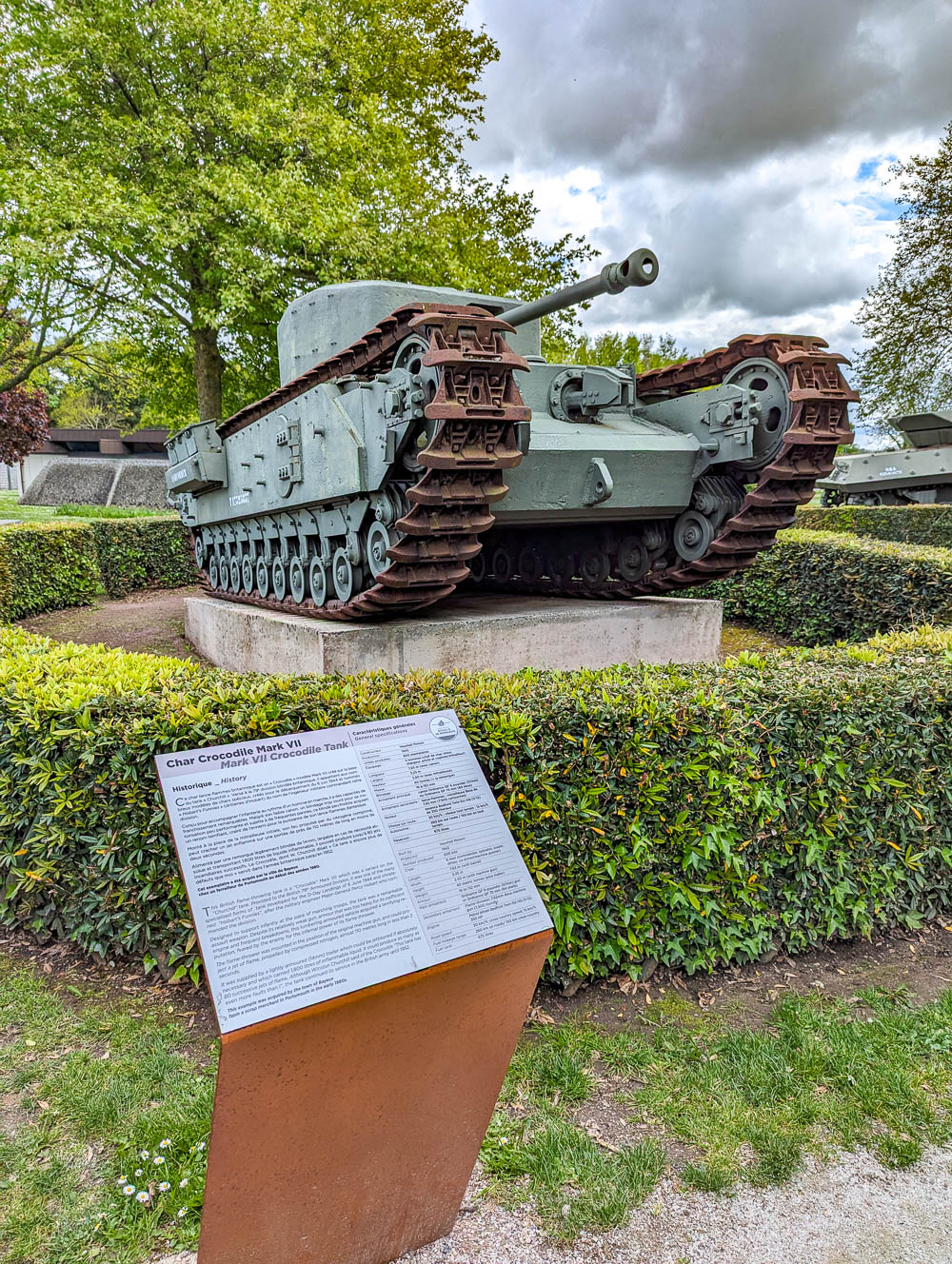
Why this is one of the best Normandy museums:
I particularly like the Memorial Museum of the Battle of Normandy because:
- Of how it describes lesser-known aspects of the war, like how the Allies got fuel to their troops on the frontlines, for example
- You can learn about the entire Battle of Normandy in one place which really helps connect the dots
- It provides commentary on all the equipment and personal effects on display and how each piece played a part in the war
- It’s informative without being boring

Battle of Normandy museum: Need to know
Here are some helpful tips and things you should know for visiting the Memorial Museum of the Battle of Normandy:
About tickets: You can buy a combination ticket that includes the Bayeux Tapestry Museum and/or the MAHB Museum of Art and History Baron Gérard. If you have some non-WWII plans here in Bayeux, this is an easy way to save some money. You can purchase the combination ticket when you get to whichever one you visit first.
About parking: The Memorial Museum of the Battle of Normandy has its own (free) parking lot. From here you can also visit the Bayeux War Cemetery and the War Correspondents’ Memorial. For everything else worth seeing in the Gold Beach sector, check out that link.
About the film: The documentary film “Normandy ’44, Decisive Victory in the West” lasts 25 minutes and is shown in both French and English. Museum staff will make the rounds to let you know when it’s about to start.
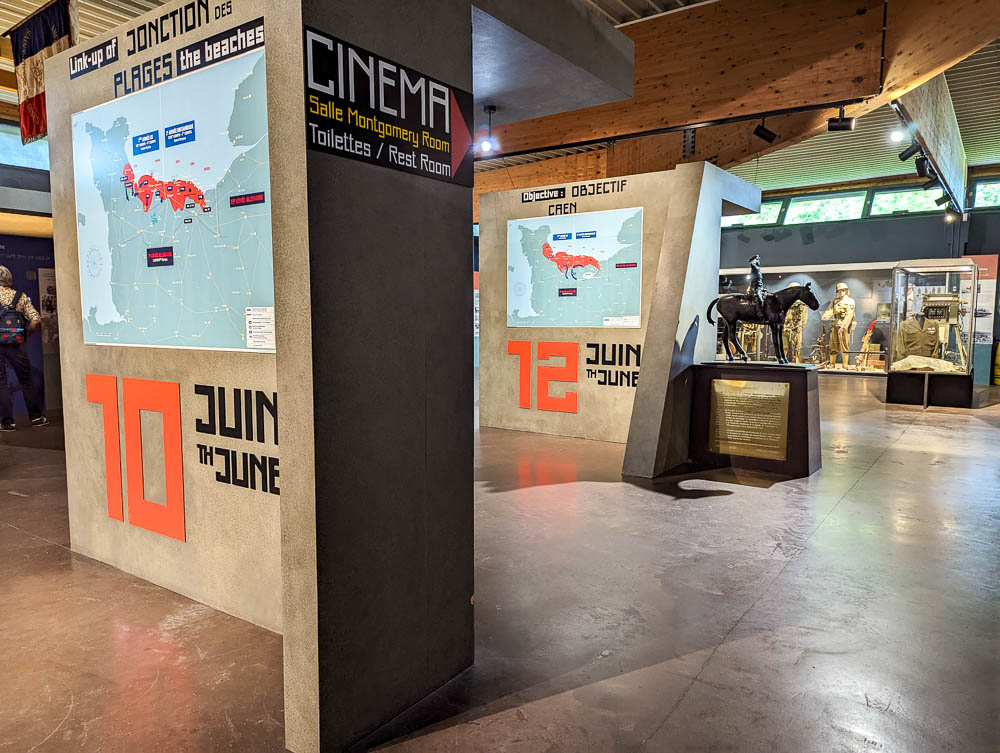
11. Juno Beach Center
Located right on Juno Beach is the Juno Beach Center–the only Normandy museum dedicated to Canadian troops in World War II. 🍁
Though the location is where Canadian troops landed on D-Day, the Juno Beach Center focuses on more than just their D-Day contributions. Instead, this museum tells the story of Canada’s military and civilian contributions to all of World War II in addition to life in Canada before, during, and since the war.
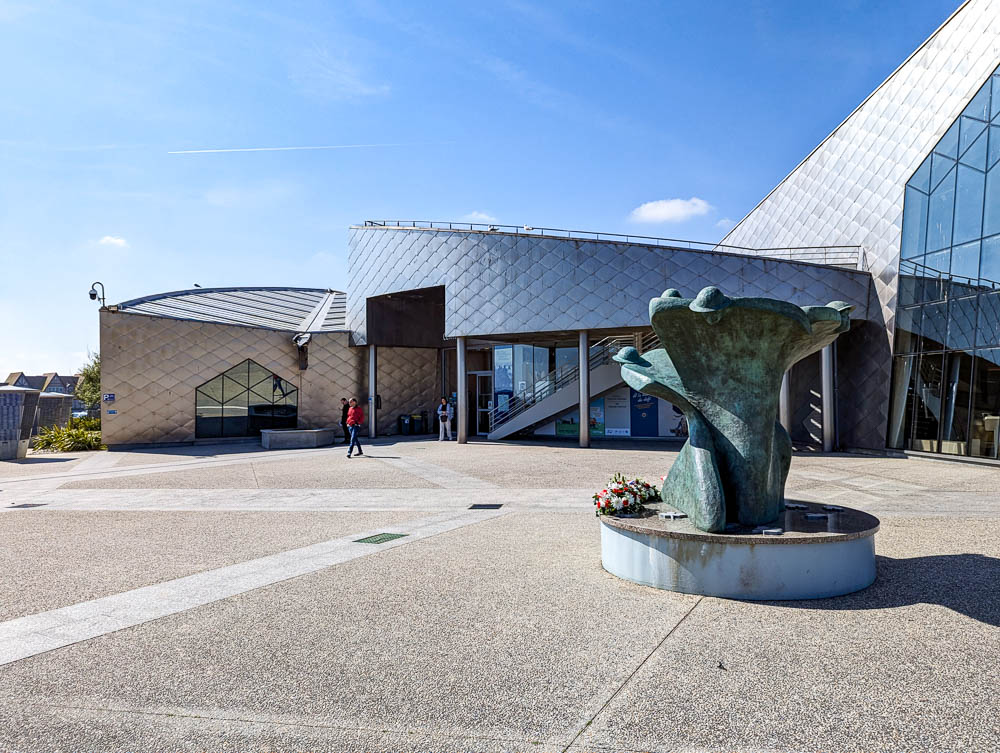
What to see at Juno Beach Center
At Juno Beach Center, be sure to check out their exhibits on:
- Courseulles, June 6th, 1944 – Visitors stand in a simulated amphibious landing craft to get inside the minds of troops landing on Juno Beach on D-Day
- Canada in the 1930s – The state of Canada before the war: its economic, military, and political situations
- Canada goes to war – The transformation of the country as it entered World War II
- Road to Victory – Each of the military campaigns Canada participated in during the war
- Some Came Back, Others Did Not – A memorial to the 45,000 Canadians who lost their lives fighting in WWII
- They Walk With You – An immersive film using archival footage and reenactments of Canada’s role in D-Day and the Battle of Normandy
The Juno Beach Center also offers temporary exhibitions throughout the year. It’s located in Juno Park, a one-time D-Day battleground that still contains many remnants of the war you can explore.
The Juno Beach Center is located in the Juno Beach landing sector. Here’s everything else you can see and do at Juno Beach.
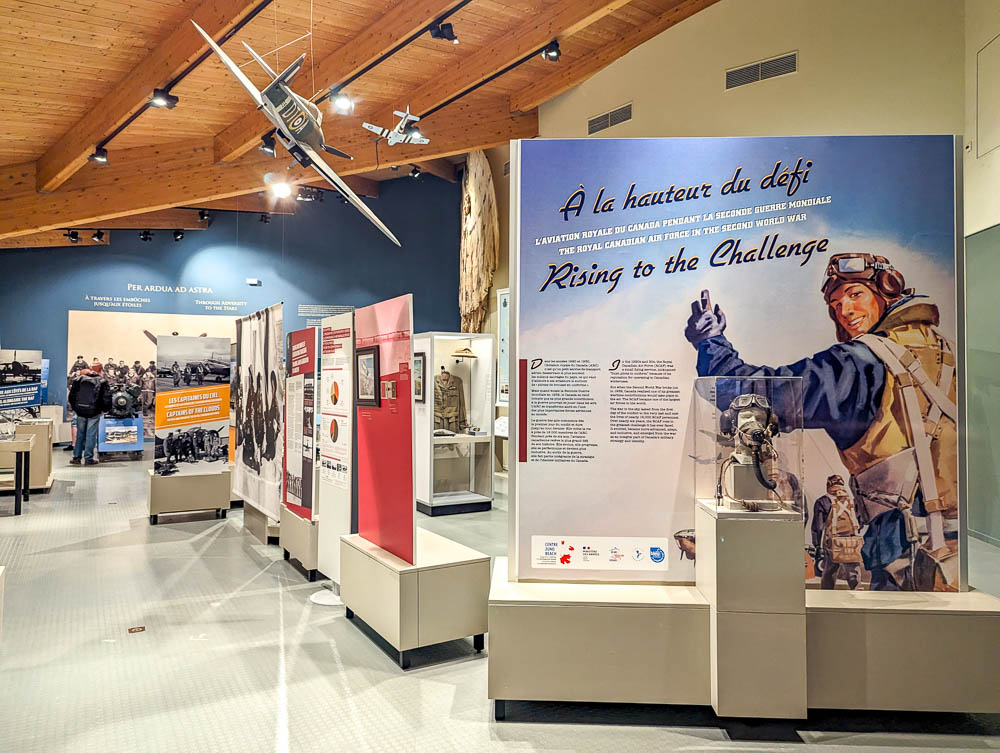
Why the Juno Beach Center is one of the best Normandy museums
I definitely recommend a visit to the Juno Beach Center because:
- It’s a must-see for Canadian visitors and tells Canada’s history like none of the other Normandy museums do
- Seeing the remaining structures from WWII in Juno Park is pretty cool
- It describes so much more than the war, like the events leading up to it and what life was like afterwards in Canada
- They employ Canadian tour guides and staff
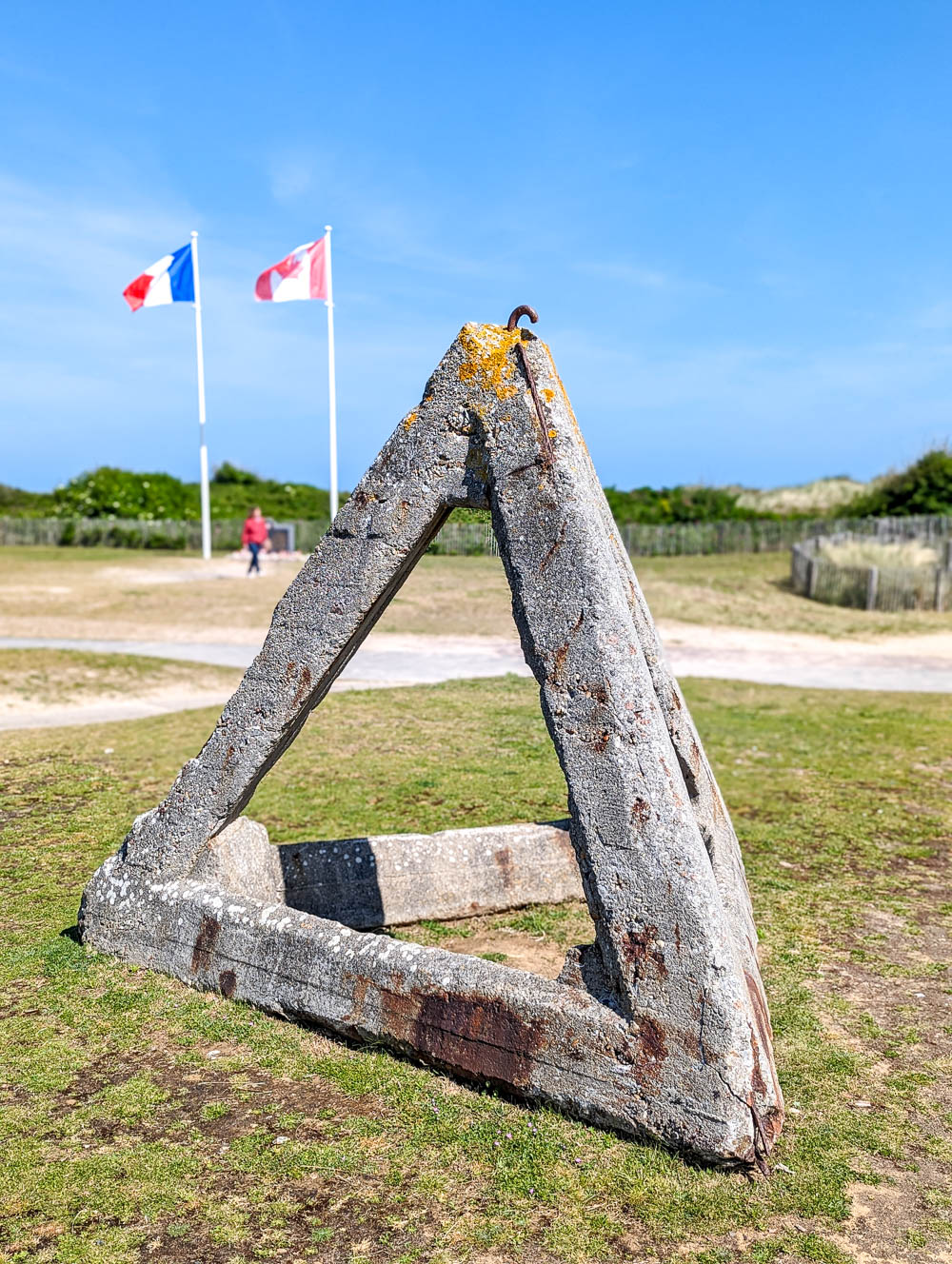
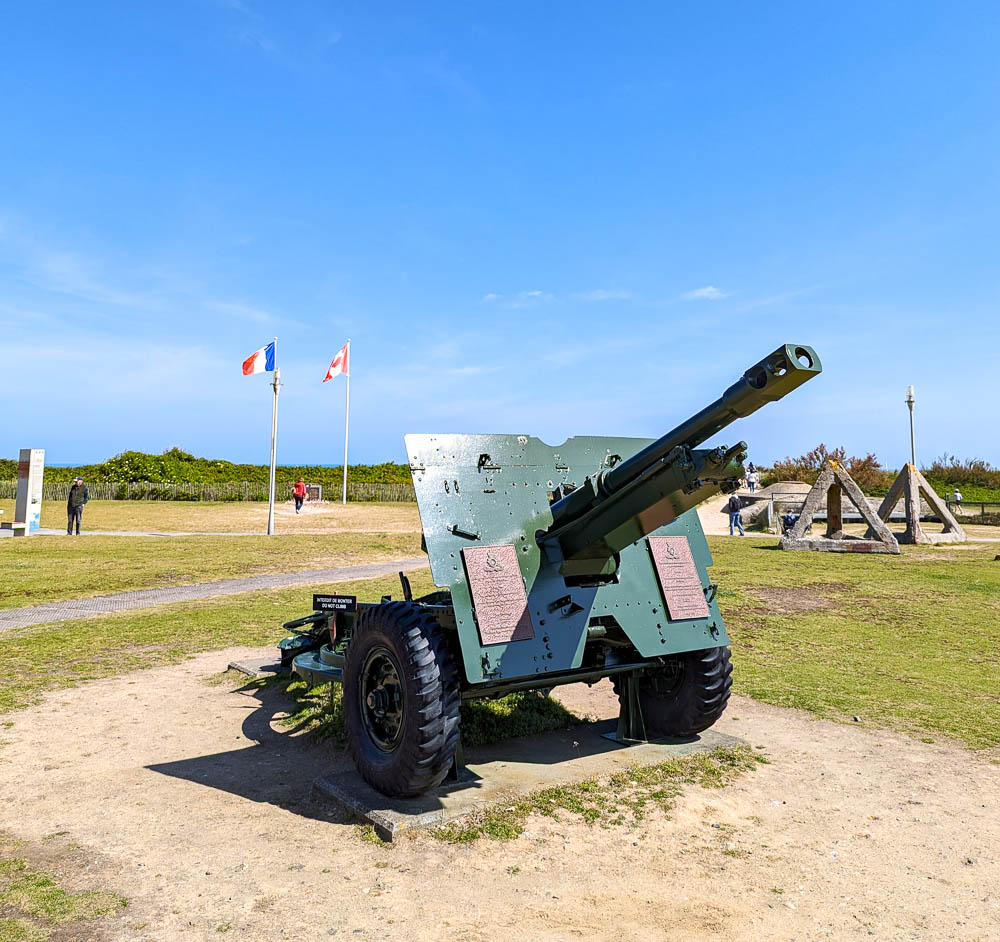
Juno Beach Center: Need to know
Here are some helpful tips and things to know for visiting the Juno Beach Center:
About parking: The parking lot at the Juno Beach Center fills up really fast but you can park for free just a short walk away either up next to the beach (near the Lorraine Cross) or in the lot a little further down on Avenue du Général de Gaulle.
About the bunkers: Outside the Juno Beach Center are some former German bunkers. You can go inside these yourself, but only as part of a guided tour through the museum. Just add on this tour when you purchase your museum ticket.
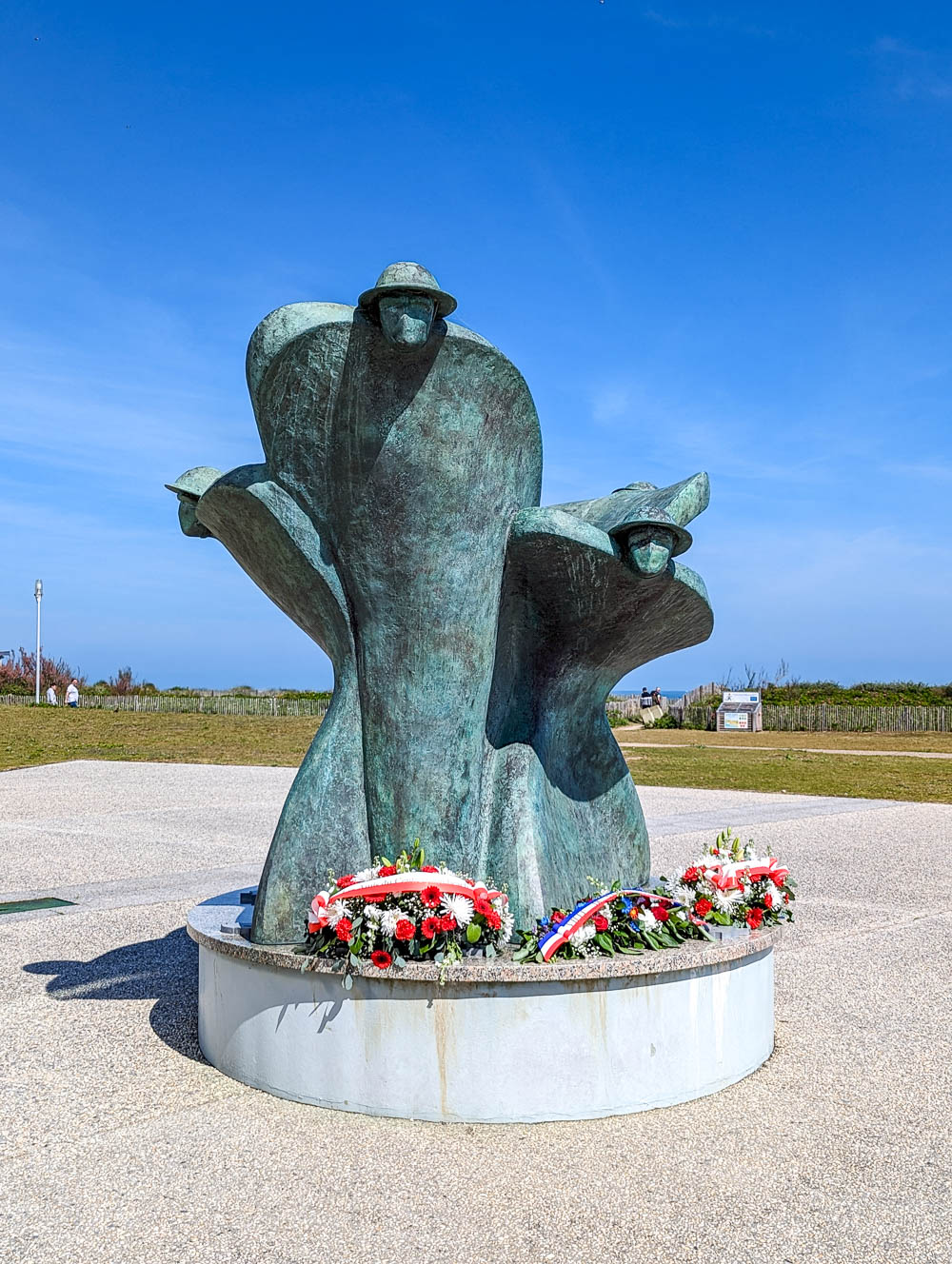
12. Le Grand Bunker (Museum of the Atlantic Wall)
Le Grand Bunker (also known as the Museum of the Atlantic Wall) is located within the five levels of the former German bunker at Ouistreham. This grand bunker is the last visible evidence of the most powerful coastal battery in the region and has been completely renovated to appear as it was in June 1944.
During World War II, this blockhouse served as the nerve center for German command and controlled all batteries in the area. This 52-foot tall concrete tower remained under German control until June 9th when British lieutenant Bob Orrell and his men took it over.
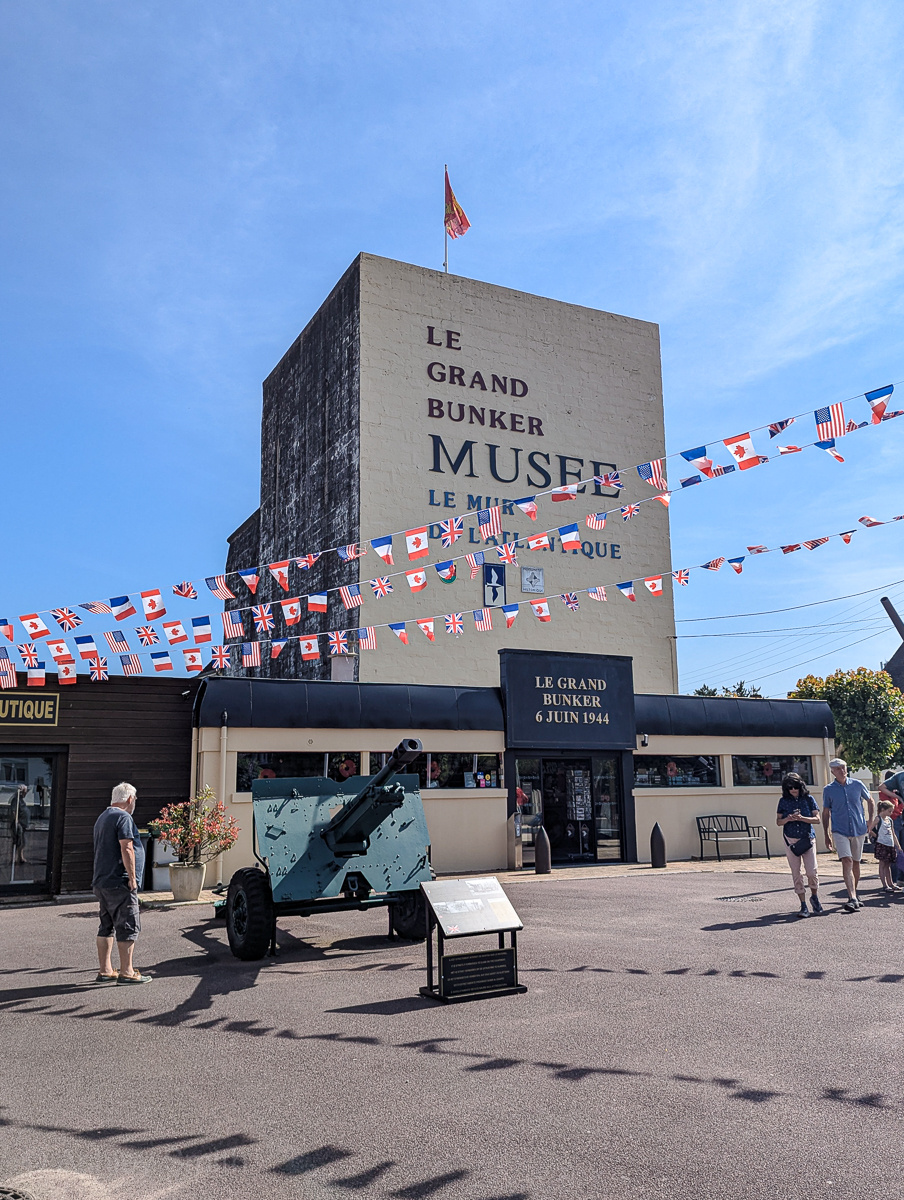
What to see at Le Grand Bunker
Today, the museum encompasses all five floors which are all arranged to appear as they did on D-Day. Each level and all rooms show how they organized operations inside the bunker through use of documents, plans, maps, and lifelike(ish) mannequins. You’ll see spaces like:
- Generator and machine rooms
- Ammunition bunker and anti-gas rooms
- Officers’ rooms
- Armory, first aid, and equipment rooms
- German flak
If you’re not afraid of heights or tight spaces, you can even climb the ladder to the rooftop platform for 360° views of the entire area and beaches.
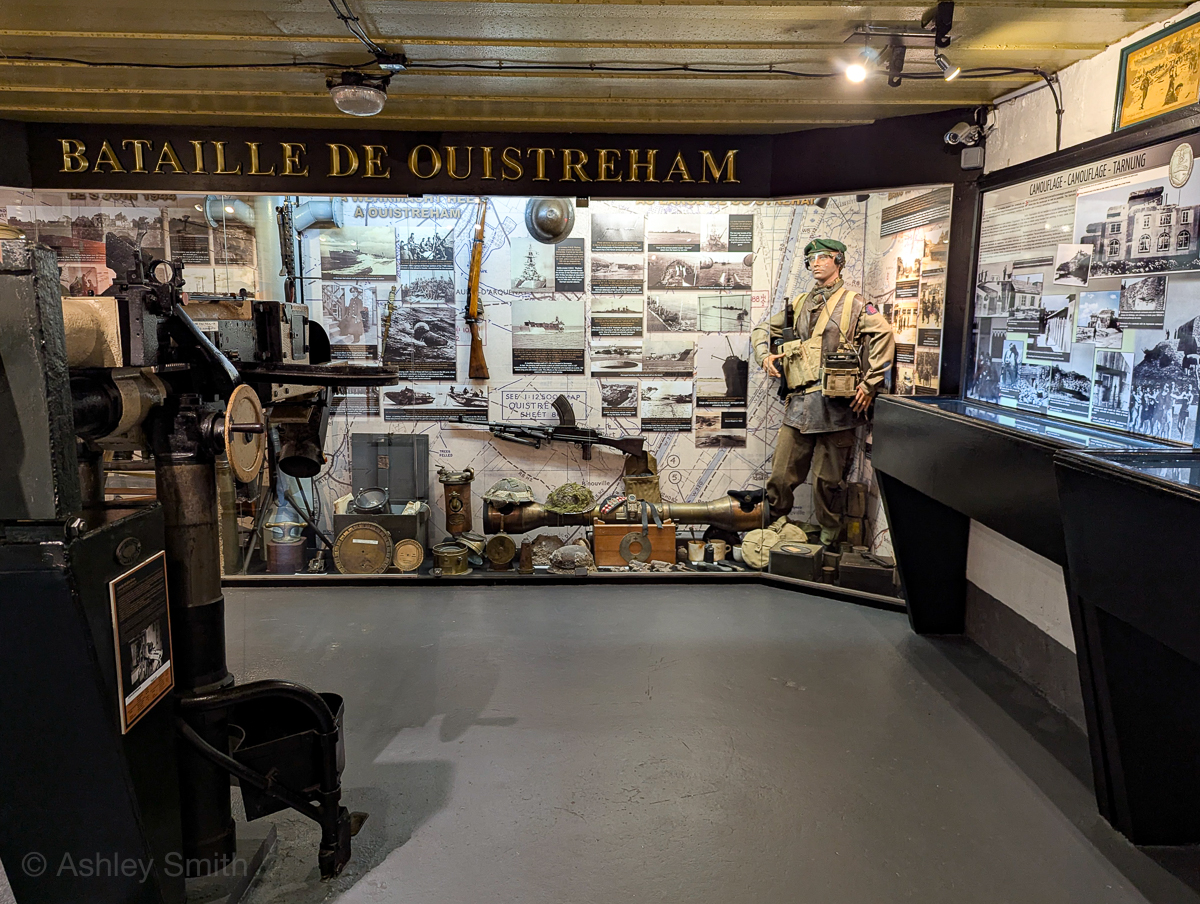
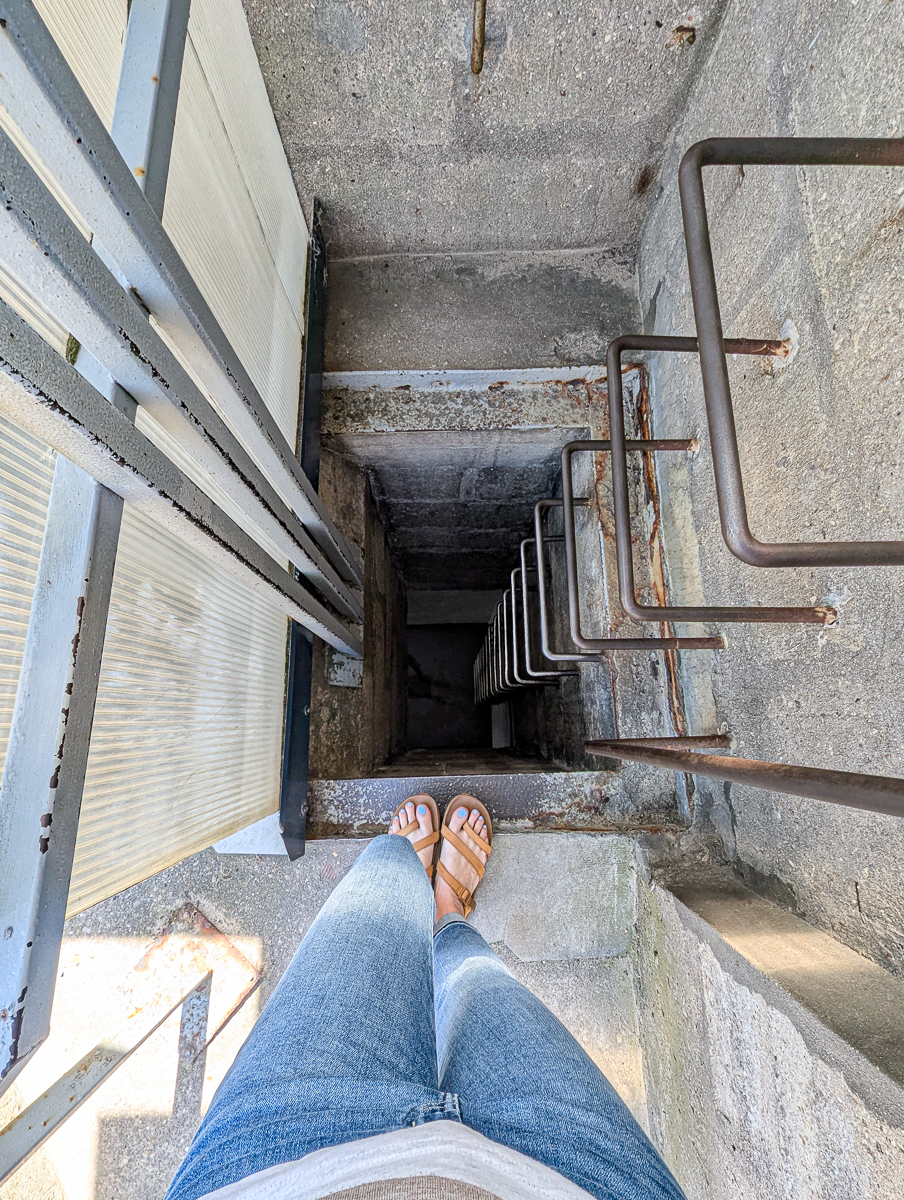
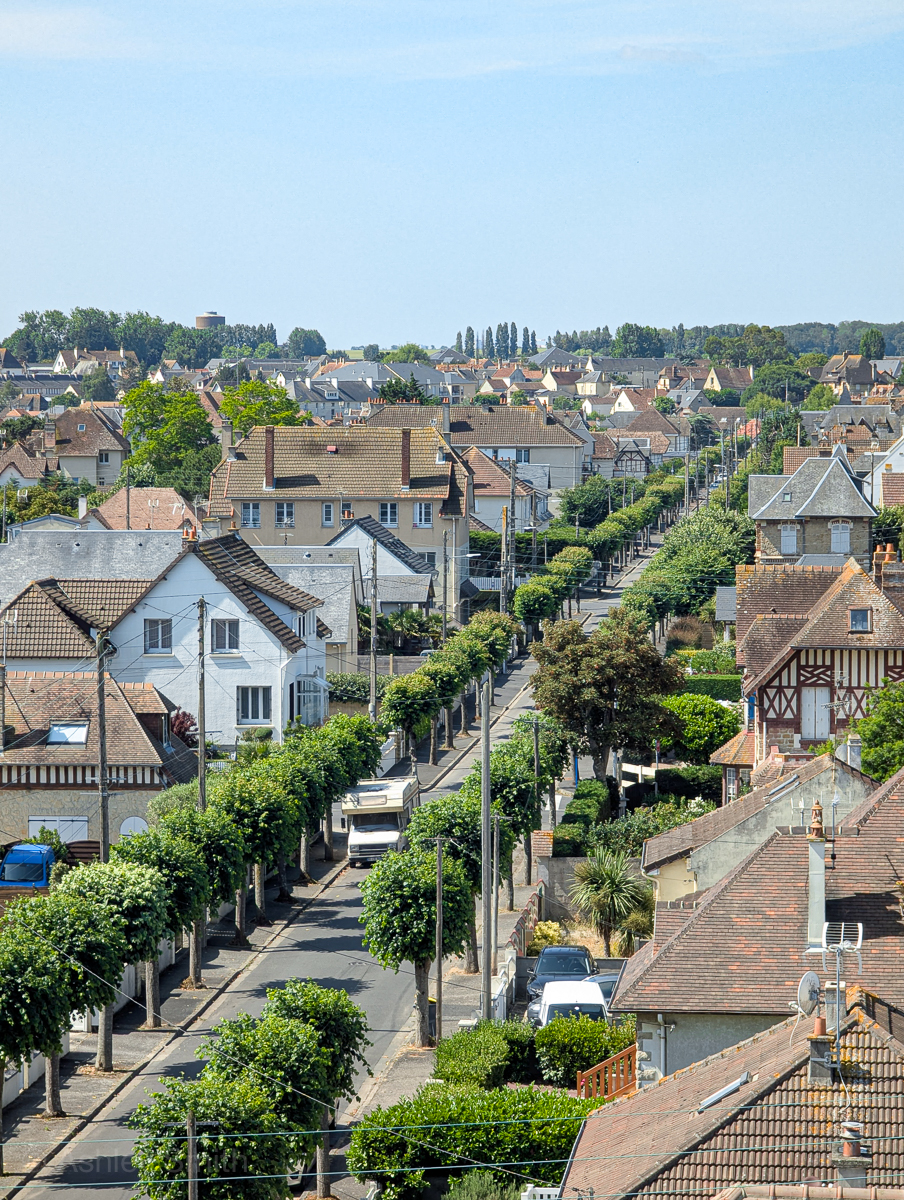
Why Le Grand Bunker is one of the best Normandy museums
Visitors love this museum mostly because:
- It’s a highly immersive experience
- It’s a great way to learn about the Nazi operation side of things
- Getting to the rooftop platform is an adventure of its own
- Who doesn’t love Tom Hanks and Saving Private Ryan?
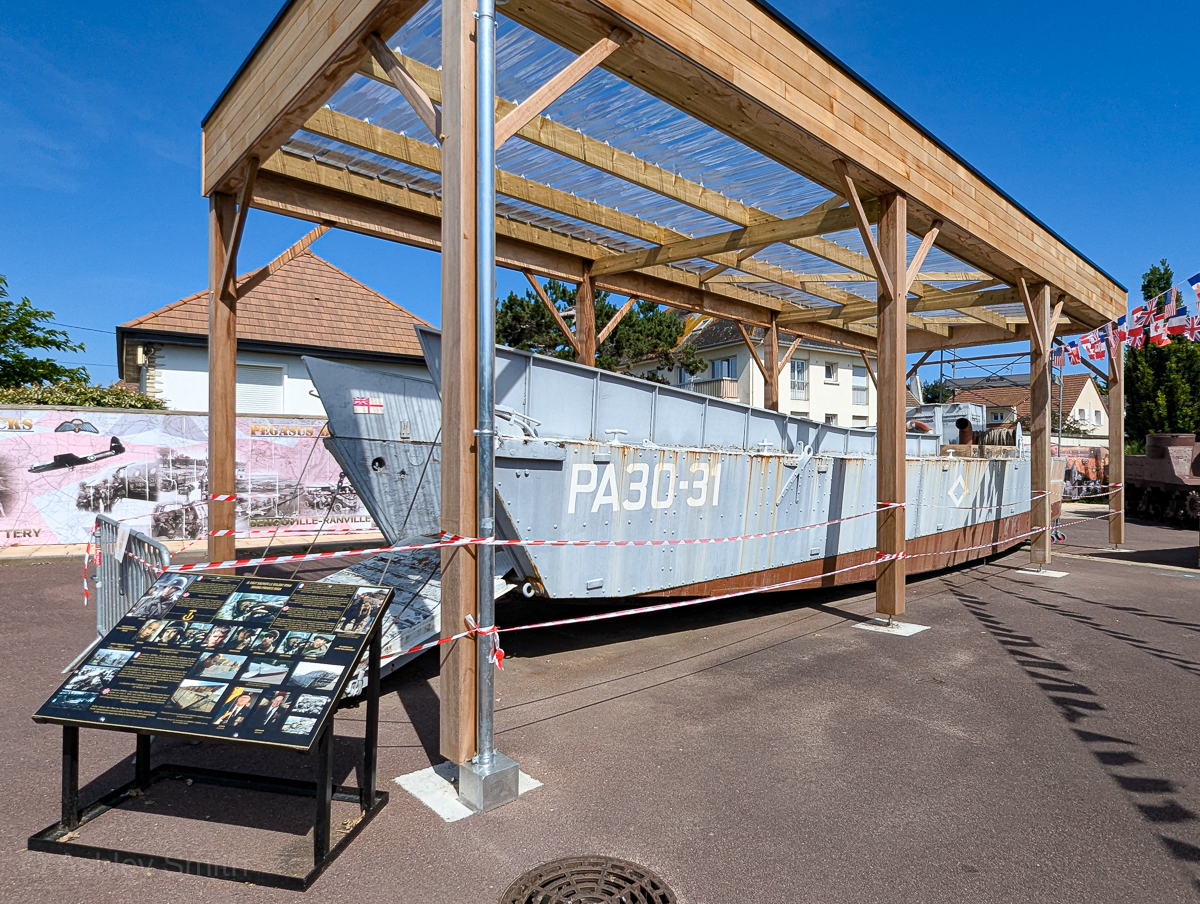
Le Grand Bunker: Need to know
Here are a couple helpful tips and things to know for your visit to Le Grand Bunker:
About the roof: Head to the museum’s rooftop and enjoy 360° views of the city, the D-Day landing beaches, and the estuary of the Orne River.
About the boat: Here at Le Grand Bunker you can also check out the D-Day landing craft used by Tom Hanks’s character in the movie Saving Private Ryan. This craft, PA 30-31, was used in the actual D-Day landings, then fully restored and modified for use in the film, then brought here to be put on display.
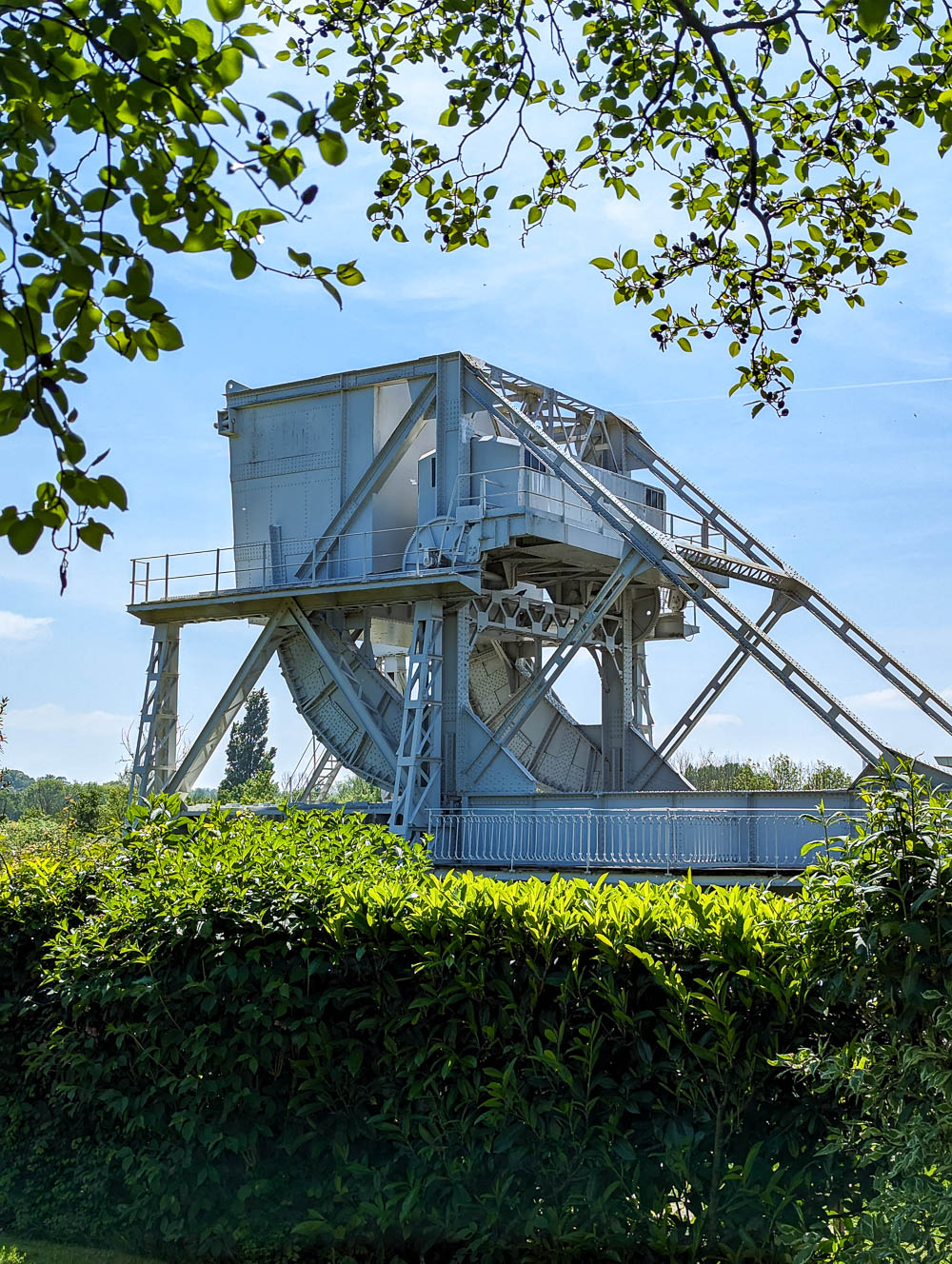
13. Memorial Pegasus
Memorial Pegasus is both a memorial and museum dedicated to the 6th Airborne Division of the British Army, also known as the “Red Berets.” This division’s D-Day mission (Operation Deadstick) was to prevent German counterattacks coming from the east. To accomplish this they had to:
- Capture, preserve, and prevent German troops from using the bridges over the Orne River and Caen Canal
- Neutralize the Merville battery (#15 on this list)
- To destroy the bridges over the Dives River
One of the major bridge objectives on D-Day was the Bénouville Bridge, later renamed Pegasus in honor of the division’s winged horse emblem. The taking of the Pegasus Bridge is another story featured in the movie The Longest Day.
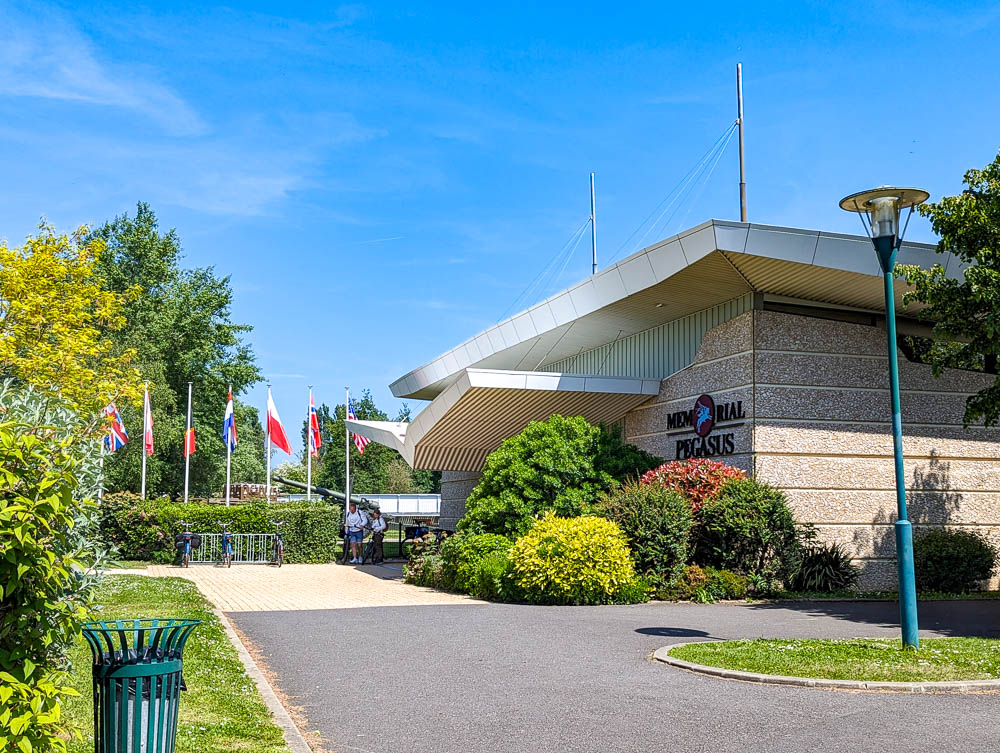
What to see at Memorial Pegasus
The Memorial Pegasus museum covers the capturing of the Pegasus Bridge as well as the personal stories behind it. It’s full of fantastic artifacts including a full-size replica of a Horsa glider—the most widely used glider by British troops.
There’s also an open-air section behind the museum that displays several vehicles, the glider replica, the remains of an original Horsa glider (which perfectly shows how fragile these things were), a handful of small exhibition areas, and—my favorite part—the original Pegasus Bridge.
The original Pegasus Bridge was replaced by a more modern version in 1994 and the original one taken by British troops is on display here at the museum. You can also check out a Bailey Bridge–a special kind of bridge that could be constructed on the fly to support heavy loads.
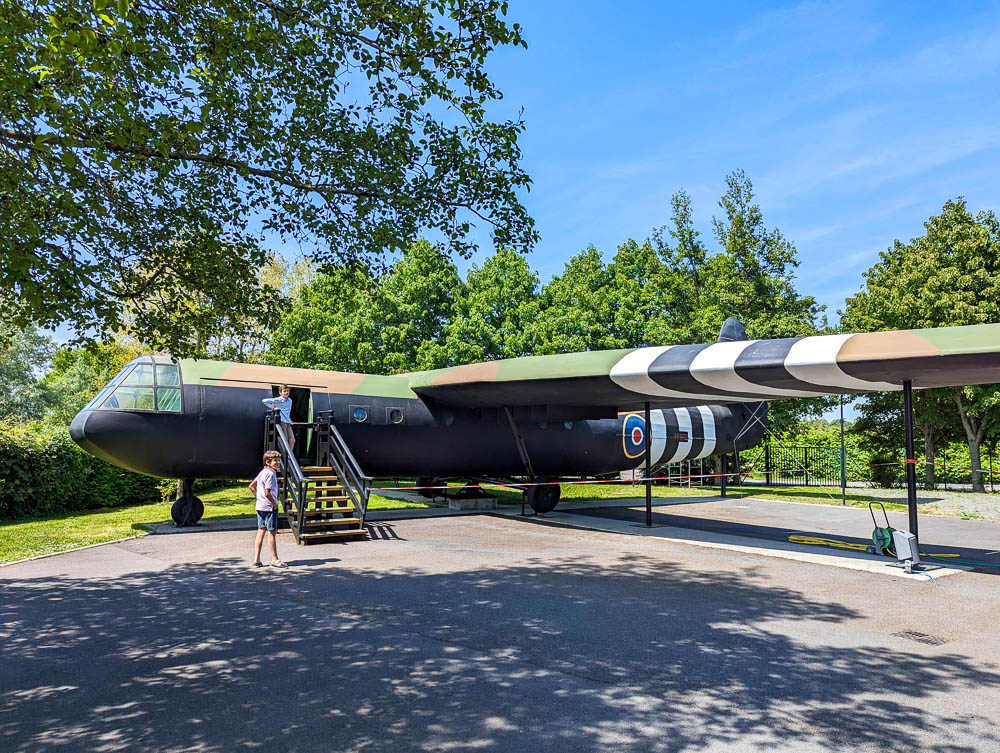
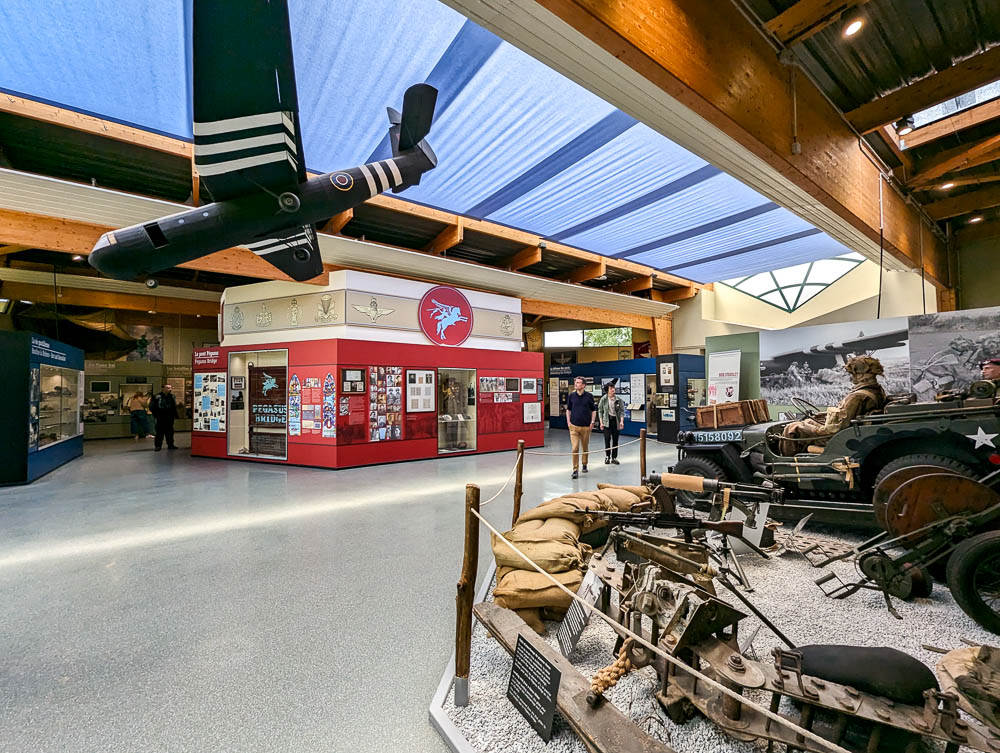
Why Memorial Pegasus is one of the must-see Normandy museums
I love the Memorial Pegasus museum because:
- You can visit the original bridges and structures
- It covers both the operation and the personal stories behind it really well
- There’s really a lot to see here, both indoors and out
- It’s nice to learn about one of the lesser-known operations of D-Day and World War II
- They have Bill Millin’s bagpipes on display! This is one of my favorite (weird) stories from WWII. (Read more about this in my post on Sword Beach WWII sites.)
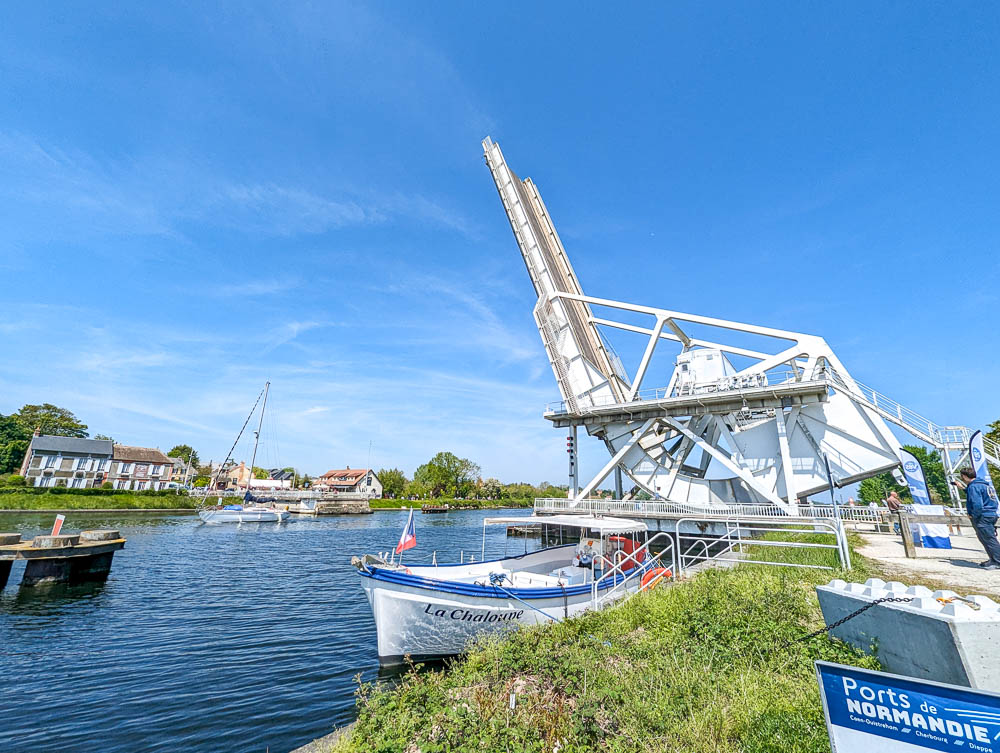
Memorial Pegasus: Need to know
Here are some helpful tips and things you should know for visiting the Memorial Pegasus museum:
About the bridge: The original Pegasus Bridge may have been replaced, but it was replaced with the same unique kind of bridge—a Scherzer rolling lift bascule bridge. Basically, it’s a drawbridge that rolls back on a curved structure, lifting up the entire road, instead of opening in the middle.
Even though the original is on display at the museum, the replacement is just a 2-minute walk from the museum’s entrance, in the original spot. This is such a cool bridge and definitely a kind I’ve never seen before. I was lucky enough to get to see it in action when both a super tall sailboat and a huge barge needed to pass. If you hear the alarms start blaring, get yourself over to the bridge to see how it works.

14. D-Day Experience
Located in the Utah Beach sector, the D-Day Experience museum is most well-known for its C-47 flight simulator (AKA, the “D-Day experience”). However, I feel the actual museum part of this place is one of the best.
As the name suggests, this museum focuses on giving you the “D-Day experience.” In other words, providing you with the information, personal stories, and historical artifacts you need to understand what it was like to participate in the D-Day invasions. And they do this in a variety of interesting ways!
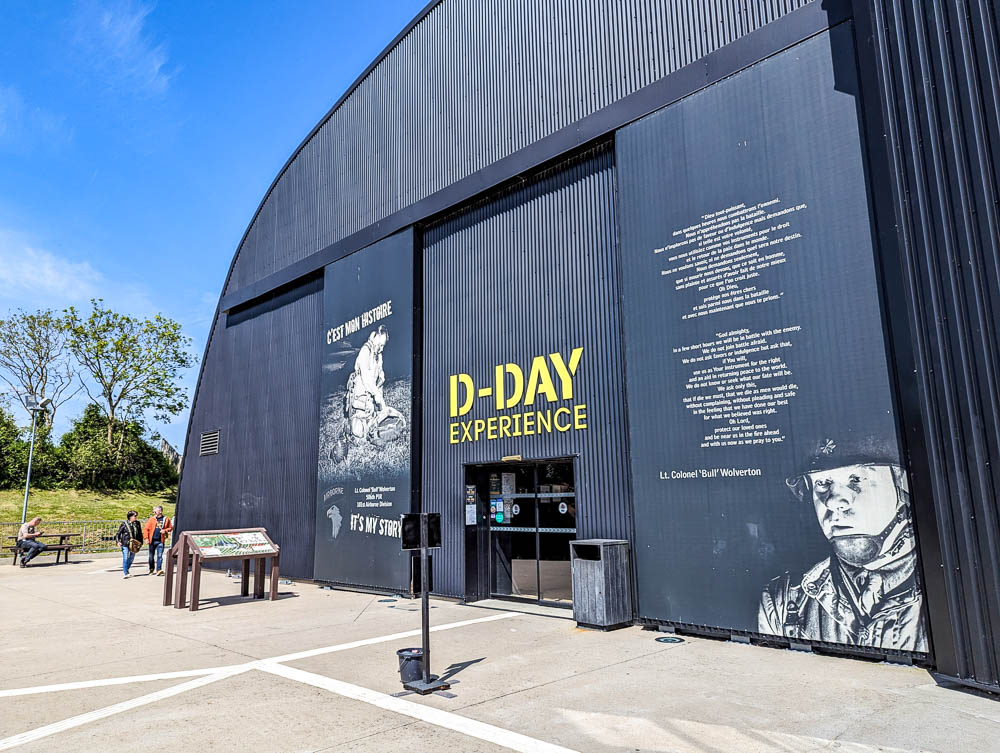
What to see at the D-Day Experience
During your visit to the D-Day Experience, don’t miss out on its many different offerings, like:
D-Day flight simulator – This 5-minute “ride” takes you aboard a genuine C-47 plane from WWII that’s been turned into a flight simulator so you can get a feel for what it was like to fly over the English Channel on D-Day.
The museum – The permanent exhibition here opened in 2019 and is dedicated to artifacts and stories related to the Normandy invasions with a special focus on the battle for Carentan. I really appreciate this museum for bringing a sincere personal touch to D-Day. (Bring your tissues, that’s all I’m saying.)
3D movie theater – Also opened in 2019, their giant-screen 3D movie theater shows a two-part film featuring the D-Day Normandy 1944 documentary and another on the battle of Carentan.
Outdoor spaces – You can see a Sherman tank and variety of artillery and defense pieces as well as a memorial wall in the outdoor areas around the museum.
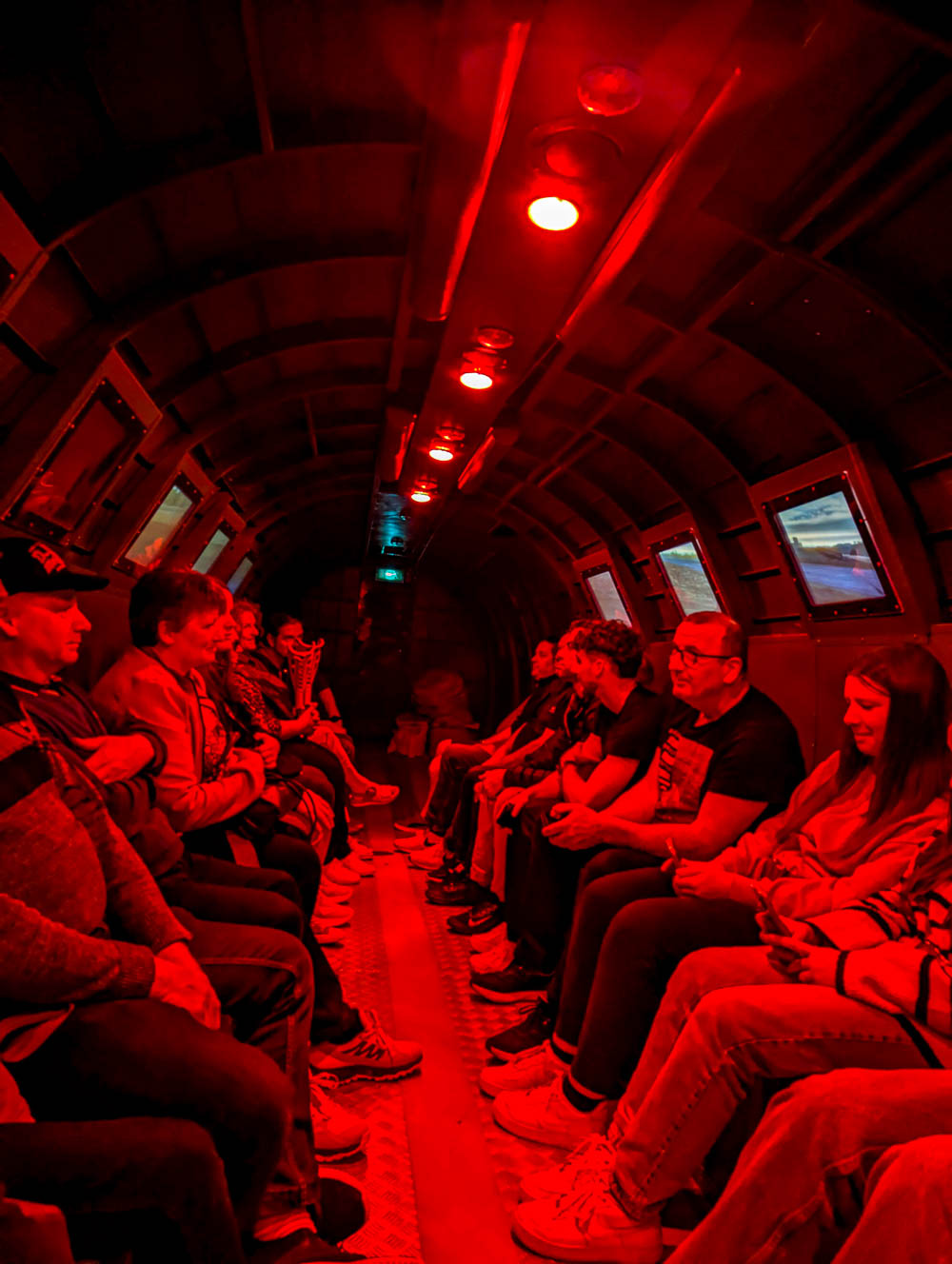
Why the D-Day Experience is one of the best Normandy museums
The D-Day Experience gets my vote for one of the best museums in Normandy because:
- The flight simulator is something totally unique in these parts.
- The personal stories behind the museum’s artifacts just give it something different you don’t get from other museums.
- The quality of artifacts here is way above average. Kudos!

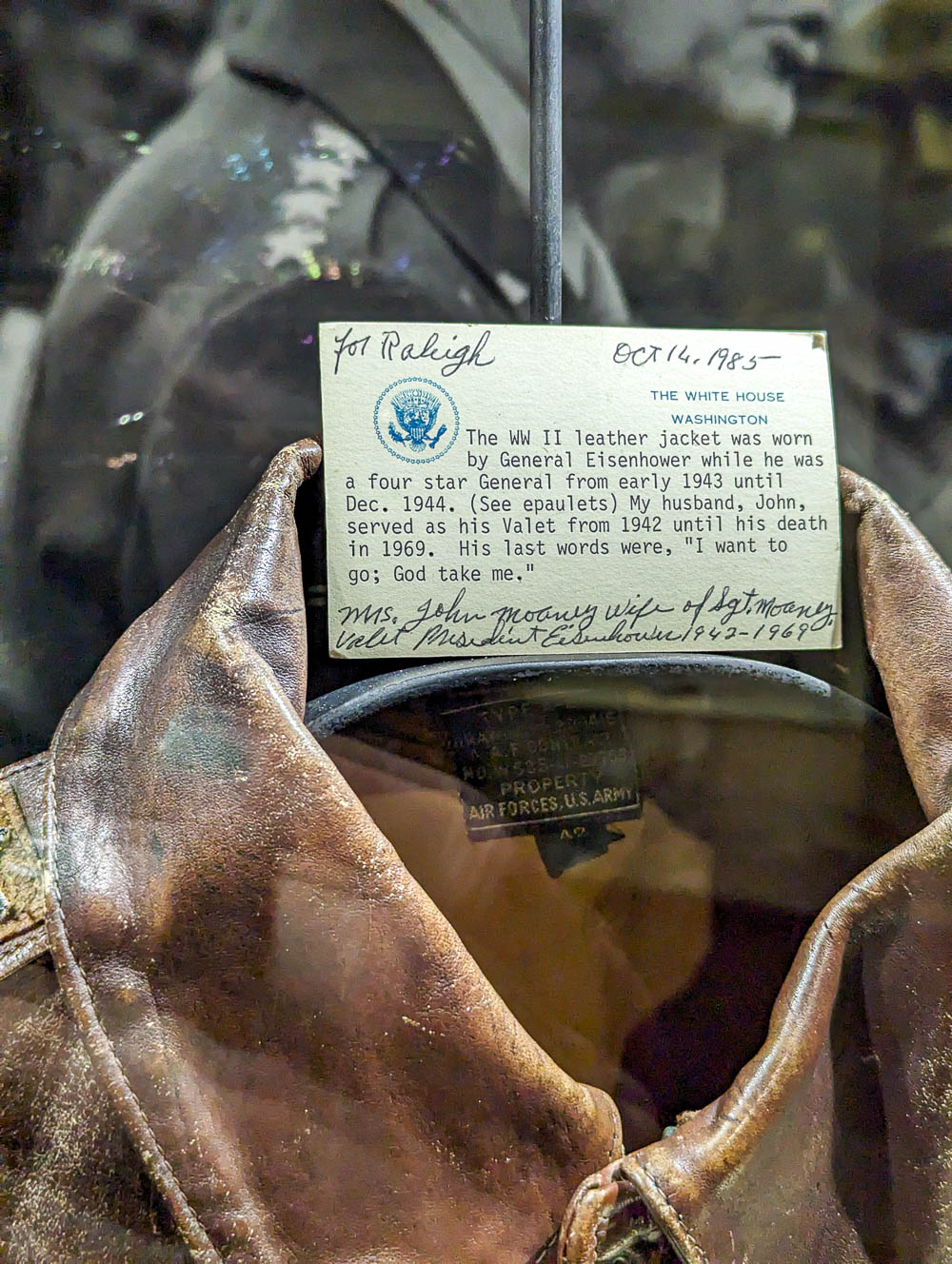
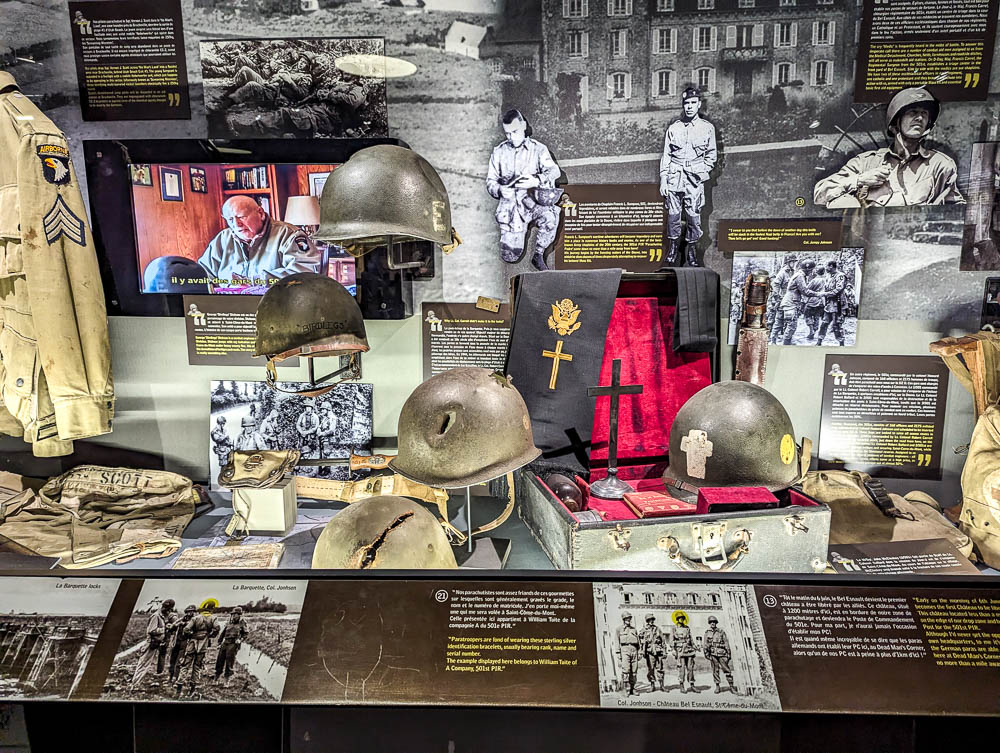
D-Day Experience: Need to know
Here are a few helpful tips and things to know for your visit to the D-Day Experience:
About the other museum: Included with your admission to the D-Day Experience is admission to the Dead Man’s Corner Museum. This small museum is located just next door in the former German paratrooper headquarters.
About the simulator: Yes, the D-Day flight simulator is neat, but don’t expect to be talking about it for years to come. It’s worth the extra few dollars to add it to your ticket, but it shouldn’t be the whole reason you come here. The museum here is fantastic so be sure to give it its due time in your itinerary!
My favorite part of the simulator experience is actually the stuff that happens beforehand. Before you board the plane, you first have to be briefed by Lieutenant Colonel Wolverton. I found this to be the most interesting and engaging part of the whole experience.
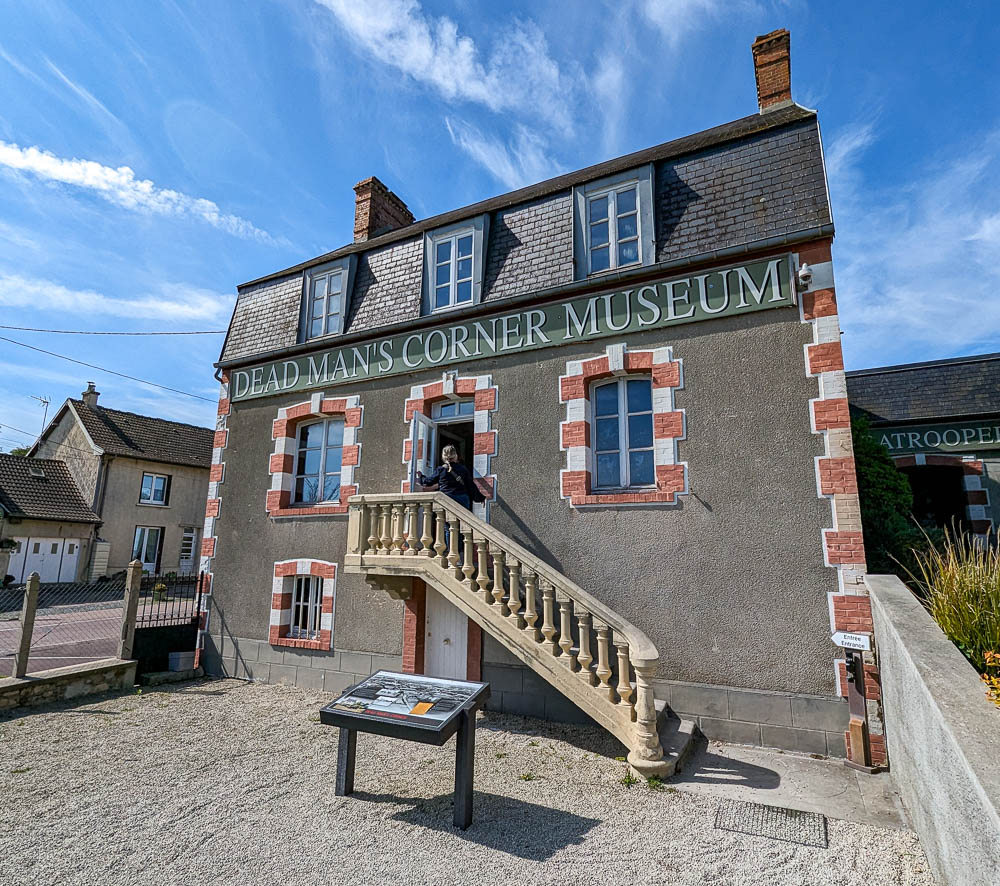
15. America & Gold Beach Museum
The America & Gold Beach Museum is actually comprised of two museums, the topics of which have virtually nothing to do with each other. (So yes, the name is quite confusing. Remember, Gold Beach was a British landing zone!) The two museums are:
America Museum – All about the US plane that crashed here in June 1927. Four American aviators were attempting to make the first mail flight from the US to France when their Fokker Tri-Motor (named “America”) crashed just off the beach here in bad weather. This museum centers around the men, the mail, and the meteorology related to this event.
Gold Beach Museum – All about the D-Day invasion and the landing of British troops on Gold Beach. You should definitely check out both museums while you’re here, but this is the one I’m focusing on.
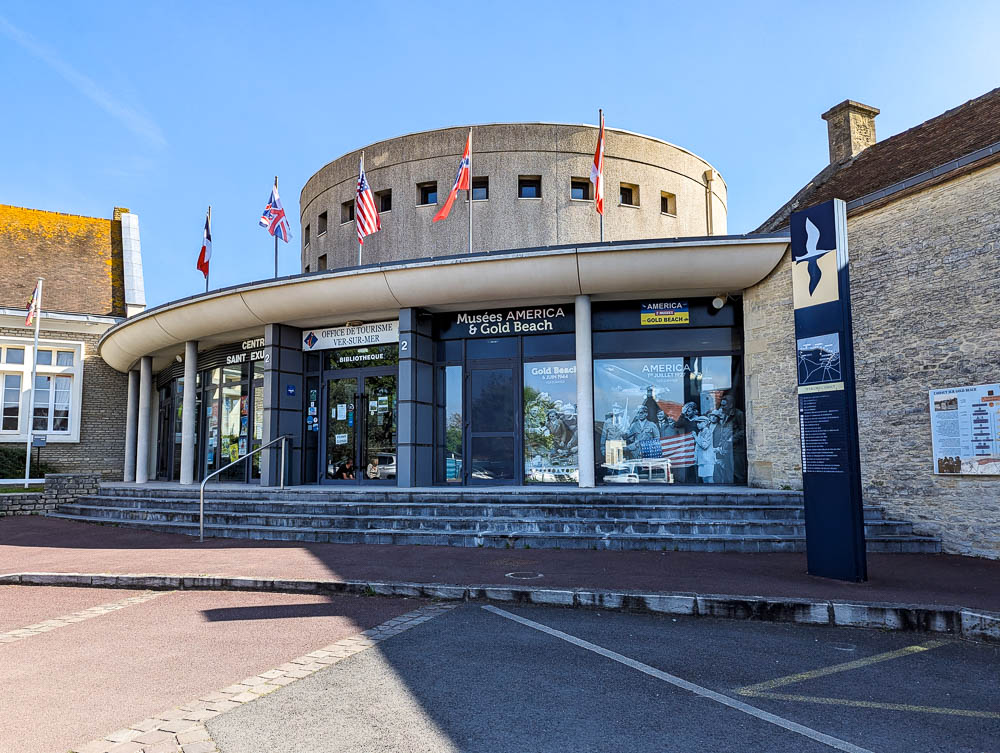
What to see at the Gold Beach Museum
In this small museum you’ll find everything you want to know about the Gold Beach side of things. There are dioramas to explain certain events, helpful illustrations, video footages, tons of historical photographs, and easy-to-follow displays of all kinds.
Why the Gold Beach Museum is one of Normandy’s best museums
I’ve officially dubbed the Gold Beach Museum one of the best I’ve ever visited in Normandy because:
- It offers the perfect combination of artifacts, information, descriptive dioramas, illustrations, photographs, and video footage. It doesn’t rely too heavily on one or omit others; it utilizes them all brilliantly.
- This museum is small but concise. No fancy bells and whistles like so many other museums that tend to distract from the material.
- It will only take you about 30-40 minutes to go through, but in that time you’ll learn everything you need to know. Not a lot of walking, no wasted time, no fluff.
- It’s not overwhelming or unorganized. It’s very easy to follow along and the information is easy to understand.
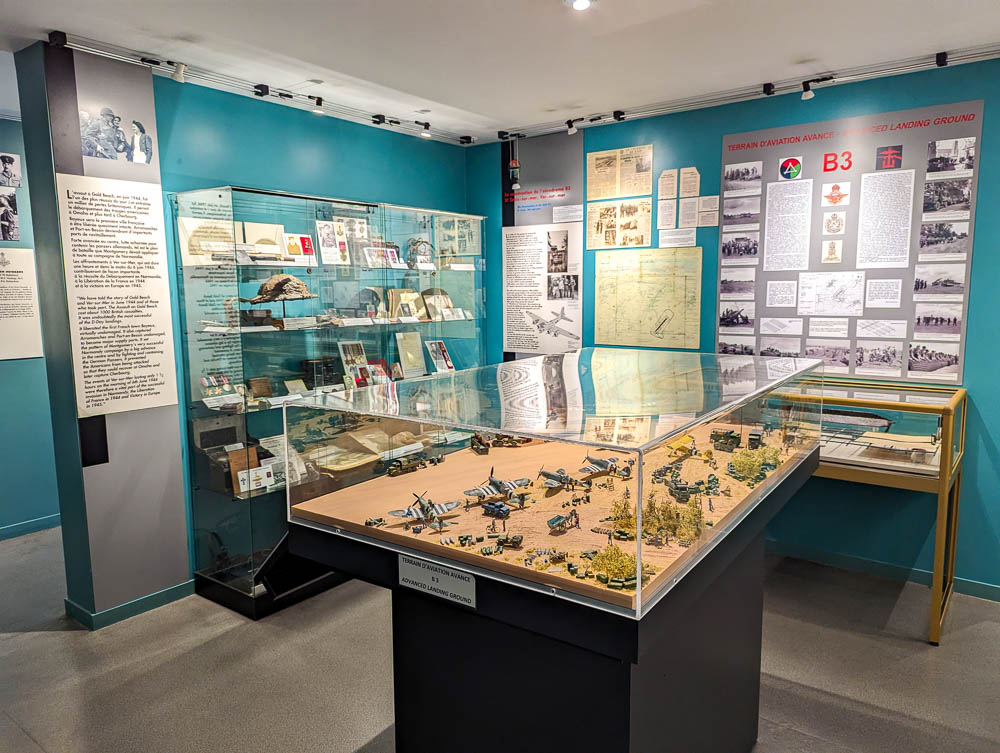
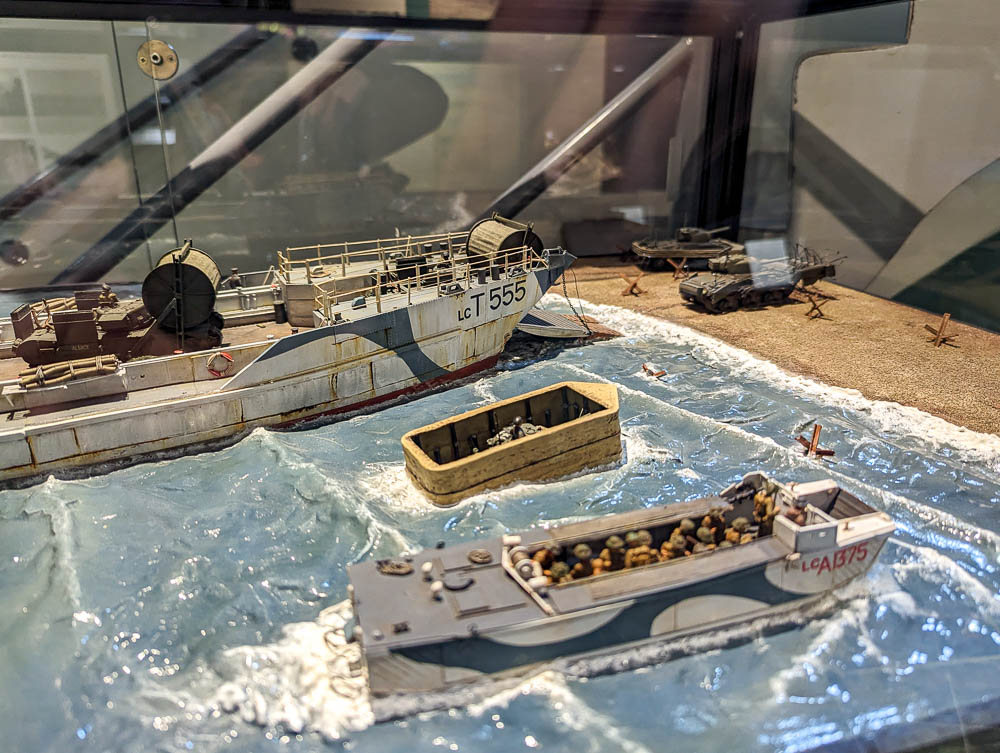
America & Gold Beach Museum: Need to know
About the museums: Again, this museum has nothing to do with American contributions to D-Day. Gold Beach was a British landing sector; the “America” part is completely unrelated to WWII. That being said, you should still check out the America section if you have time. Historical aviation is still cool no matter what. (Both museums are included in the ticket price anyway.)
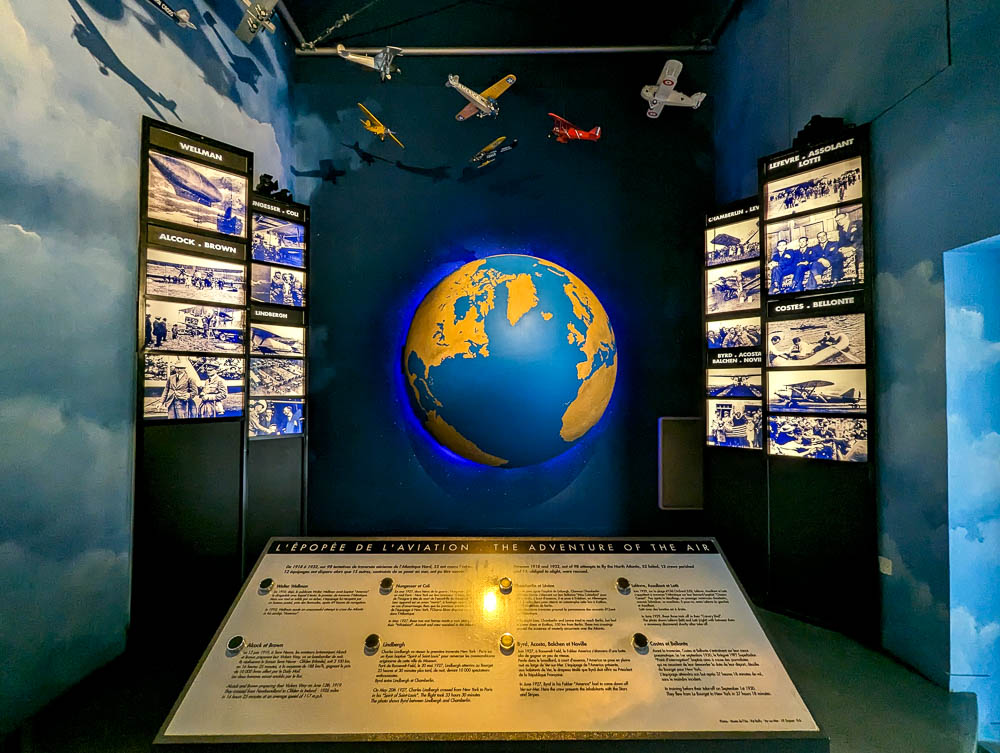
16. Museum and the Merville Battery Site
The Museum and Merville Battery Site is both a museum dedicated to the Merville battery and a memorial to the 9th Parachute Battalion of the British Army. The 9th’s mission on D-Day was to destroy the German battery at Merville before British troops could land on nearby Sword Beach.
What to see at the Merville Battery Site
At this museum you’ll be able to see the entire battery and gun casemates and learn all about the 9th Battalion and how they completed this mission. You’ll also see planes, tanks, and weaponry; the ammunition bunker and dormitories; and more.
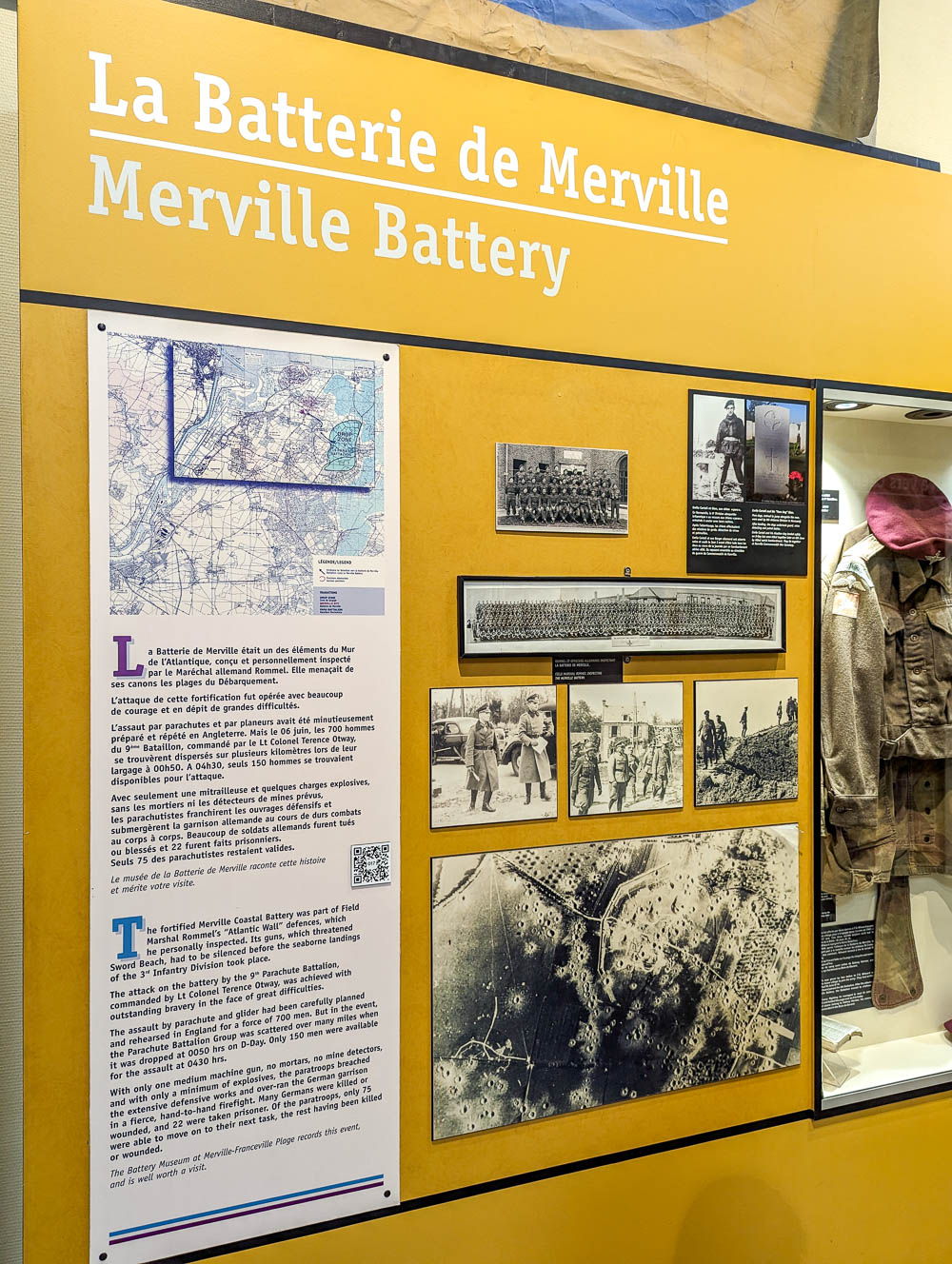
Why this is one of the best Normandy museums
Visitors love the Museum and Merville Battery site because:
- The entire museum is located within the concrete casemates which makes it an interesting way to learn about the Merville mission
- The displays are well laid-out and maintained
- You can sit inside the Douglas C-47 Dakota plane
- It serves as a great memorial to the 9th Parachute Battalion
Merville Battery Site: Need to know
About the show: In addition to the exhibits, every 20 minutes they present their “Sound and Light” show. Inside Pillbox 1, the museum recreates the (terrifying) events of D-Day using light and sound effects and even “odor spreaders.” So if you ever wanted to know what D-Day smelled like, here you go.
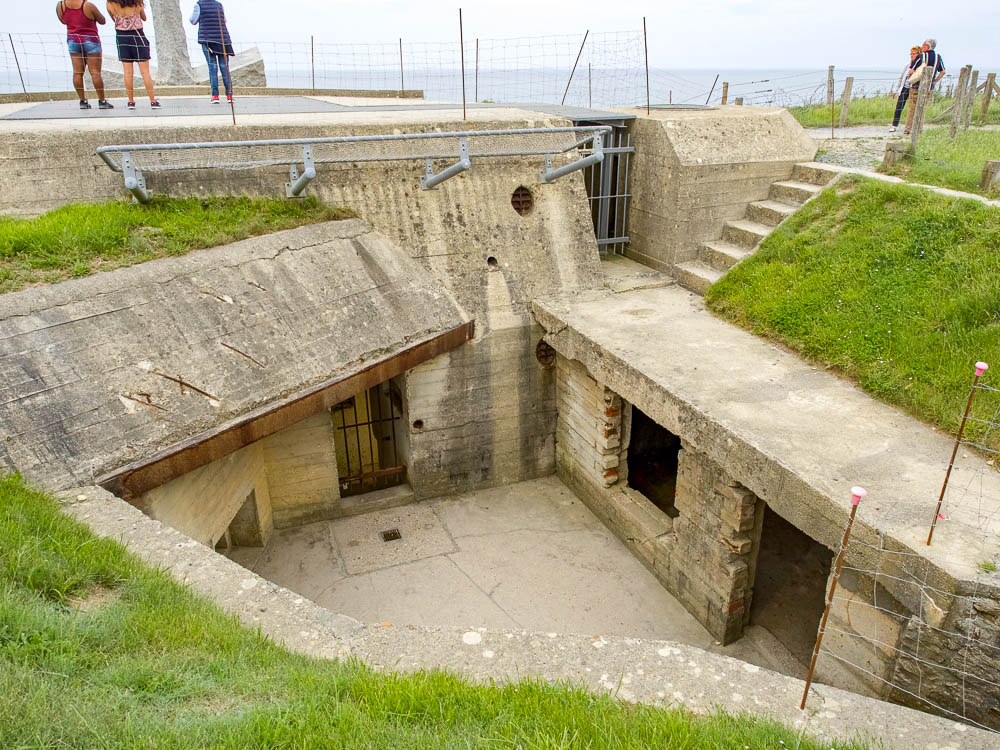
17. Memorial des Civils dans la Guerre (Falaise Memorial)
The Memorial des Civils dans la Guerre (known in English as the Civilians in Wartime Memorial and also known as the Falaise Memorial) is one of Normandy’s lesser-known museums, but I included it because of its unique view of World War II. It focuses on what life was like for Normandy’s civilian population during the war—a topic not typically covered in Normandy’s D-Day museums.
At this museum you’ll learn about how civilians in Normandy lived during and survived World War II. It was designed by the Mémorial de Caen (see #1 on this list) and opened in 2016 making it another of Normandy’s newer WWII museums.
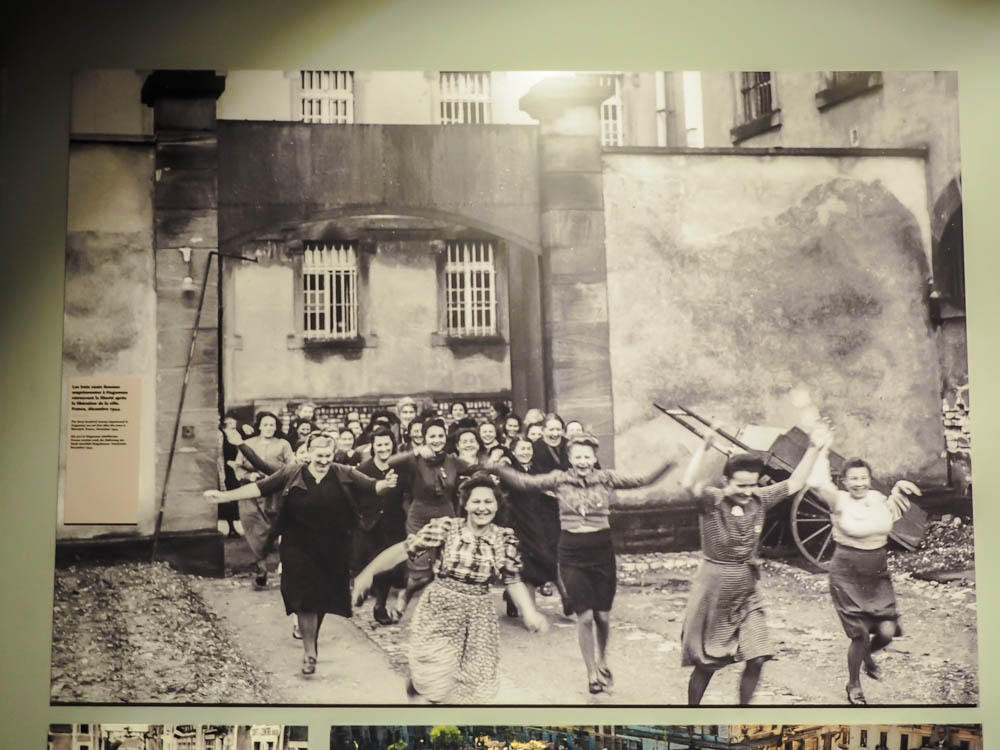
What to see at the Memorial des Civils dans la Guerre
Each floor of the museum covers a different topic. They are:
Ground floor: The Immersive Room
According to the official website, the ground floor of this memorial features an “exceptional film [that will] plunge you into the hell of the Second World War bombings.” And if that’s not how you want to spend your vacation in France, I don’t know what is.
1st floor: Civilians and Liberation
Many of Normandy’s towns were destroyed by the Allied bombing that preceding liberation (including 80% of the town of Falaise where this museum is located). This section explores the complex relationship between civilians and soldiers during that challenging time.
2nd floor: Civilians and the Occupation
This section focuses on the daily life of French citizens during the German occupation. It also covers topics of Norman resistance, Jewish persecution, and the exodus of 1940.
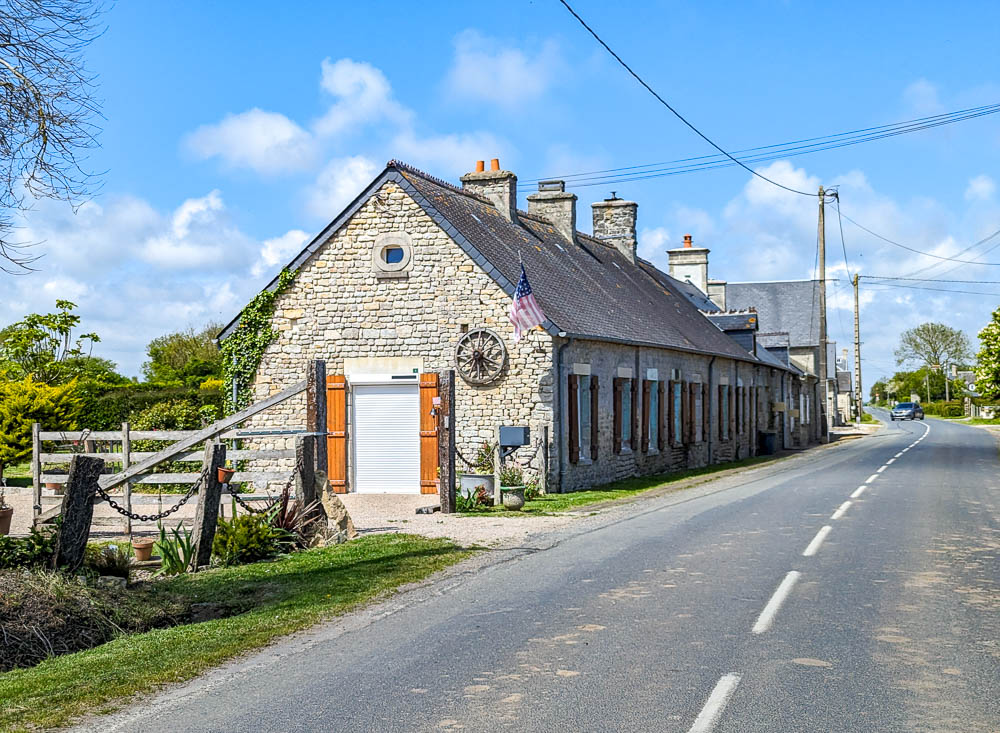
Why the Falaise Memorial is one of Normandy’s best museums
Visitors love the Falaise Memorial because:
- Listening to locals relay their experiences of the war is incredibly moving
- It gives you a chance to understand what civilian life was like during this time, something not many people know much about or fully appreciate
- The material is informative, yes, but also thought-provoking
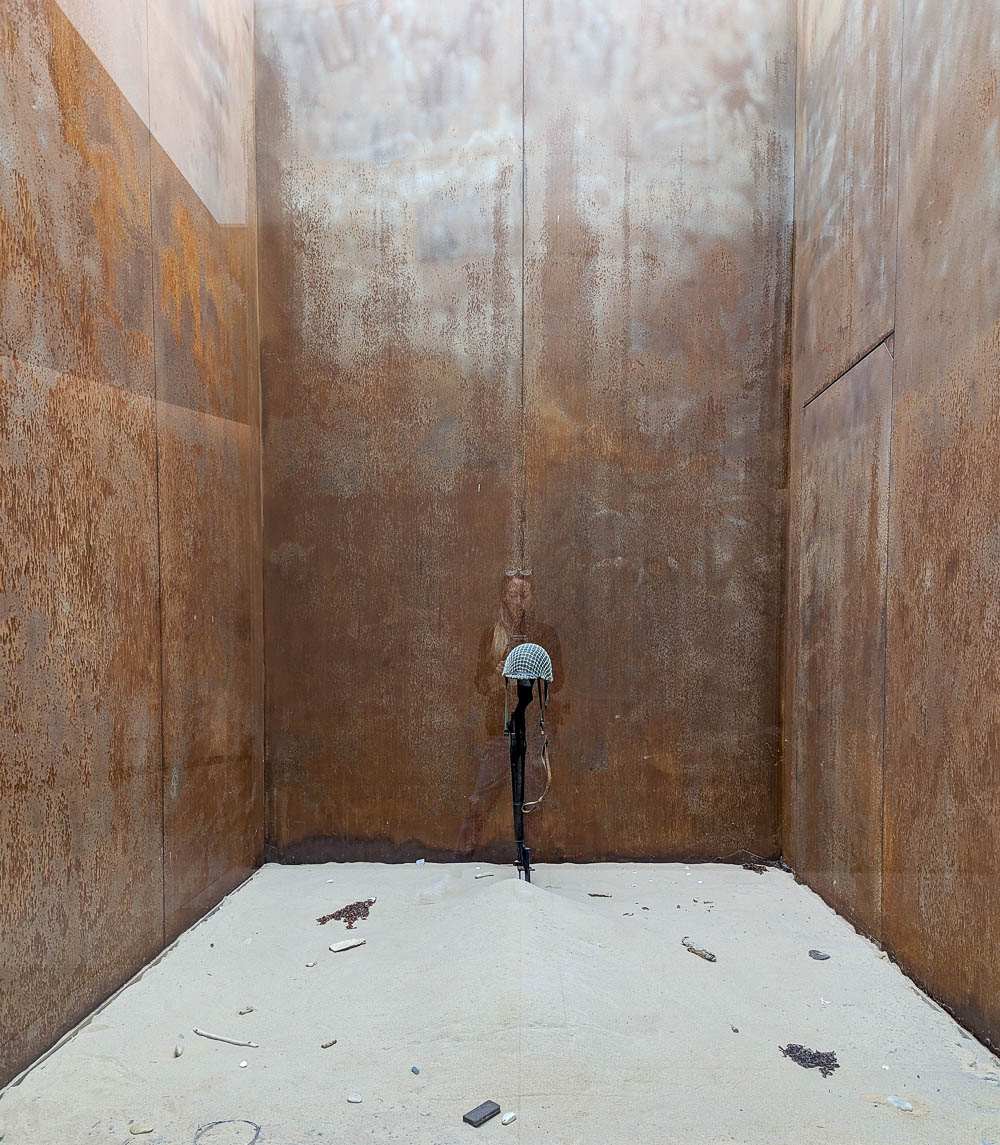
Best Normandy museums: Honorable mention
Here are a couple more great Normandy museums I want to share with you but that maybe don’t fit into this list. If you have the time, consider adding these to your itinerary:
18. Normandy American Cemetery Visitor Center
There’s a good chance you’ll be visiting the Normandy American Cemetery on your trip here, and when you do, be sure not to miss the visitor center. Inside you can get further information on the cemetery, ask your questions to the staff members at the info desk, and more. But go downstairs and you’ll find one of the best little museums in Normandy.
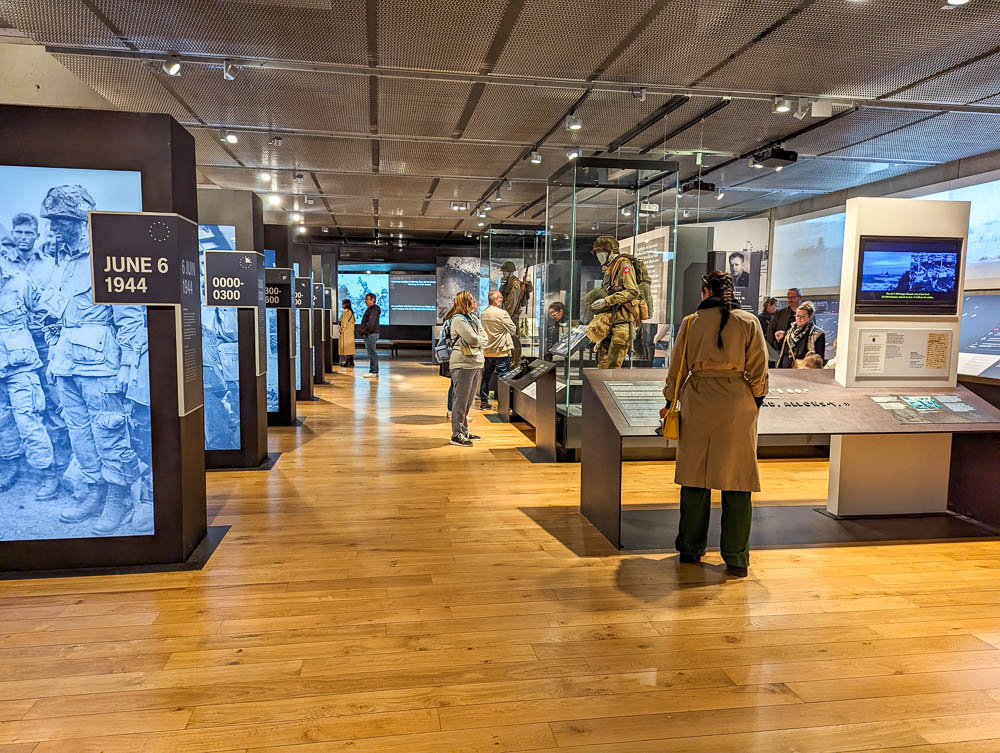
This museum takes you through the events of D-Day on an hour-by-hour basis. It’s mostly information driven but there are a good number of artifacts and some video footage as well. You’ll find some moving memorials down here too.
This museum is virtually hidden and, with so much other stuff going on here, it would be easy to miss. (I missed it completely on my first visit here.)
Need to know:
- This museum is totally free to visit.
- You’ll have to go through airport-like security to enter the visitor center—i.e., metal detectors for you and an x-ray scan for your personal property.
- You can find all visitor information here: abmc.gov/normandy.
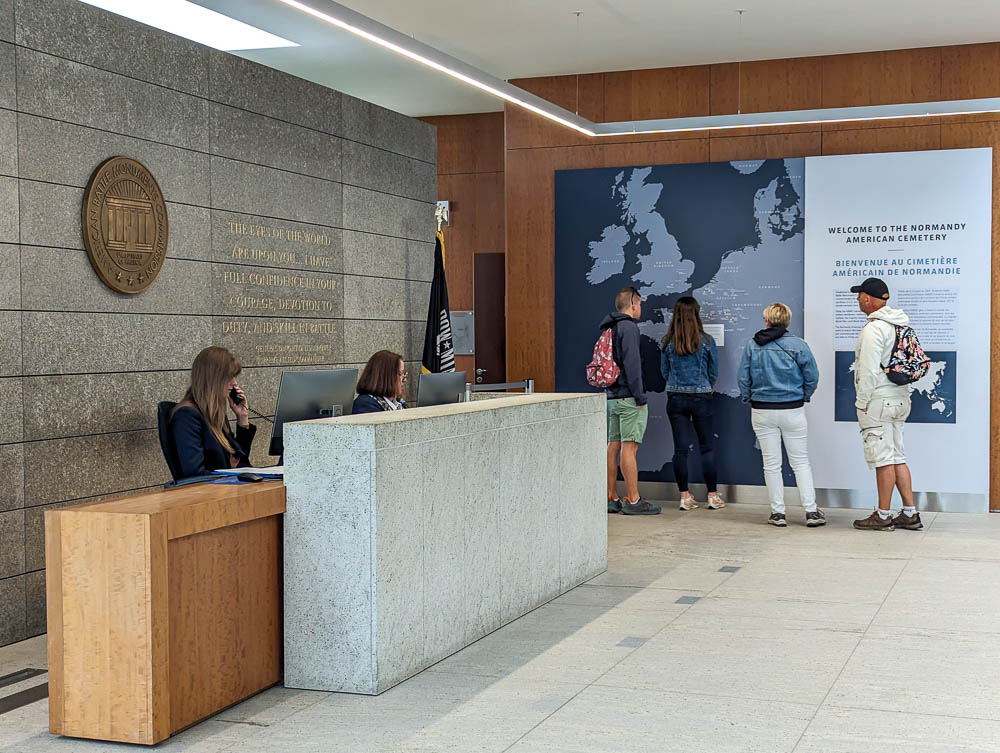
19. Bayeux Tapestry Museum
It’s true; this museum has nothing to do with D-Day but I’m putting it on this list anyway given its relevance to World War II.
The Bayeux Tapestry is a 230-foot-long embroidered cloth from the 11th century that depicts the events leading up to the Norman conquest of England. But the reason I’m telling you about it is because this was one of the most coveted works of art by Nazi looters. (Specifically, Heinrich Himmler who wanted to hang it on the walls of the castle he also just stole.) Because, not only is it a priceless national treasure, they also believed it reveals medieval evidence of Germanic supremacy. [source]
As such, the Bayeux Tapestry is one of the most important artworks in The Monuments Men—the preeminent book on the Allied recovery mission of Nazi stolen art. (There’s a movie too, but the book is so much better!) This is a topic I find especially interesting so it was an honor getting to see it in person.

The Tapestry is now back home on display at the Bayeux Museum and I find the way it’s displayed (and the accompanying audio guide) to be one of the most interesting museum experiences. Definitely check it out if you have the time.
Need to know:
- You can get a combination ticket for this museum and the Battle of Normandy Museum (#9 on this list) to save some money. Buy this at whichever museum you stop at first.
- If you just want to see the Tapestry and skip the rest of the stuff in the museum, plan to spend about 30 minutes there.
- The Tapestry Museum will be closed for renovations from September 2025-2027.
- You can find all visitor information here: bayeuxmuseum.com
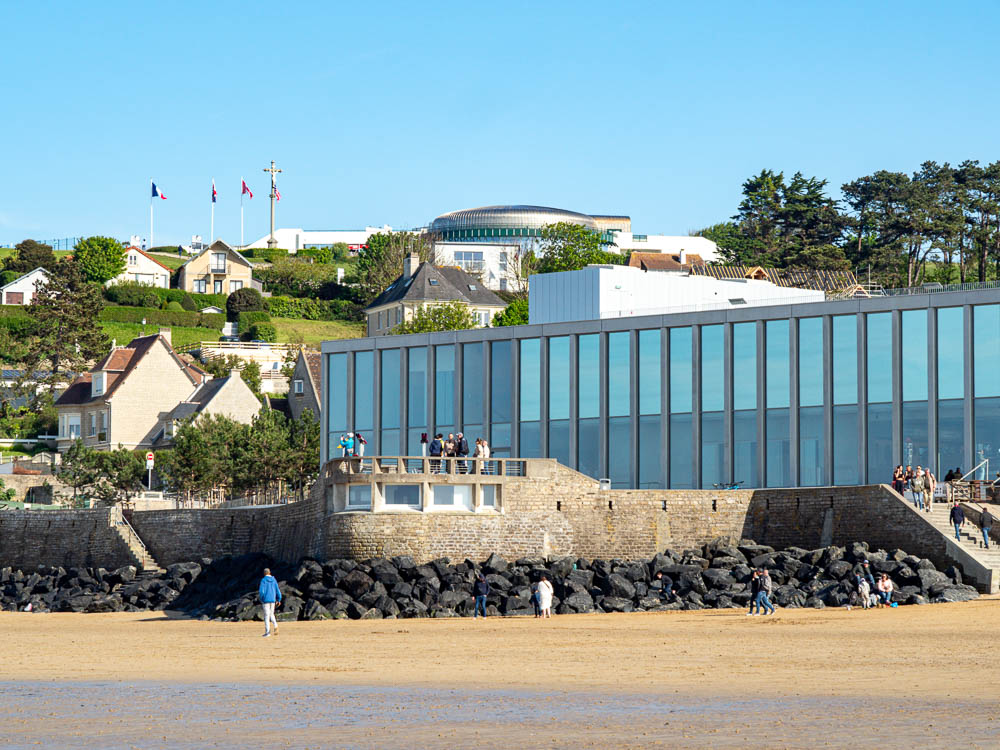
More info for your visit to the best Normandy museums
- Hotels: Find great places to stay here on Booking.com (my personal favorite). Expedia and Hotels.com usually have good deals too. VRBO is best for rental properties.
- Rental cars: Check out the best local rental car deals here.
- For Normandy tours: Check out the best local options and the best day tours from Paris here.
- Travel planning: Pick up a Normandy guidebook and this super helpful France customs and culture guide.
- Be sure to watch Saving Private Ryan, The Longest Day, and Band of Brothers before your visit!
- What else have I covered in France? Check out my France archives.
Like this post? Have questions about visiting any of these Normandy museums? Let me know in the comments below. Have fun in France!

Save this info, pin this image:
